
Look, I’ll spoil it upfront (headline included): The Suunto Race is easily the best watch Suunto has ever made. It’s not even close. Of course, that doesn’t mean it’s perfect. For those details, you’ve got nearly 10,000 more words to go through. But what Suunto has done is seemingly turn the page from the pivot point of the Suunto Vertical this past spring, to a watch that’s more aligned with display preferences going forward, all while adding boatloads of new features at a price of merely $449.
And it’d be easy to dismiss this as just an “AMOLED Suunto Vertical”, because in some ways, that’s true. But behind that brilliant new display is a ton of new features, a new user interface, better app integration, and a watch that’s priced so aggressively I had initially presumed they wrote the price down wrong.
The watch has been on my wrist now for more than a month, including a 60KM/12hr hike two weeks ago, as well as a bit of time this past summer in the Alps on a long adventure. In doing so I’ve got a pretty good idea of where it works well, and where it stumbles (and sometimes falls off the metaphorical cliff).
Finally, note that Suunto provided a media loaner Suunto Race watch to test. As usual, I’ll get that back to them here shortly. I’ll go out and pick up my own to continue testing the new features once they arrive. If you found this review useful, you can use the links at the bottom, or consider becoming a DCR Supporter, which makes the site ad-free, while also getting access to a mostly weekly video series behind the scenes of the DCR Cave. And of course, it makes you awesome.
With that, let’s talk newness.
What’s New:
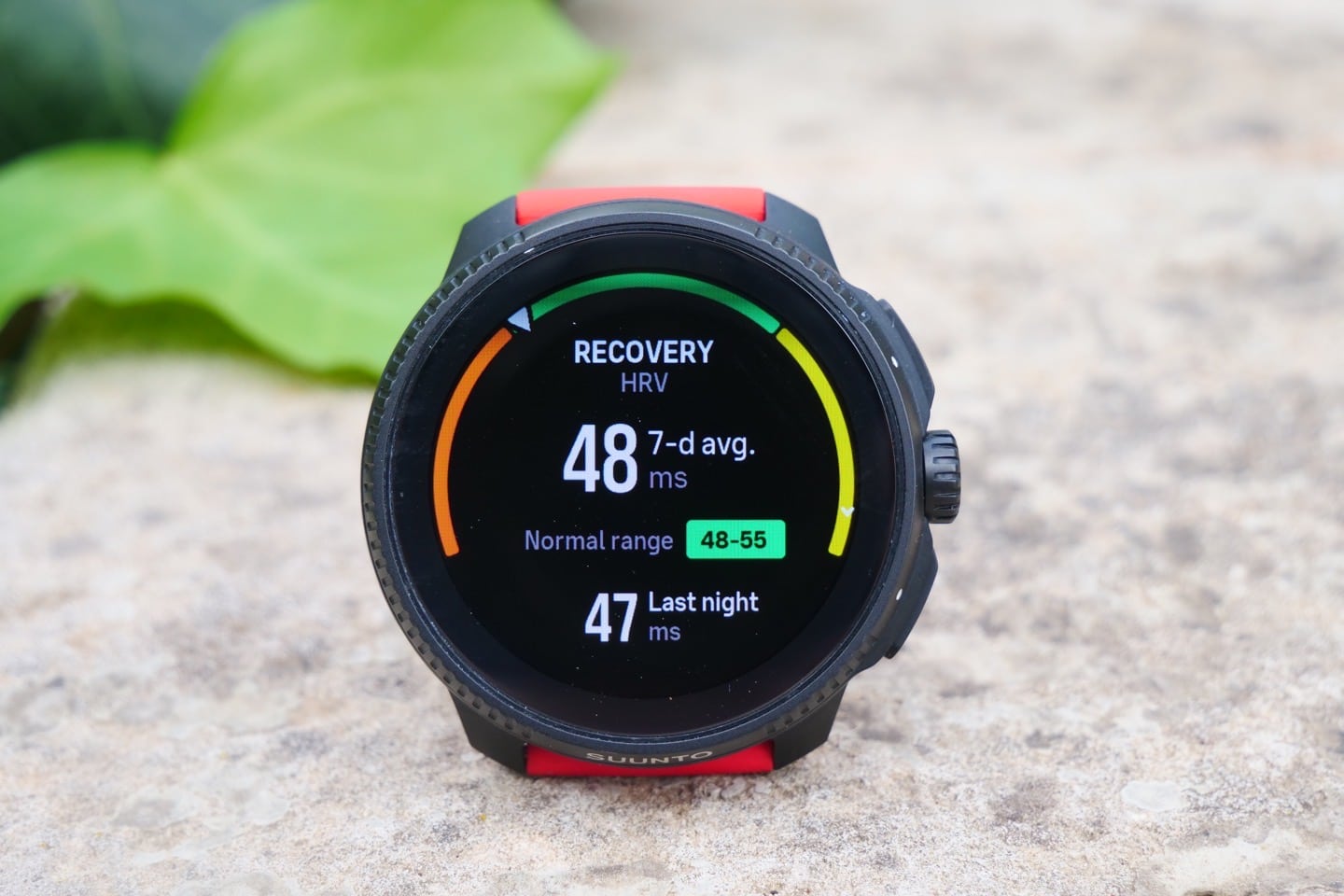
Ok, let’s take a look at what’s new/different about the Suunto Race. In this case, I’m largely comparing it to the Suunto Vertical, albeit that’s sorta more like a sibling. That unit is also getting all of the software-focused features here too. Either way, this helps differentiate a bit when it comes to the hardware pieces.
So, here’s what’s on the Suunto Race:
– New 1.43” AMOLED touch screen, 466x466px at 1,000 nits
– GPS battery lifetime starting at 40hrs in multiband/dual-frequency (and up to 120 hours in ‘Tour’ mode).
– Standby/smartwatch battery life of 12 days in gesture-based display mode, or 7 days in always-on display mode
– Adds digital crown
– Adds new nightly HRV tracking, as well as HRV trending features
– Adds Suunto Coach integration with aforementioned HRV tracking (will give guidance inclusive of HRV changes)
– Adds workout planner to the watch itself (plus mobile app and TrainingPeaks)
– Adds Training widget/watch face with TSB/CTL/HRV
– Adds new daily companion, new daily widgets, new mini widgets
– Adds sleep stages shown on-watch
– Adds ability to do multiple alarms (e.g., wake-up alarms)
– Adds ‘Find my Phone’ functionality
– Adds ‘Stand-up’ reminder
– Adds ‘Progress’ running race estimates & HR run threshold
– Adds new sport mode…umm…Rope Skipping
– Adds customization of the widgets
– Adds do-not-disturb mode
– Improved music control touch controls (for controlling phone music)
– First Suunto watch using fully in-house algorithms, transitioned away from FirstBeat algorithms
– Retains existing snorkeling depth gauge features, with existing 100m rating
– 22mm industry standard strap (silicon strap included in the box)
– Retains/has military durability specifications
– Two model options: Titanium ($549/EUR) or Stainless steel ($449/EUR)
– Titanium has 32GB of storage, and stainless steel has 16GB.
– Sapphire crystal display on both models
– Weight comes in at a claimed 69g for titanium, and 84g for stainless steel
Now, in addition to all the above built-in features, there’s also the newly released Suunto-developed slate of a dozen+ app functions, back in September. While most other companies have built these features into the watch natively, Suunto still has these technically as apps that run optionally on the watch. Thus normally, for other companies, I’d probably include them in this list, and it’d be a heck of a lot longer list. But alas, since they aren’t part of the native watch firmware (yet), I’ll refer you to that dedicated post from back then. But this does include components like nutrition reminders, race companion apps, waypoint apps, altitude profile apps, race elevation apps, and more.
Also, in case you’re wondering, existing Suunto customers will get most of these updates, per this chart here.
In the Box:
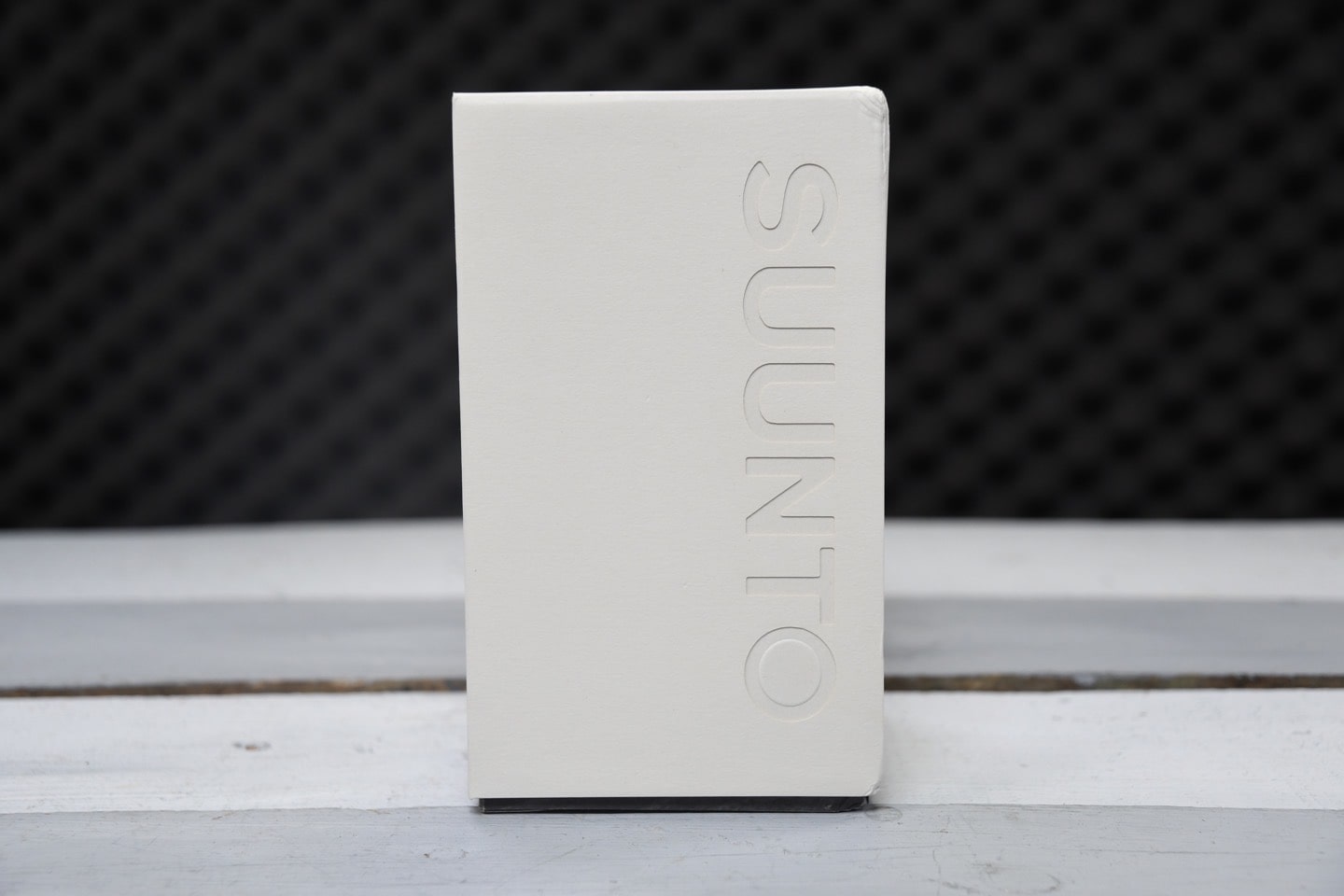
The Suunto Race comes in a rather tall box, as seen above, and here, below. Admittedly, it is a very pretty box.
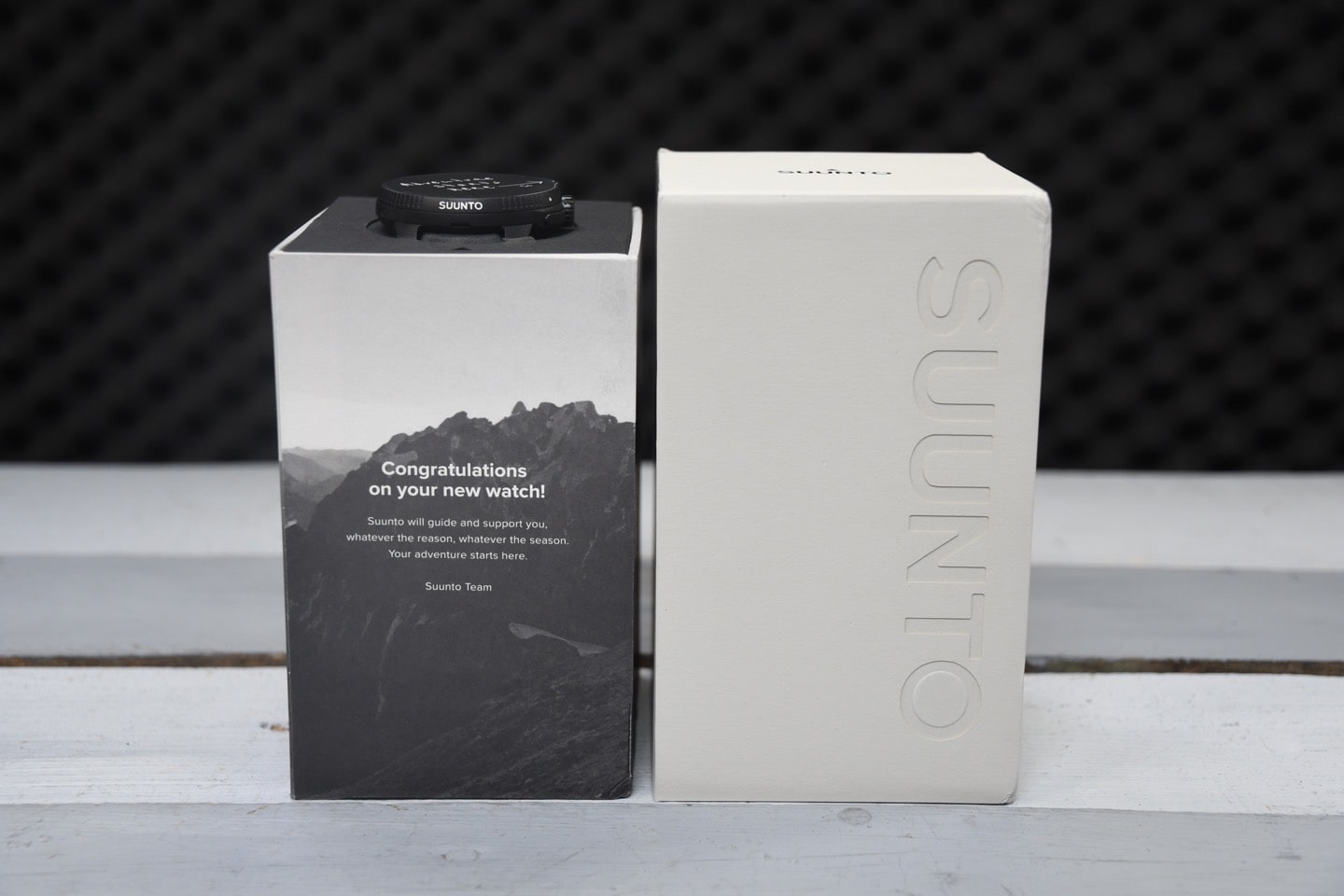
But, as I said in my initial preview, it’s a huge waste of space. The vast majority of this tall skyscraper of a box is empty, with the watch contents (manual/charging cable) only taking up about half the space at best. Thus, my criticism here is for a company that’s focused so much on sustainability in their messaging, this isn’t that. On the bright side, slice off the bottom of the mountain, nobody notices, and it still looks really cool.
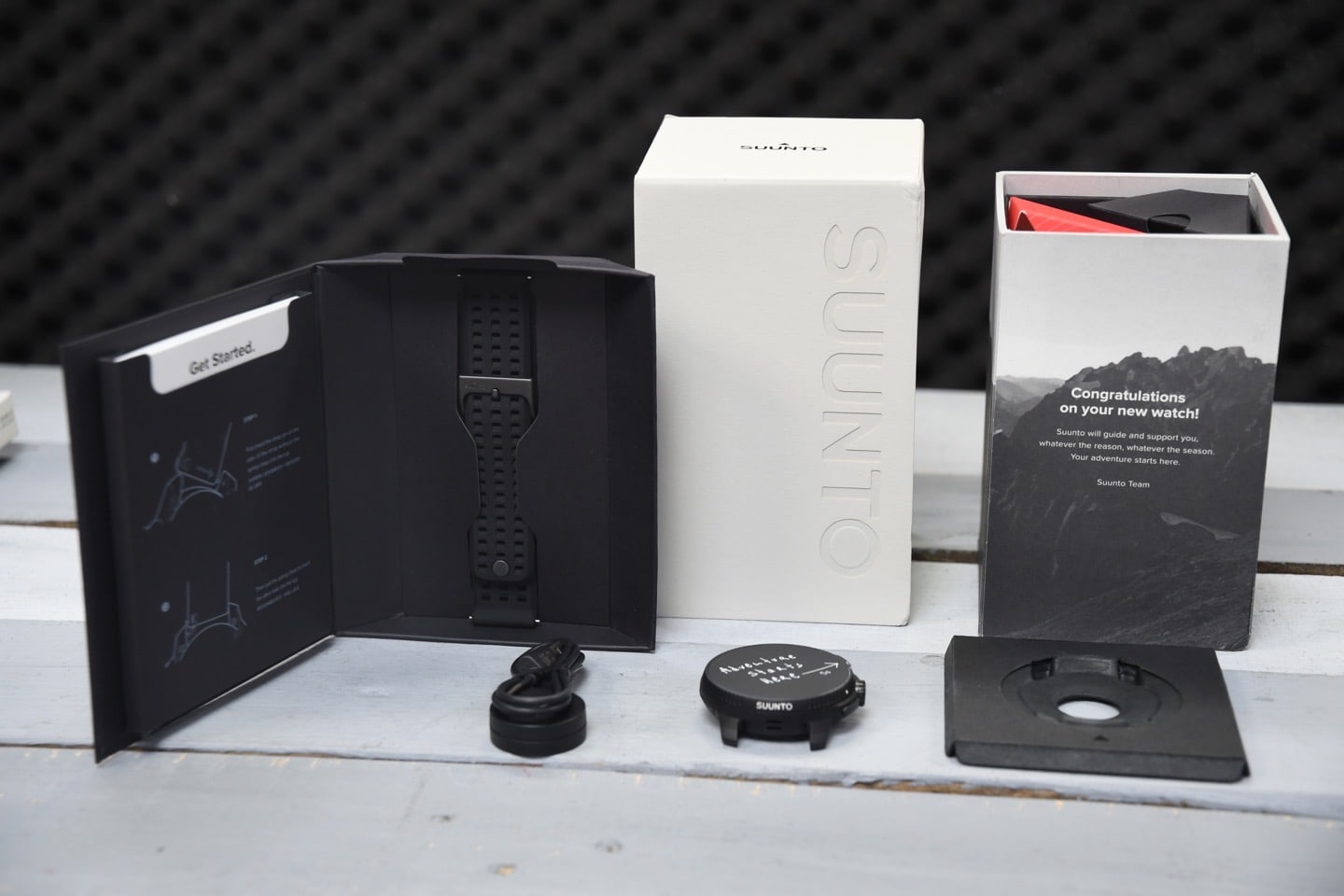
In any case, below are your box components. They include the magnet charging cable (albeit, still USB-C), the watch, the straps/bands, and some paper stuff.
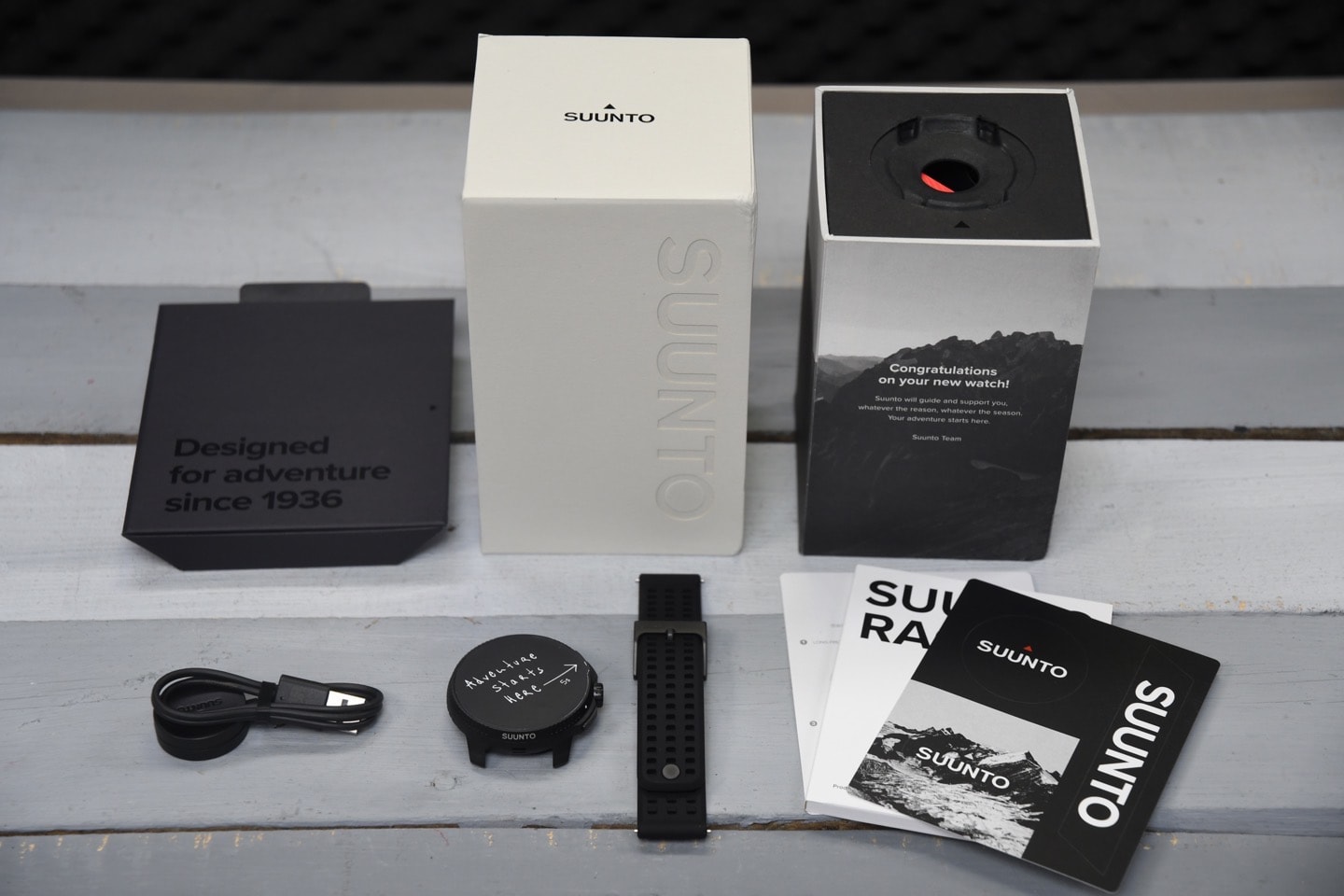
Here’s a closer look at each of those:
From a sizing standpoint, here’s how things compare to the Polar Vantage V3 and Garmin Forerunner 965, which are its main competitors:
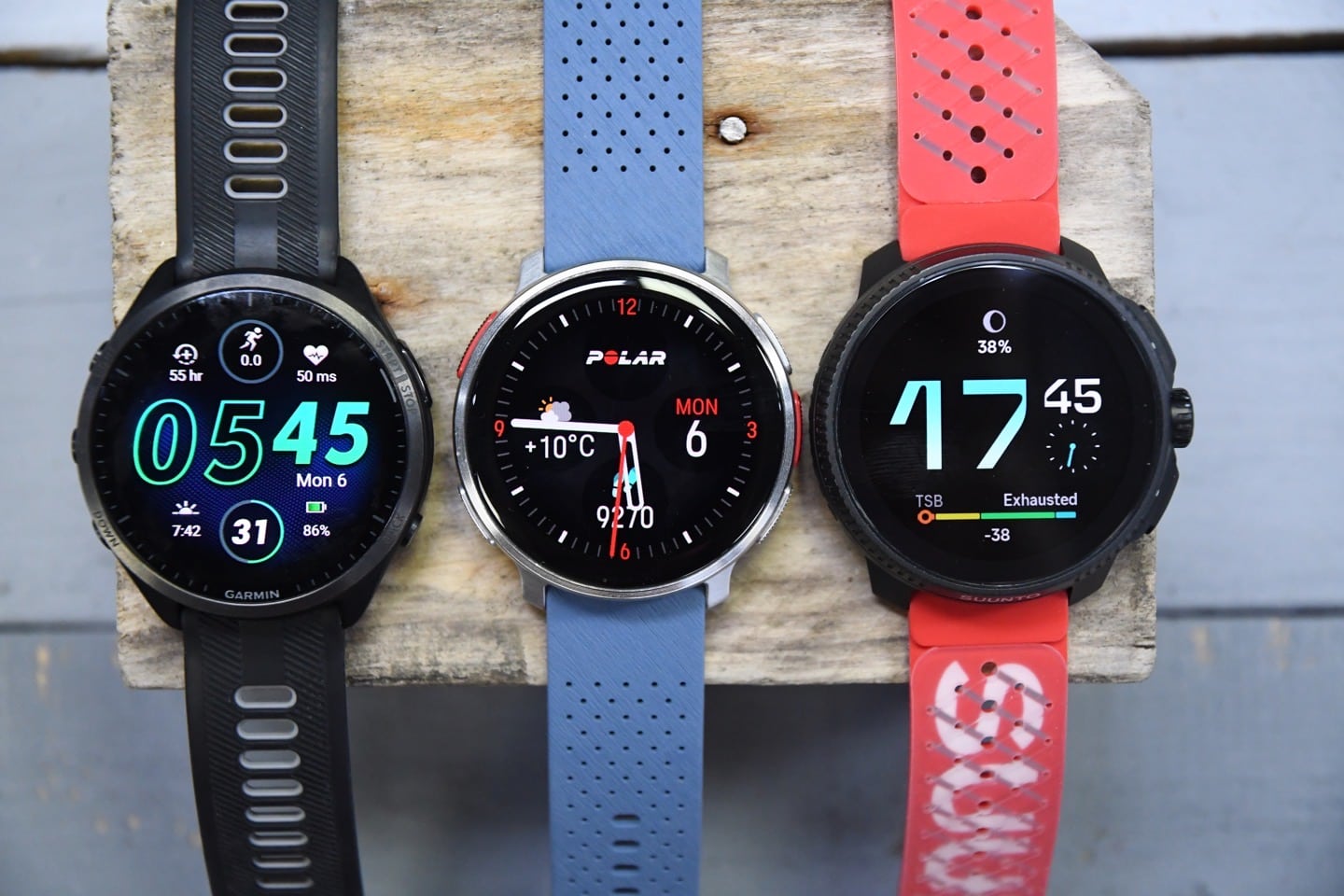
And here’s the thickness of them. In the case of the Suunto Race, it doesn’t lie-flat as well because the lugs point downward, which would normally curve around your wrist. The actual watch pod portion is basically the same thickness as the others.
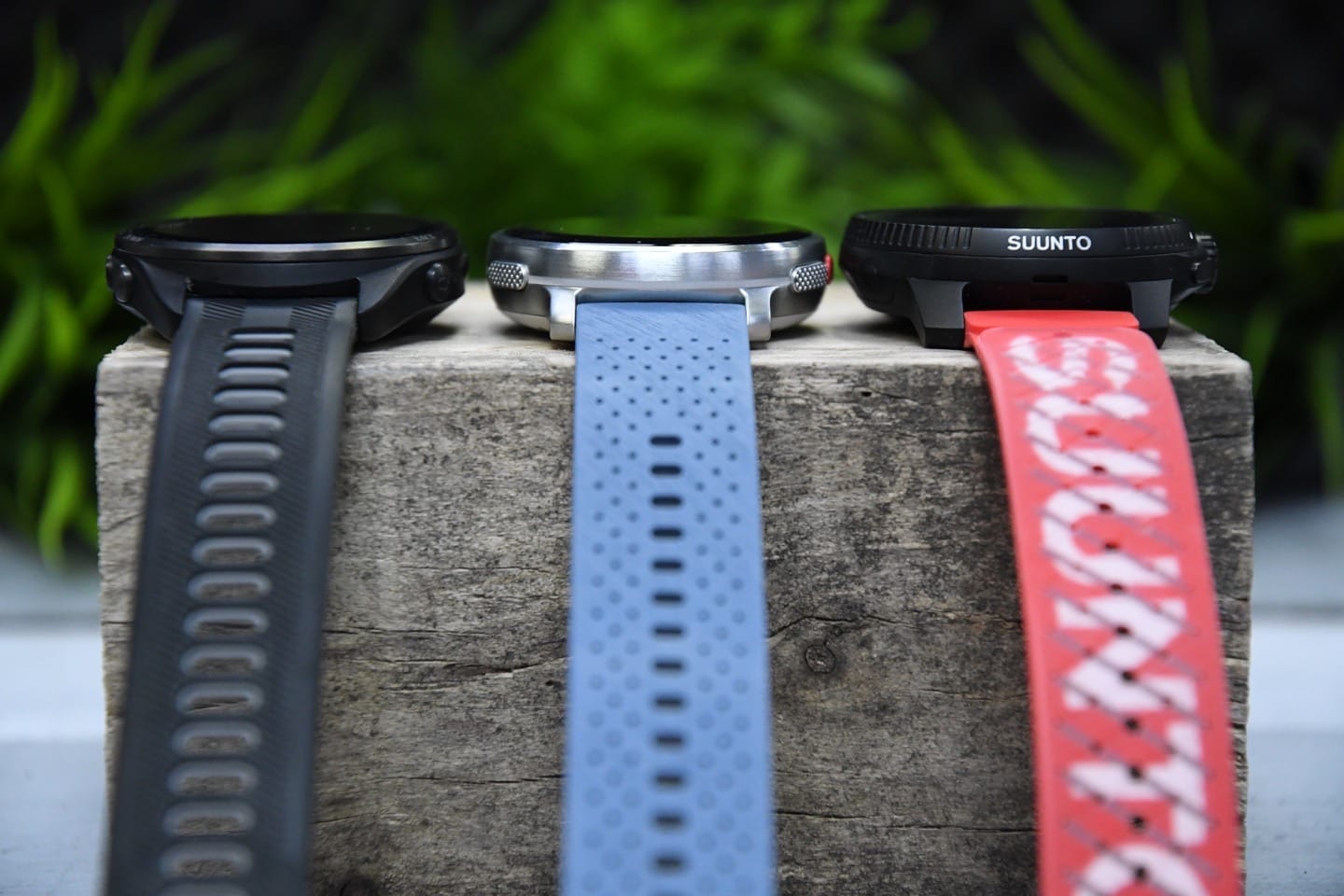
Alternatively, here’s a set including the Suunto Vertical and the Garmin Epix Pro:
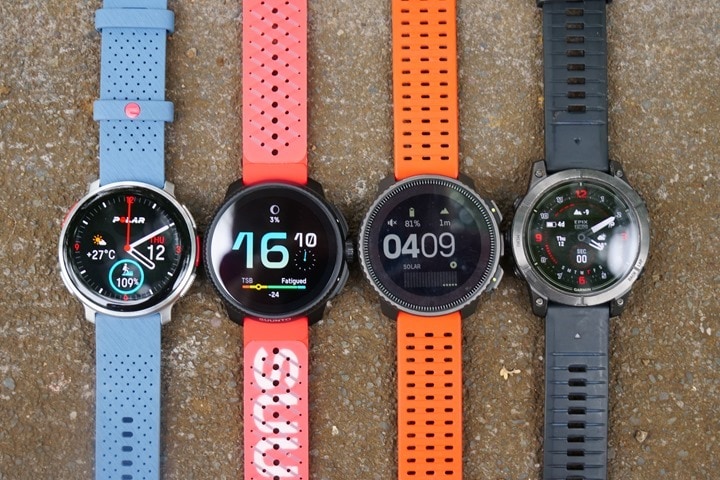
And the side shot:
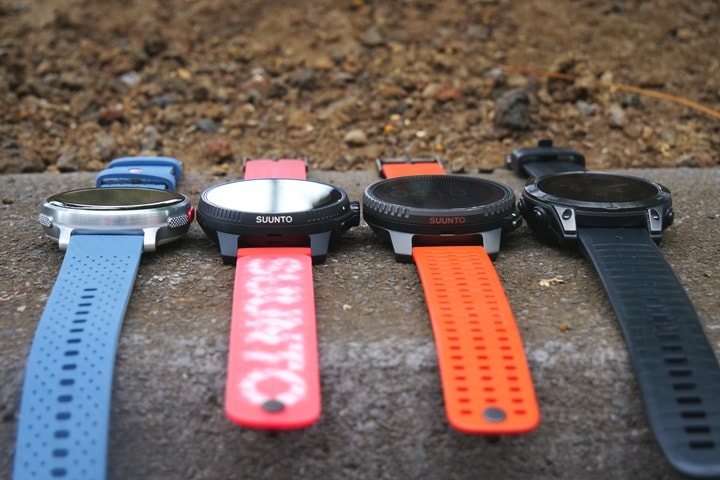
Note, for the majority of this review I swapped to the red bands, versus the stock/included black band. More on those in the next section.
The Basics:
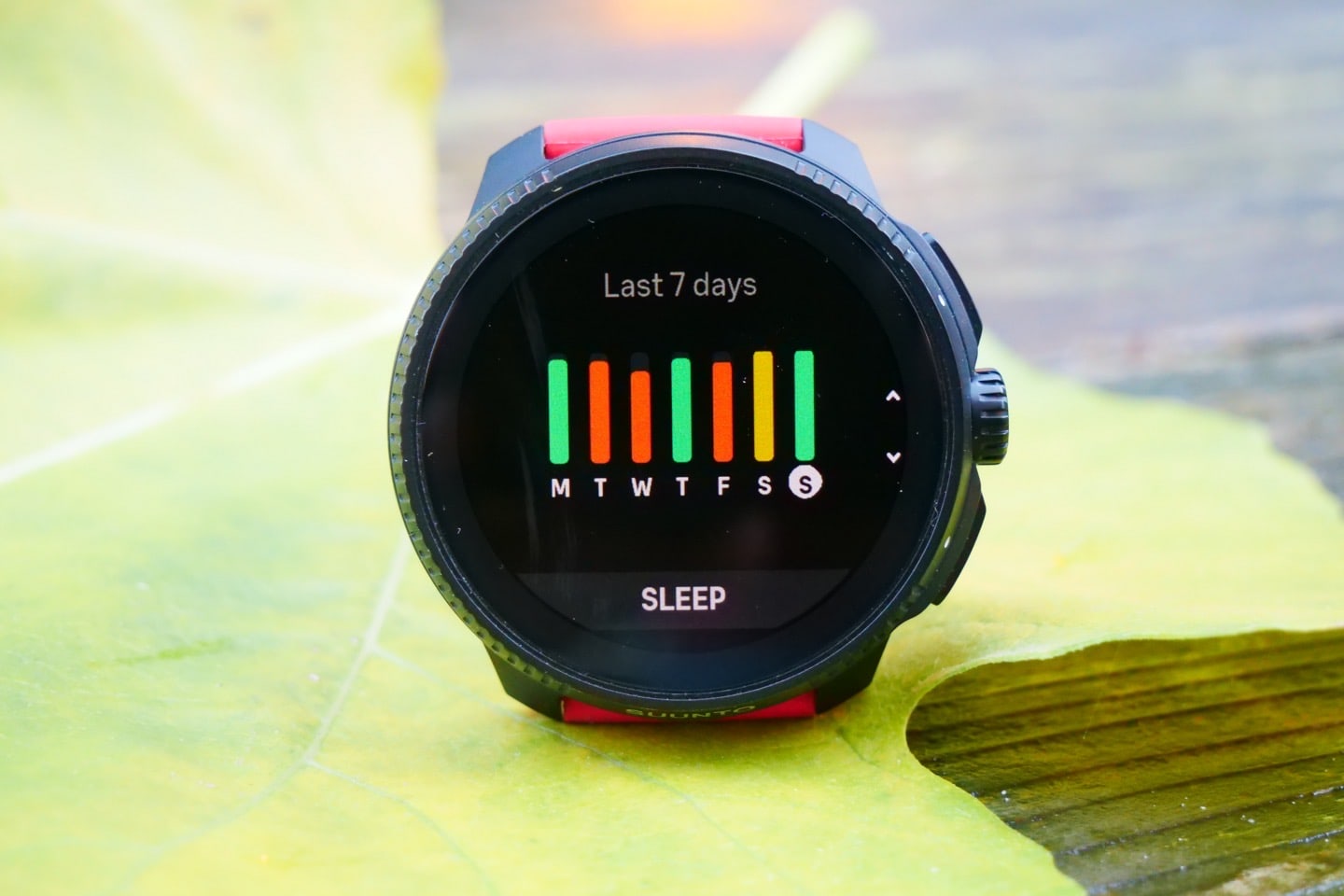
In this section I’ll focus on the day-to-day usage of the watch from a usability, widgets, activity/sleep tracking standpoint, as well as other non-sports focused areas. In the next sections I’ll cover sports/training features, then navigation/mapping features.
To begin, the Suunto Race becomes Suunto’s first watch to introduce a Digital Crown within the button layout. This allows you to navigate up/down lists, as well as zoom in/out on maps. This is in addition to the two other buttons above/below it, and the touchscreen itself.
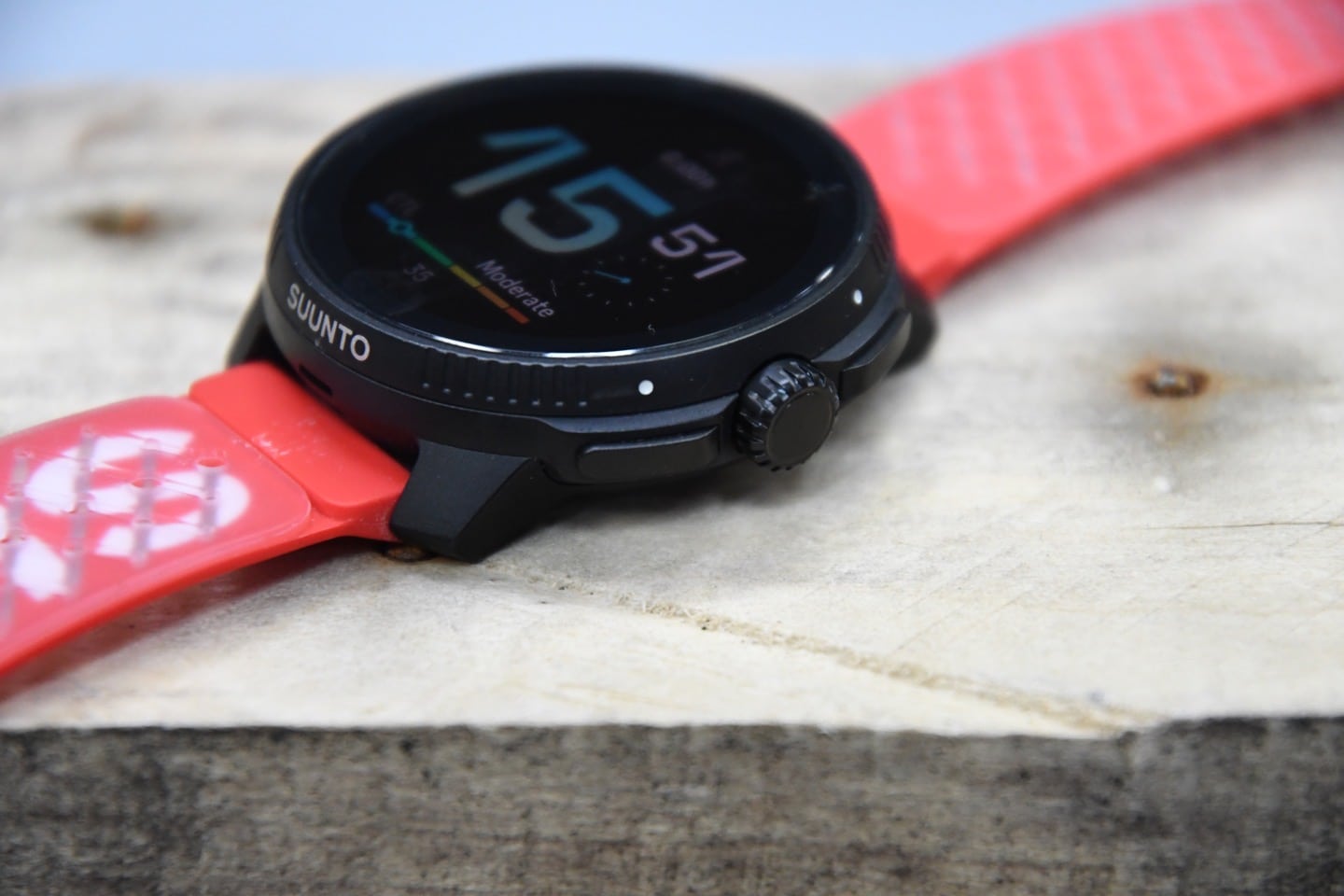
From a usability standpoint, the Digital Crown works fine, though, those that know my reviews over the years know that I don’t really find the Digital Crown great (on any watch, Apple included) for anything except zooming in/out on maps. In general, I find digital crowns finicky to use, especially during sport activities, compared to just pressing buttons. But, that’s mostly a personal preference.
Meanwhile, the 1,000 nit AMOLED screen is brilliant to see, both in bright sunny conditions and darker conditions. I think we’re finally rounding the point where people stop thinking AMOLED screens are hard to see in bright sunny conditions (they aren’t, and haven’t been for a couple years). Here’s an example in Hawaii in the lava fields, without any issues seeing it:
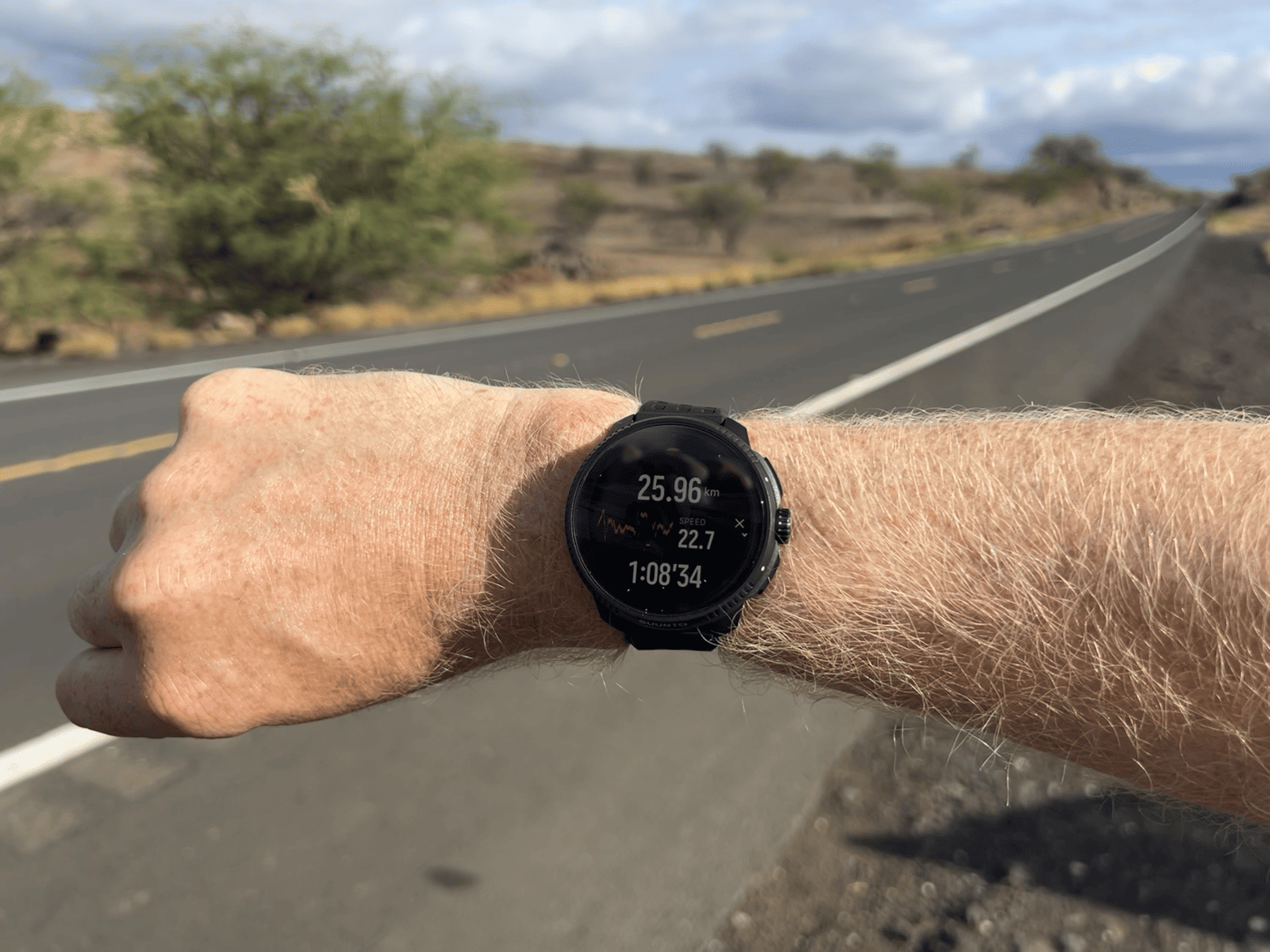
In the case of the Suunto Race, as with most AMOLED displays, there are essentially two modes: Always-on, or Gesture-based. Always-on means the screen is always-on, but will dim when you put your wrist down. Whereas Gesture-based means that the screen turns off entirely when you put your wrist down. This is obviously done to save battery, with Suunto saying that in gesture-based mode they’ll get about 12 days of battery life, versus always-on about 7 days of battery life. Both of these claims seem about right to me in my testing, but of course that varies a ton on how much GPS-time you have for workouts/etc.
In addition, Suunto also has another secondary option to be aware of within the display settings under ‘Raise to Wake’. There are two options: ‘Display Only’, or ‘Full Wake Mode’. In the lesser ‘Display Only’ mode, you’ll just get the time displayed on the screen when you raise your wrist, whereas ‘Full Wake Mode’ gives you the full watch face. If in the Display Only mode, you’d have to tap the screen/buttons to get to the watch face. I didn’t personally like that experience, so I went with the ‘Full Wake Mode’ instead.
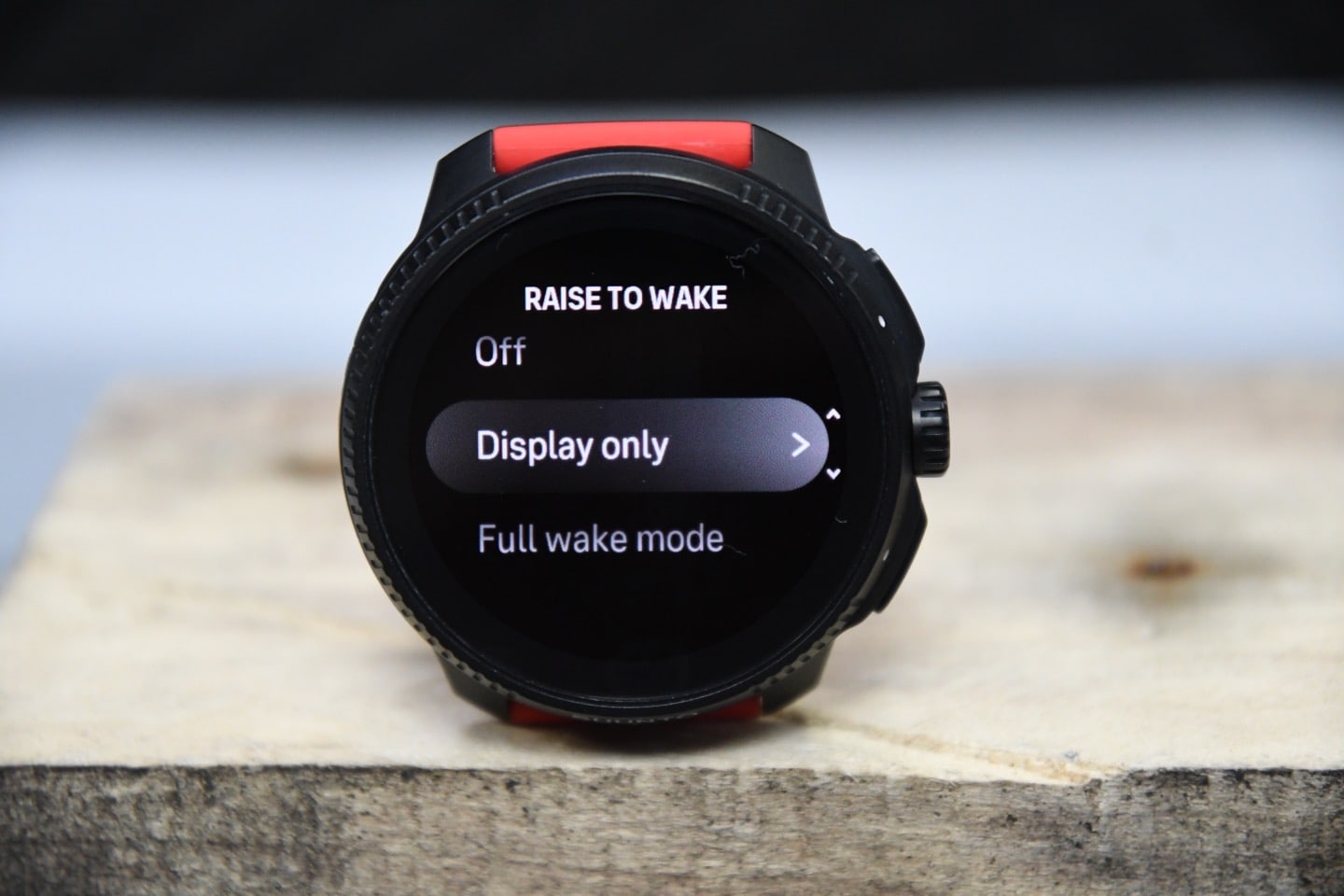
Now with that background, in the grand scheme of things on the entire watch, I really only have two complaints about the Suunto Race. The first complaint area, is just how slow the menus are. I know they got faster – they really did (which, shows you just how horrific it was before). But it’s still slow. And in particular, two operations are noticeably slow/painful:
1) Raise to wake: To get the watch face to display it takes about 2.0-2.5 seconds, consistently, every single time. That’s forever in watch-wake times. Garmin and Polar are both just under a second (about 0.8-0.9s), and Apple tends to be even faster. It often takes years for companies to get their raise-to-wake algorithms nailed, so I’m not sure we’re gonna see a fast turnaround on this one, but it’s super noticeable. [Update: Suunto says they’ve got a firmware update on Monday, which is aimed at reducing this lag a bit. It may not solve it entirely, but is seen as a first step.]
2) Anything in the menus: Anytime you want to iterate down the widgets to open up something, it takes forever, and things are slow to enumerate/render. Take for example wanting to open up your training stress balance (TSB) or heart rate variability (HRV) pages. You need to scroll down a bunch, where each of the items you’re scrolling past will half-enumerate, taking forever, same goes for opening up a sport mode.
And look, in the grand scheme of life, this isn’t a big deal. And once in a workout, it’s perfectly fine. But dismissing the slowness or pretending it doesn’t exist doesn’t help anyone. It exists, and it sucks (and I show it in the video if you want to see it, within the ‘Basics’ section). Please Suunto, focus on it, and fix it.
Ok, moving along, here’s the watch face, which is lightly customizable. In the default configuration, it shows various training stats along the bottom including HRV (Heart Rate Variability), TSB (Training Stress Balance), CTL (Chronic Training Load), and of course – steps. Fun fact: If you look at the watch face close enough, you’ll notice they slightly shift the watch-face details/metrics around all day to prevent burn-in, each minute the time changes. Just stick it on a table and watch where the digits go when it changes the time.
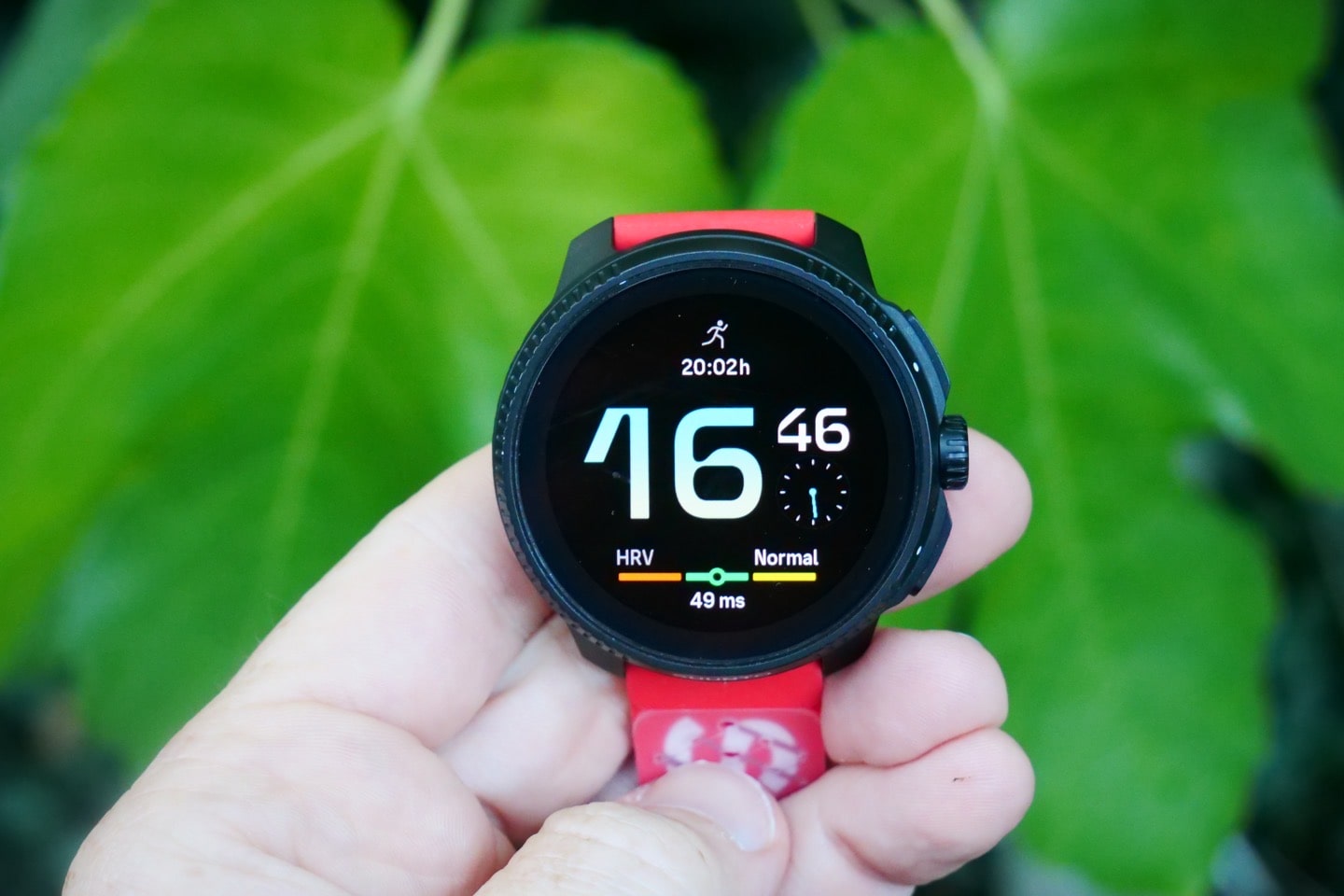
Now, there is a small known bug here with the stats displayed at the bottom not updating correctly sometimes from the app. Suunto says there’s already a fix in the next firmware update. Thus, I’ll see inconsistencies between the app and the device. Additionally, Suunto could add a bit more polish here on the HRV graph. That graph doesn’t correctly align the HRV value to the right point in each range. It always just sticks it in the middle. This is somewhat funny because in the Morning Report, it does correctly put it on the rightish portion of the scale (though, I’d argue that’s also not really aligned correctly either). Speaking of which, here’s the morning report, which shows up each morning when you wake up (or shortly thereafter):
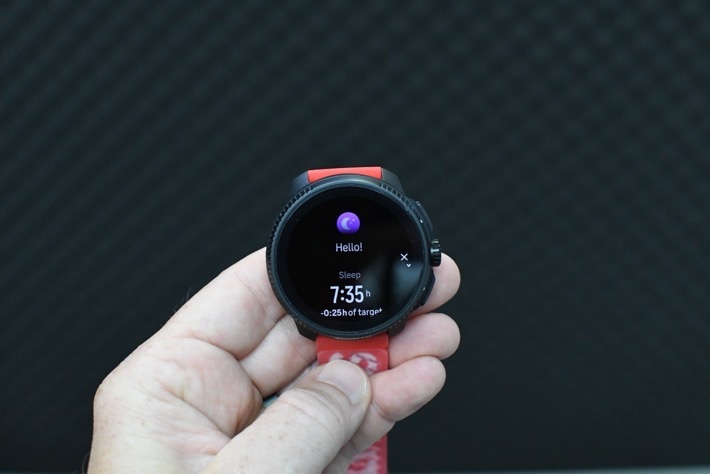
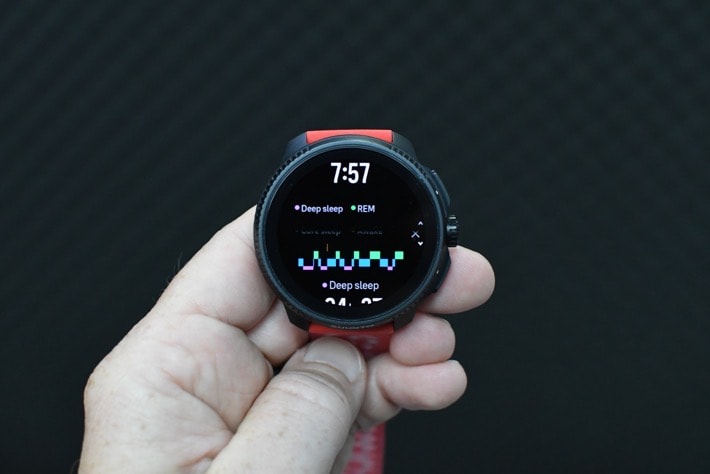
In any case, speaking of that report, each morning when you wake-up you’ll get a morning report of your sleep details from last night. This is something Suunto has had for a year or two, but is now improved with the Suunto Race in that the screen will stay there for at least an hour or so, until you dismiss it. Previously, it’d disappear the moment you rubbed your eyes open, meaning you virtually never saw it.
One of the new stats you’ll see on that morning report is Heart Rate Variability, or HRV. This is Suunto’s first watch to start tracking that, and it monitors your HRV values throughout your sleep, and shows you the average. In comparing Suunto’s values to that of Garmin, Polar, Whoop, and Oura, all of them have been within +/- 2ms for the entire time, each time. Thus, the differences tended to come more from how each unit classified awake-time within that. You’ll see HRV status in a variety of places, but most notably in the ‘Recovery HRV’ widget down below in the widgets roll. Here this shows your current HRV ranges (which take 14 nights of initial sleep data to first populate), followed by where you currently stand. Note below the 49ms in the gauge being correctly positioned at the bottom of this edge green zone, versus on the watch face view, it’s centered in the green zone.
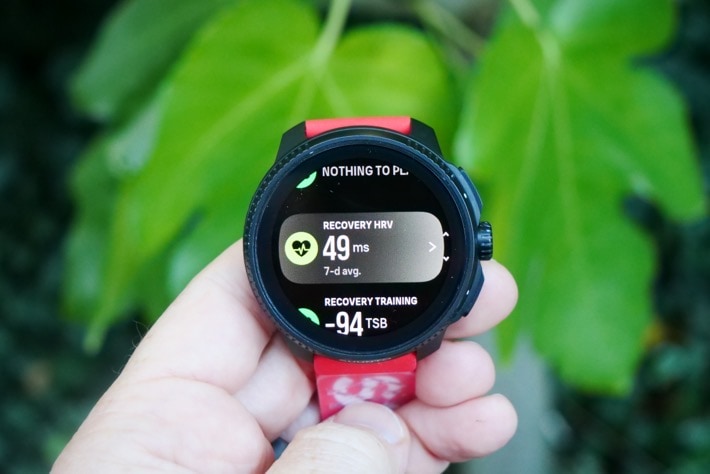
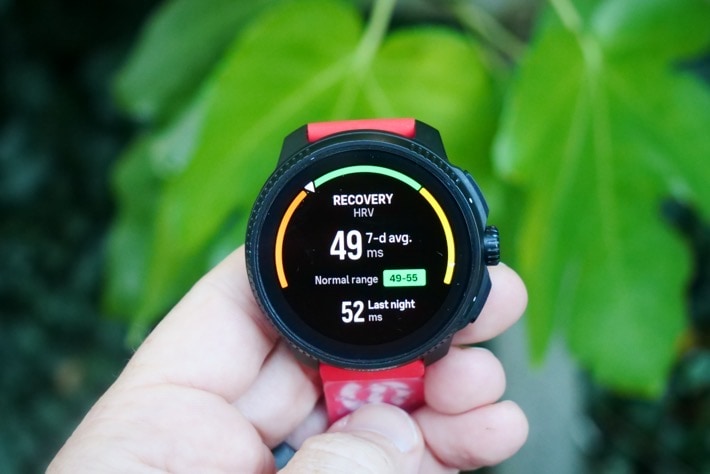
In this case, because it’s primarily looking at a 7-day rolling average (as it should), my recovery values are lower, due to both poor sleep duration the prior night, as well as too much fun with wine the nights before. Win some, lose some. Here’s an example of the HRV Recovery center text from a day or two prior:
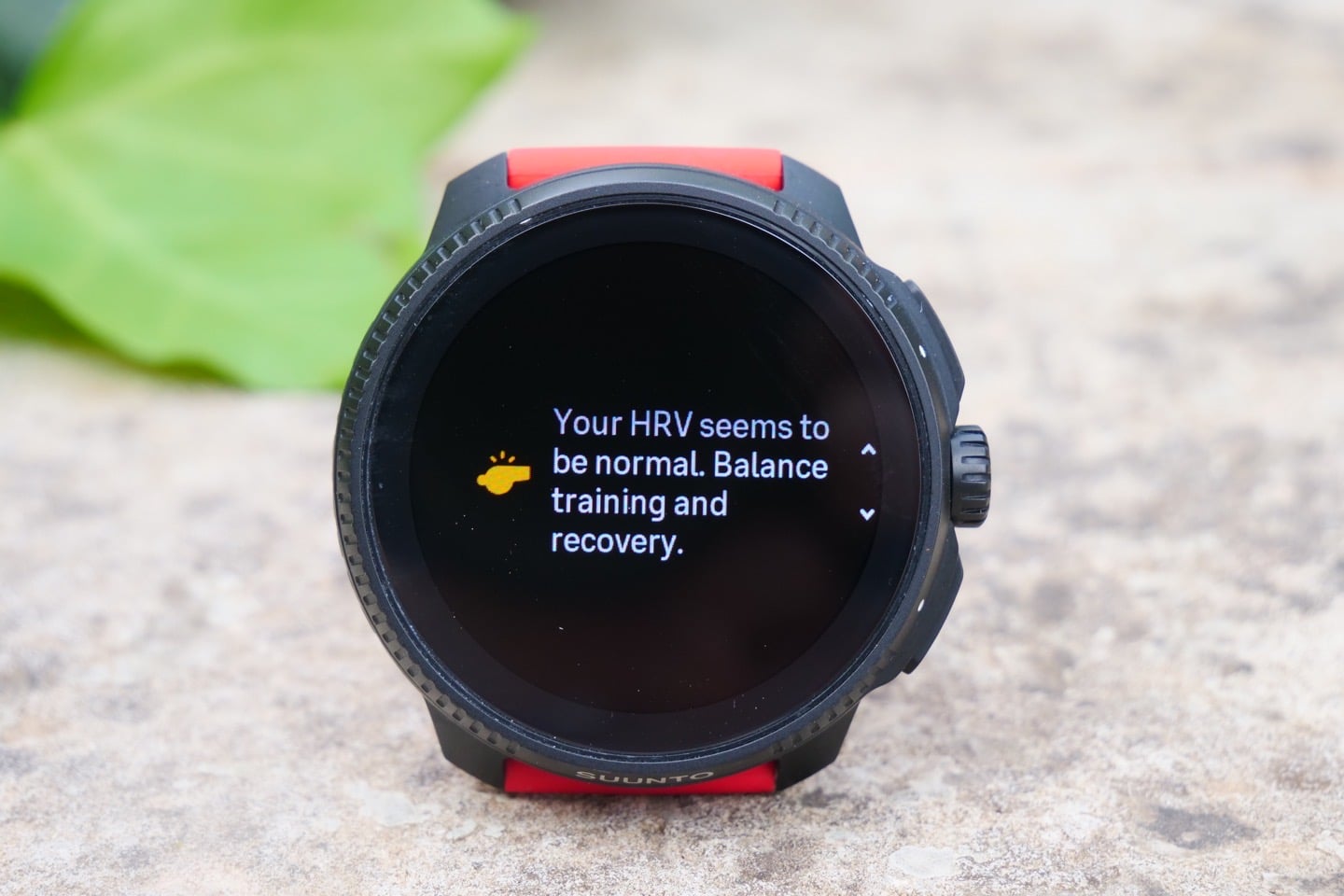
Now, this is just one of the various widgets that you’ll see when you scroll down from the watch face. Other widgets include the stopwatch, notifications, heart rate, resources (basically your energy for the day), sleep, sunrise/sunset, and more. Here’s an example of the sleep one, first at the high level, then showing the sleep details for last night and the previous 7 nights. You’ll notice it now includes sleep phase/stage charts, which previously it didn’t show on-watch.
In terms of the accuracy of sleep data, I’ve found the times I went to sleep/woke-up spot-on, and it’s handled brief early-morning wake-ups (e.g., a kid coming in at 5AM, then me going back to sleep), properly. This is an area that Suunto has struggled on in the past, but appears resolved here (for me at least). As for sleep stages/phase accuracy, it’s not an area I judge, because the comparative tools to try and do that simply aren’t that accurate – only in the 80% range (and we’d never judge heart rate accuracy on something only 80% accurate). Thus, I just take the general position that most of the sleep stage/phase data is iffy at best from all companies.
Also note that it does properly track naps now, and has done so for me over the last month or so.
Now, all of these stats are visible in the Suunto App on your phone. You can see it first at the high-level for everything in the last 7 days, and then if you open up that day you see a bit of a ‘feed’ for your day, showing your sleep, activity, workout, etc stats:
And these stats are also available for training volume/etc too – but more on that later.
When it comes to things like smartphone notifications, they’ll show up on the watch too, albeit they are pretty basic text ones. There isn’t any way to reply (which on iOS isn’t permitted by Apple anyway), nor show photos (also not permitted by Apple for 3rd parties on iOS). And the lack of displaying any emojis in messages seems a bit dated for 2023. But you can dismiss the messages and see the basics of the text. In the below case, that square should have been a smiley face.
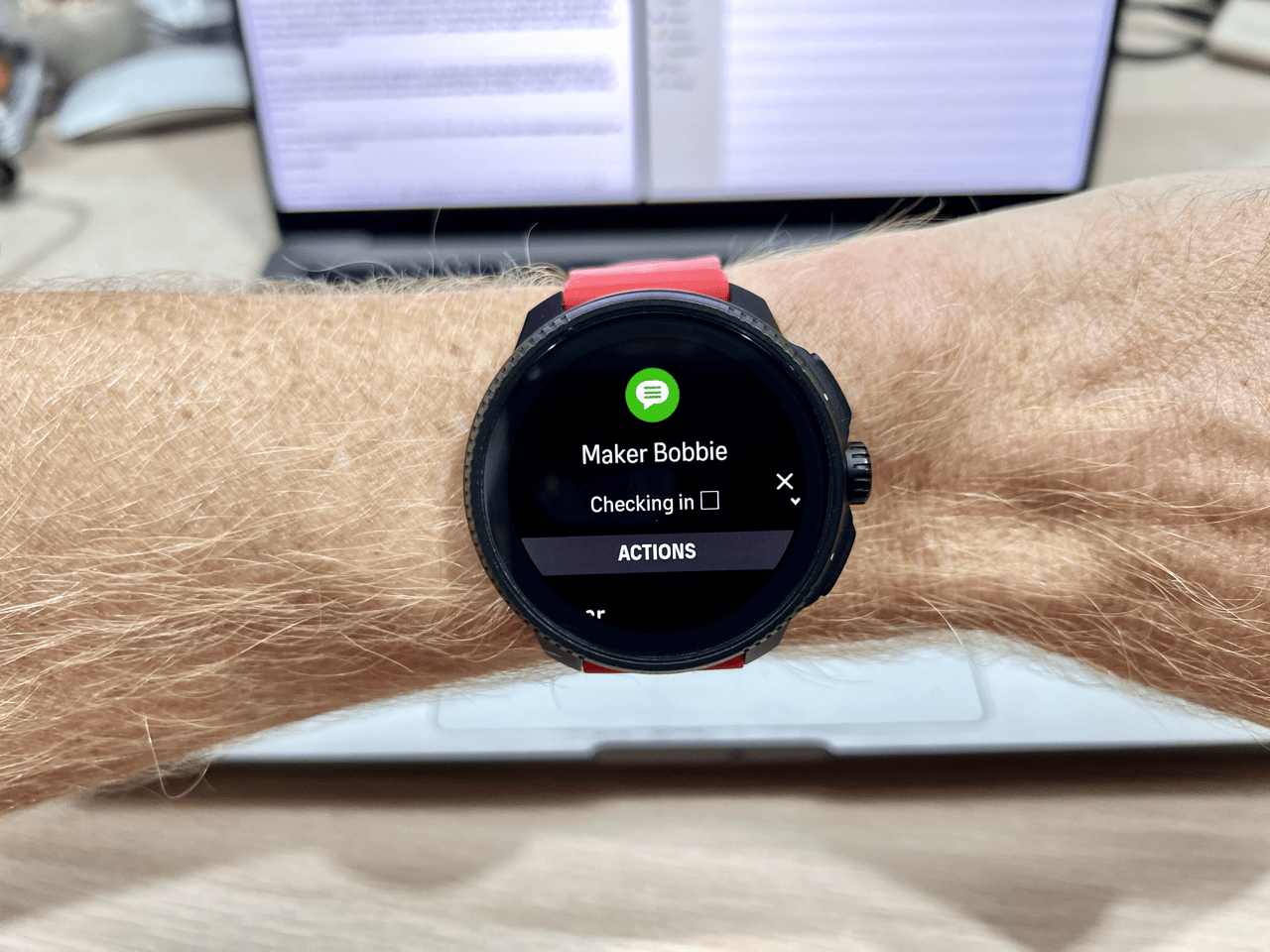
On the bright side, they do include a flashlight, via the screen. And with the Suunto Race, you can also create a hotkey to this, as well as it’ll stay on (when the Suunto Vertical first launched, it quickly turned off automatically, but they updated that in a firmware a few months later). The next thing I’d like to see them do is allow you to change the brightness level (which is currently bright AF), perhaps using the Digital Crown (and then saving the last brightness level state).
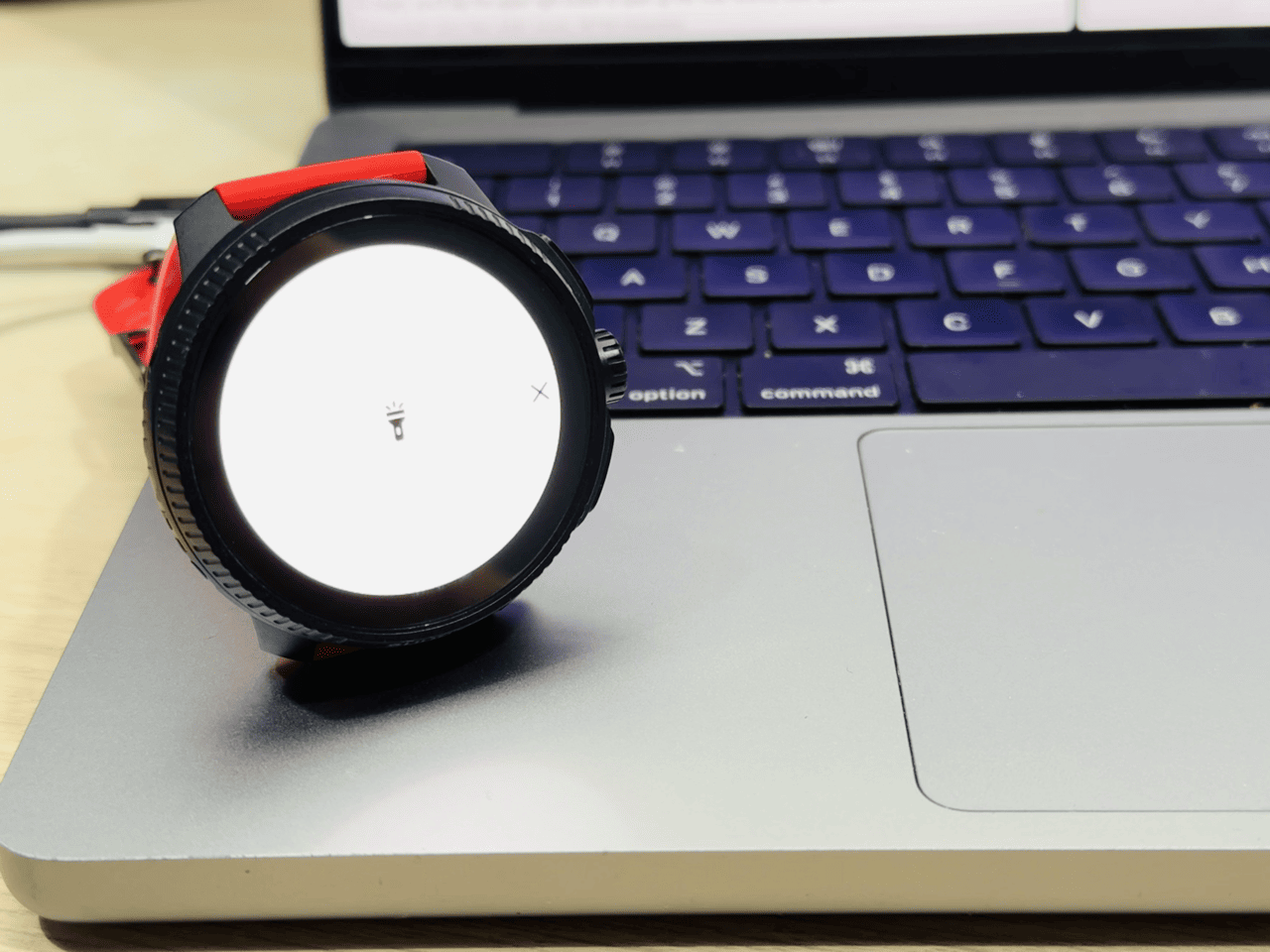
Lastly, it should be noted the bands are swappable. It comes with a 22mm standard band attachment, so you can easily swap it out for other Suunto Bands, or a Hello Kitty Band on Amazon. Your choice. In my case, I’ve been using the red accessory band, because obviously red is best. But by default it comes with a more boring black one.
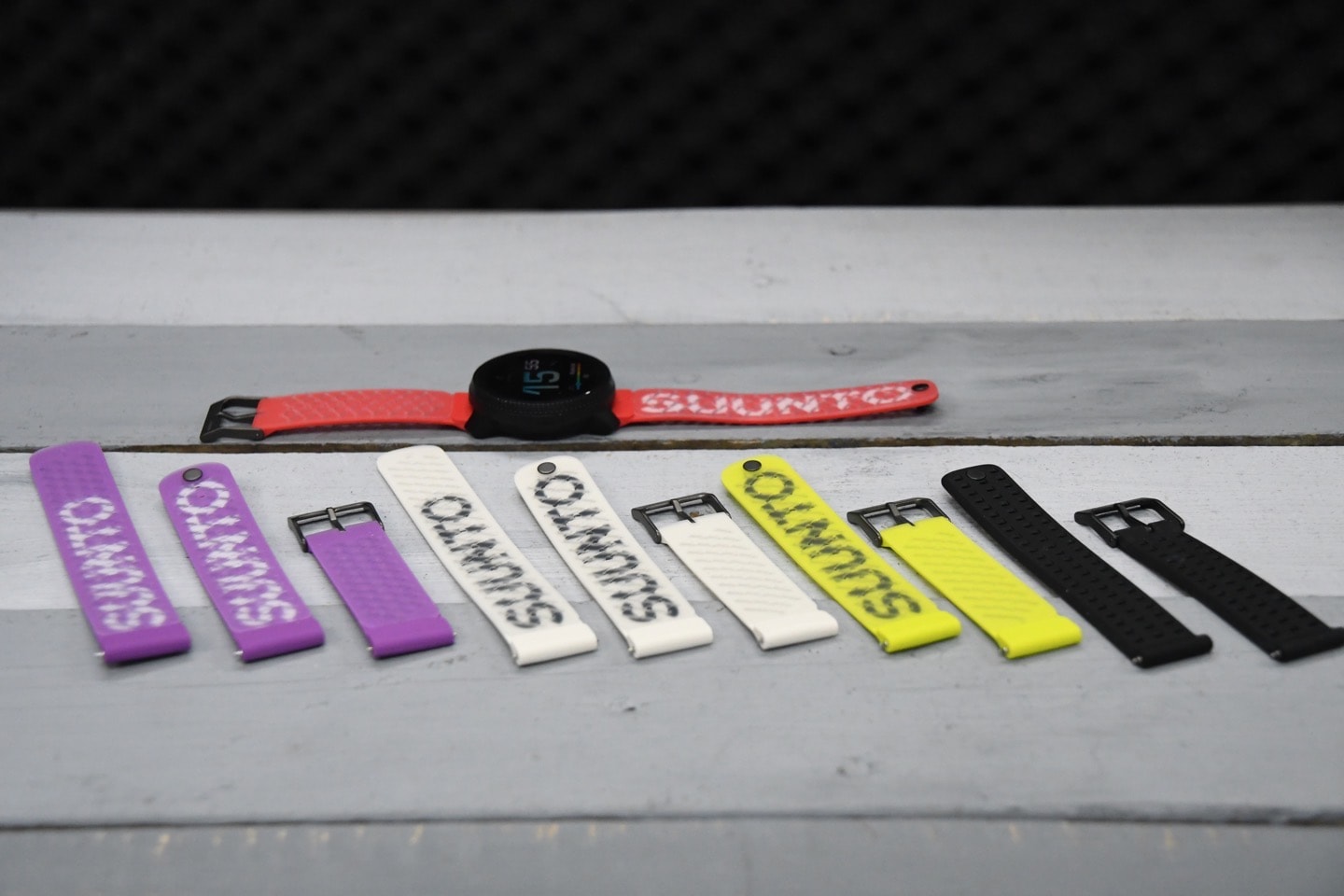
The bands are pretty comfortable, so all is well there. And of course, given they’re designed for sport-usage, let’s shift into the next category.
Sports Usage:
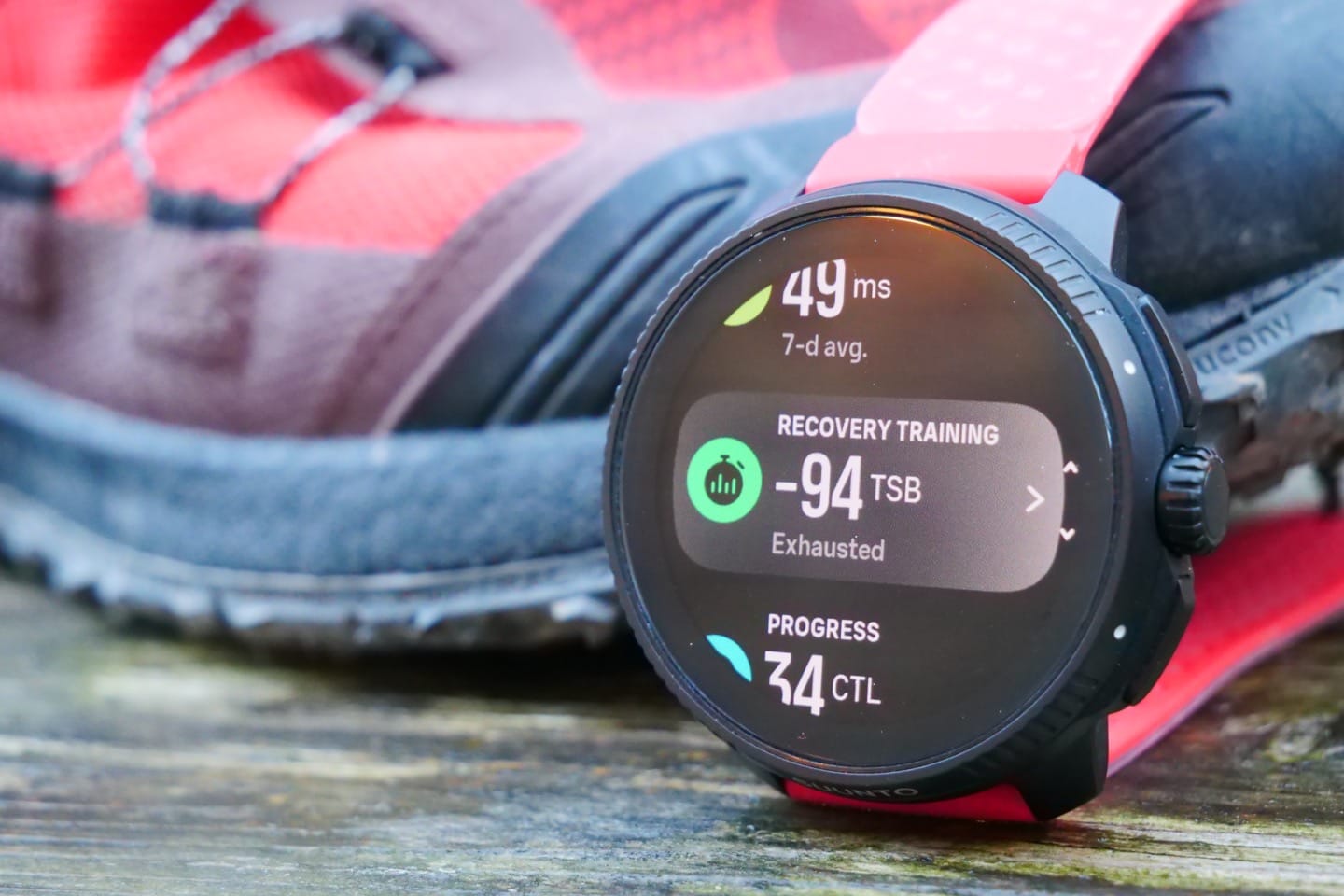
Invariably, if you’re buying a Suunto watch, it’s likely for workout purposes. The Suunto Race has a metric boatload of sports modes built-in, all of which offer varying levels of sport-specific data and customization of things like data fields. In general, Suunto sport modes tend to be more about calorie burn and categorization of your activities, rather than having unique data metrics for each and every sport type. Obviously, the big-name sport types like running/swimming/cycling have unique per-sport metrics, but when you get to some of the less-popular ones, it’s more about general data fields.
However, Suunto does have a few exceptions to that, notably around the snorkeling modes, which can be used down to 10m in depth. Suunto has included a depth gauge in the product, and it’ll track those shallow dives/depth details. But more on that later in the review.
To begin, you’ll tap the upper right button to open up the most recently used sport mode, or you can rotate the Digital Crown to see the list of sport modes (sorted by most recently used):

Once you tap a sport mode, you’ll be brought to this page here, which shows GPS status, sensor connectivity status, battery life estimates, and more.
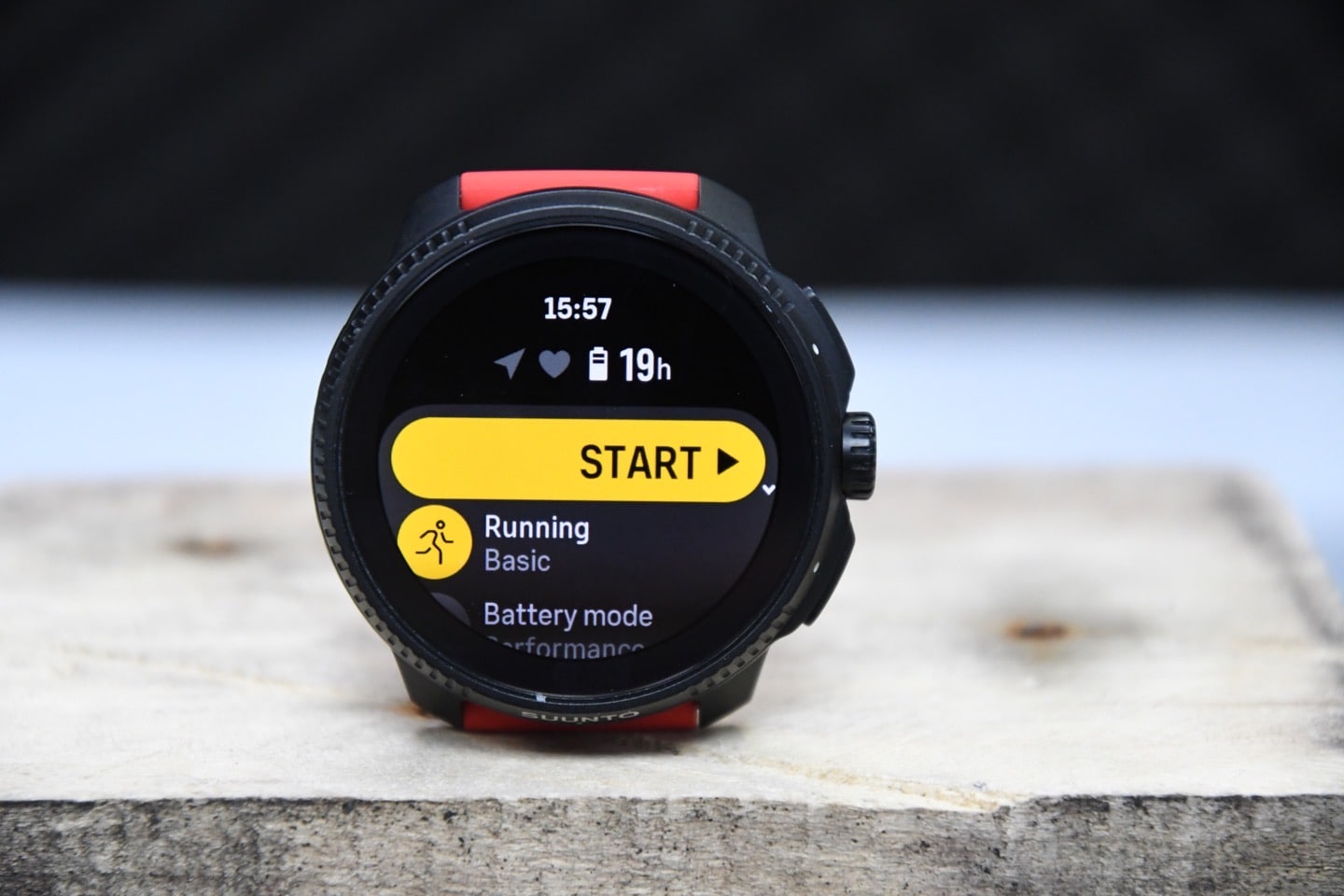
From here you can change your battery mode (which can offer longer battery life, but usually at the reduction of some other feature or data update rate), as well as add things like a route. You’ll also see the ability to choose the map style (light or dark), and most notably, SuuntoPlus Apps. SuuntoPlus apps are both Suunto-developed and 3rd party apps that you can load onto the watch. This comes in two basic flavors: Apps and Guides. Apps are all-encompassing, while Guides tend to be for things like structured workouts.
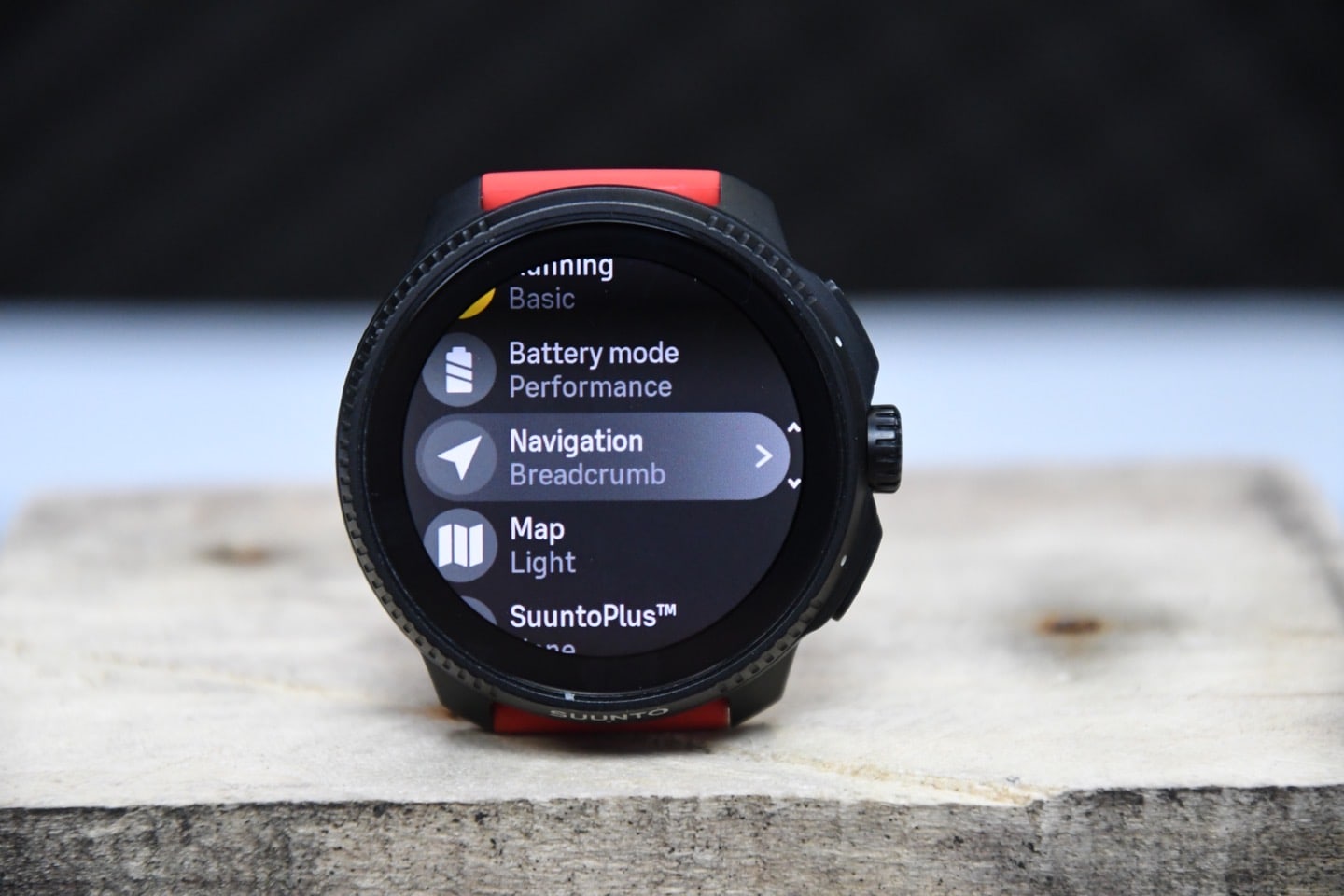
With the Suunto Race, Suunto is starting to pre-load certain Suunto Apps tied to certain sport profiles. For example, a tennis-focused app developed by Suunto when you launch the Tennis sport profile.
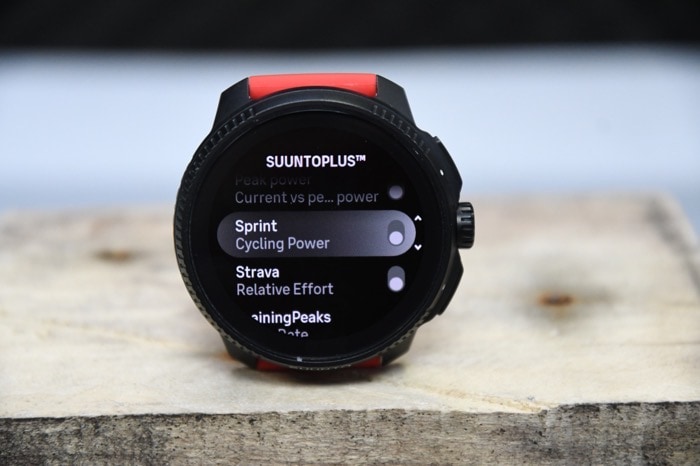
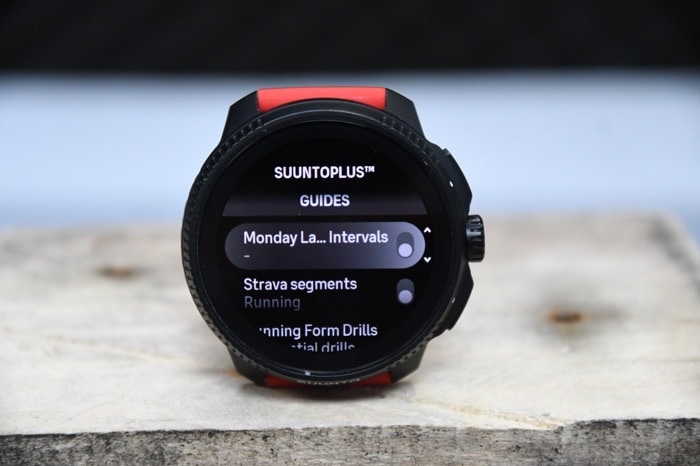
Check out my most recent post on the dozen+ new SuuntoPlus Apps that Suunto just released for a feel of those. But there’s boatloads of them, and they do a good job extending the functionality of the watch.
That said, as I’ve complained for years, Suunto is also using them as a bit of a crutch. Many of these SuuntoPlus Apps that are developed by Suunto should really be built-in features of the watch. And the reason that matters, is that you can only add in 2 apps per sport profile at a time, or 1 app and 1 guide (they do at least remember them each time now). Thus while Suunto as a company has many of the sport features Garmin does, you can’t actually use many of them concurrently together, because of the limits Suunto has in place – thus making it much less useful.
Suunto really needs to pick at least a few of these per quarter, and ‘upgrade’ them to built-in features. Undoubtedly they have the data on which ones are most popular (especially over longer periods of time), so this shouldn’t be a big ask.
That said, Suunto did build-in a structured workout builder into their app, making it easy to get structured workouts on there. These still take up the slot of a ‘Suunto Guide’, but you can run them concurrently with an app, so it’s less of an annoyance there. You can create multiple steps and then send it to the watch (even to a specific date). Further, they also support TrainingPeaks structured workouts, as well as workouts from numerous other connected platforms.
In any event, as for changing your data pages/fields, you’ll do that via the Suunto App on your smartphone. You can customize these per sport profile, with variants for whether or not you’ve got a cycling power meter connected, or other sensors (and running power is built-in, so that happens automatically with no external sensors). That said, what’s rather annoying here is that you can’t edit existing (default) sport profiles. You have to start over and re-create, even if you want to change a single data field…which, is (and long has been) bizarre – resulting in duplicate sport modes.
Finally, before we start actually running, we’ve gotta talk about sensors/accessories. The Suunto Race can connect to Bluetooth Smart sensors including heart rate sensors, cycling power meters, cycling cadence/speed sensors, and running footpads. However, it will only connect to a single sensor of each type, it cannot save more than one sensor type. Further, it doesn’t even show you the name of the sensor it connected to (it will at least show you the power meter crank length option though, if applicable).
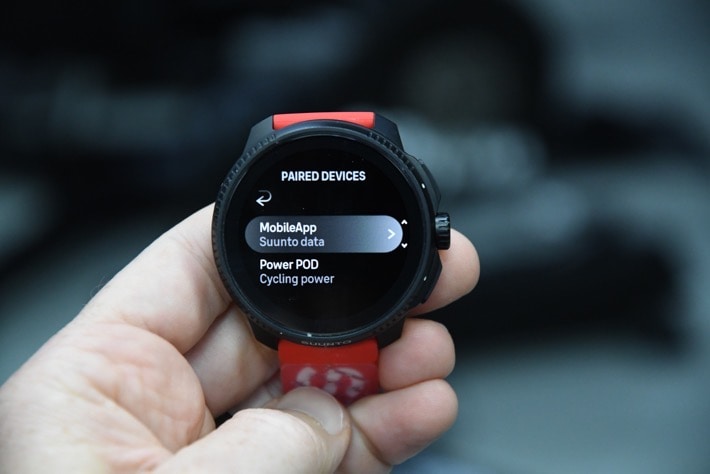
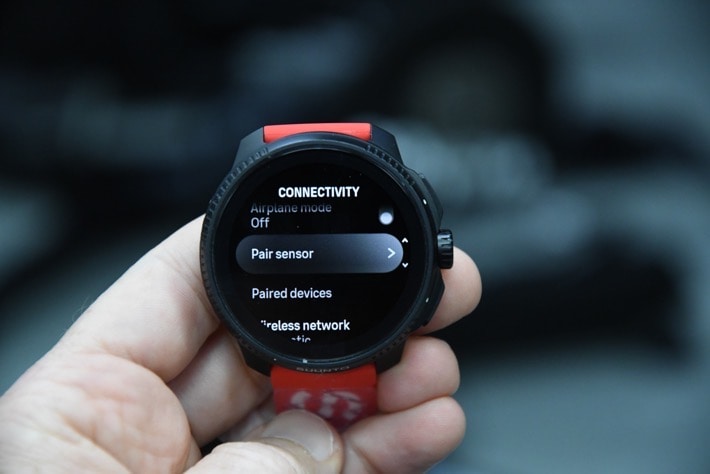
Look, I’ve said it before, and I’ll say it again – this just isn’t good enough in 2023. It wasn’t good enough in 2018 either. Or even 2012. Every other watch supports saving multiple sensors of the same type, which is particularly important for cyclists. Especially those cyclists with home trainers or indoor bikes that want to connect to those, else, you’re constantly having to re-pair sensors (without ever knowing if you’ve paired to your bike, or perhaps your buddy’s bike). Suunto really needs to have this be a focus area for the winter, ahead of next season. I’m not sure why this can keeps getting kicked down the road.
Likewise, Suunto also doesn’t have any broadcast heart rate feature, to transmit the optical HR sensor to apps like Zwift, Peloton, etc… Again, in 2023, with many people using that function for indoor training, it seems like an obvious gap. Then again, I suppose given the accuracy of the Suunto Race optical HR sensor, maybe it’s not such a big loss. So yeah, let’s just focus on fixing the sensor pairing thing for now.
Ok, with everything all set, let’s get this workout underway. If it were a run outdoors, you’d see the GPS status is connected. Whereas if it were an indoor bike with a power meter, you’d see the cycling power icon illuminated:

Once you’ve pressed go, it’ll start recording data as expected, showing your screens per your configuration. Here’s a quick gallery of some of the data pages from a recent run, showing how they look with actual data on them.
During all my workouts, everything has been as I expected. No crashes, and pace was stable while running when I was stable, and reacted fast during intervals. I was happy with everything there. You can use the lap button to mark laps manually, or automatically. Likewise, you can pause the workout if needed.
Once done, you’ll save the workout and see a complete summary of your workout data. Here’s that from a run as well:
And of course all of this data is visible on the Suunto App as well. If you have connected platforms like Strava or TrainingPeaks, those will show up a few seconds later once synced to the Suunto App.
In that same vein, you’ll see training load and recovery stats within the watch, as well as app platform. On the watch itself, you’ll see the TrainingPeaks metrics of TSB (Training Stress Balance), TSS (Training Stress Score), and CTL (Chronic Training Load), down in the widgets.
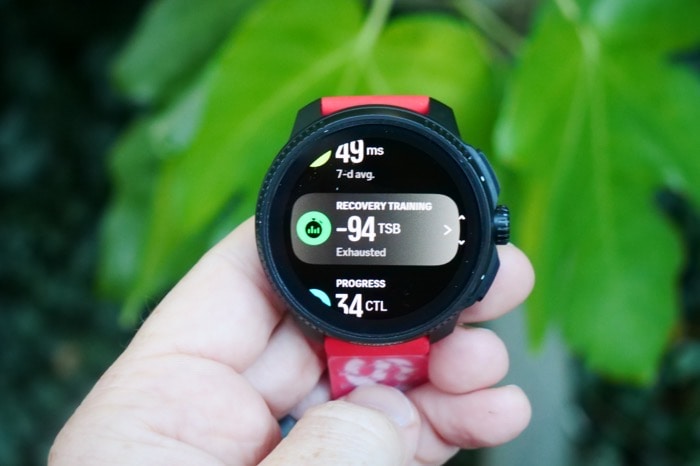
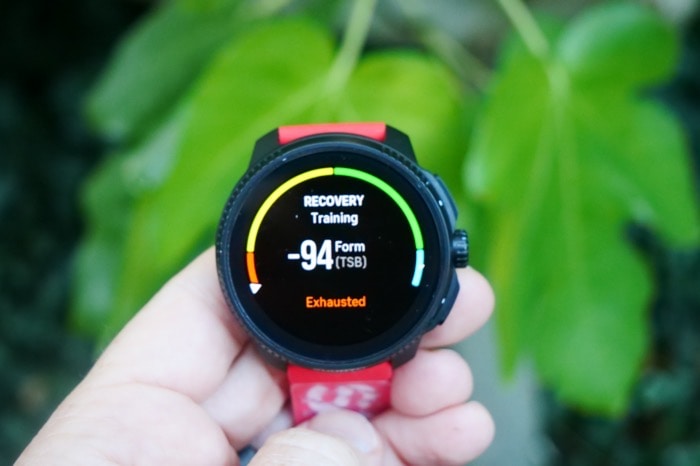
All of these stats are easily accessed from the watch:
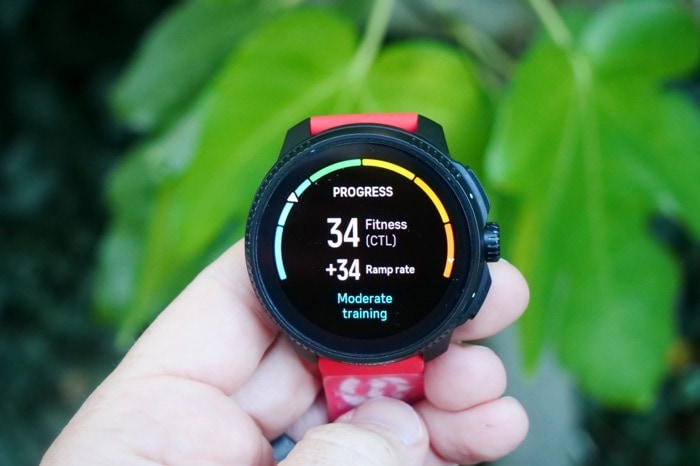
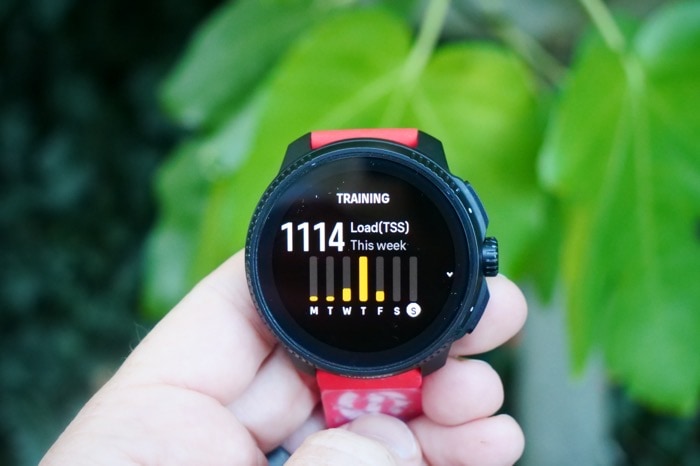
It’ll also include brief notes as well on where load sits:
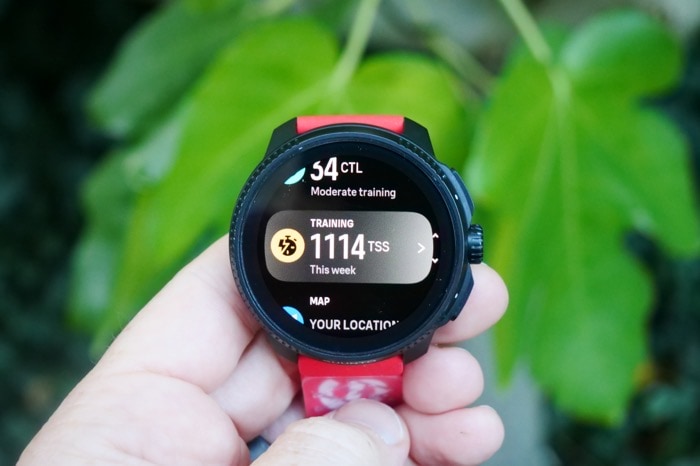
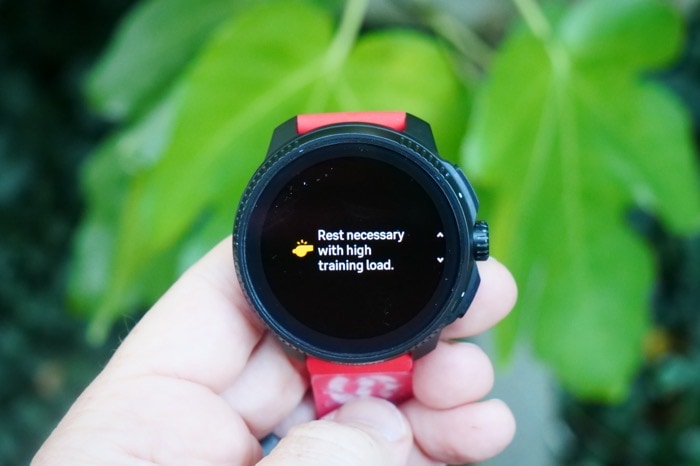
But these are also shown on the Suunto App, on the main homepage, and you can dig into them in more depth if you want to here too.

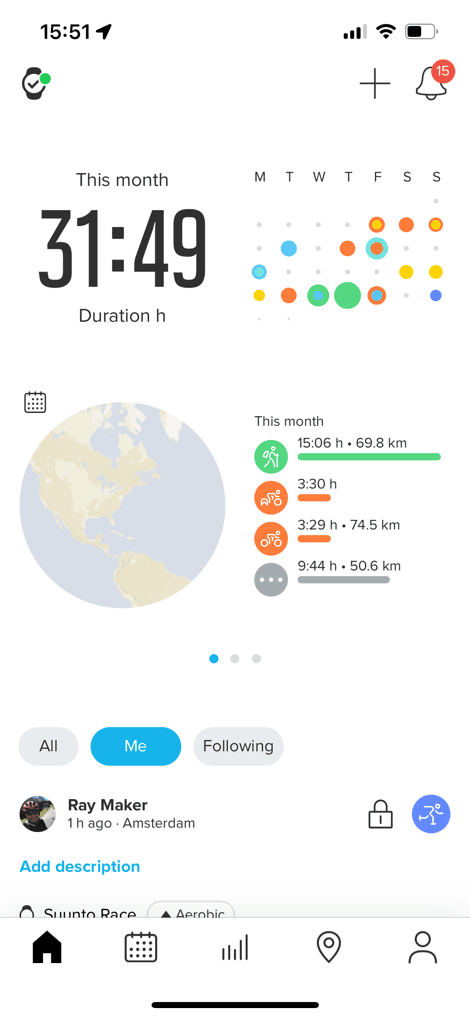
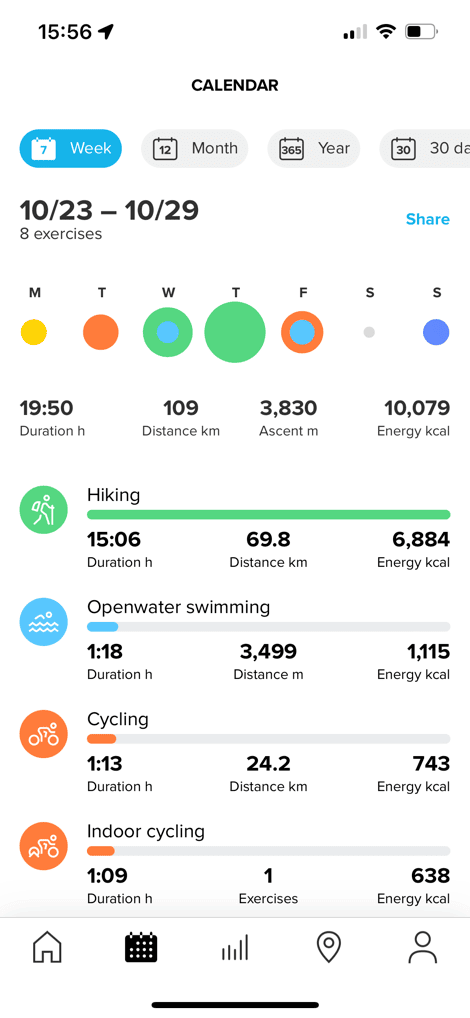
It’s kinda cool that Suunto has licensed these from TrainingPeaks, so that in theory they should match your TrainingPeaks account, assuming the data you have matches what’s in your TP account.
Oh, before we go underwater, just a brief mention of at-water level swimming, specifically pool swimming. I did mostly open water swimming with the watch, but did do a few pool sessions. Looking at one of them, the unit correctly counted every lap but one, where it incorrectly added a single length. Interesting, the Polar Vantage V3 also stumbled at the exact same time, albeit undershooting a length. There was nothing notable about that particular moment, except being the end of a set. The FORM Swim goggles on that swim correctly hit every length.
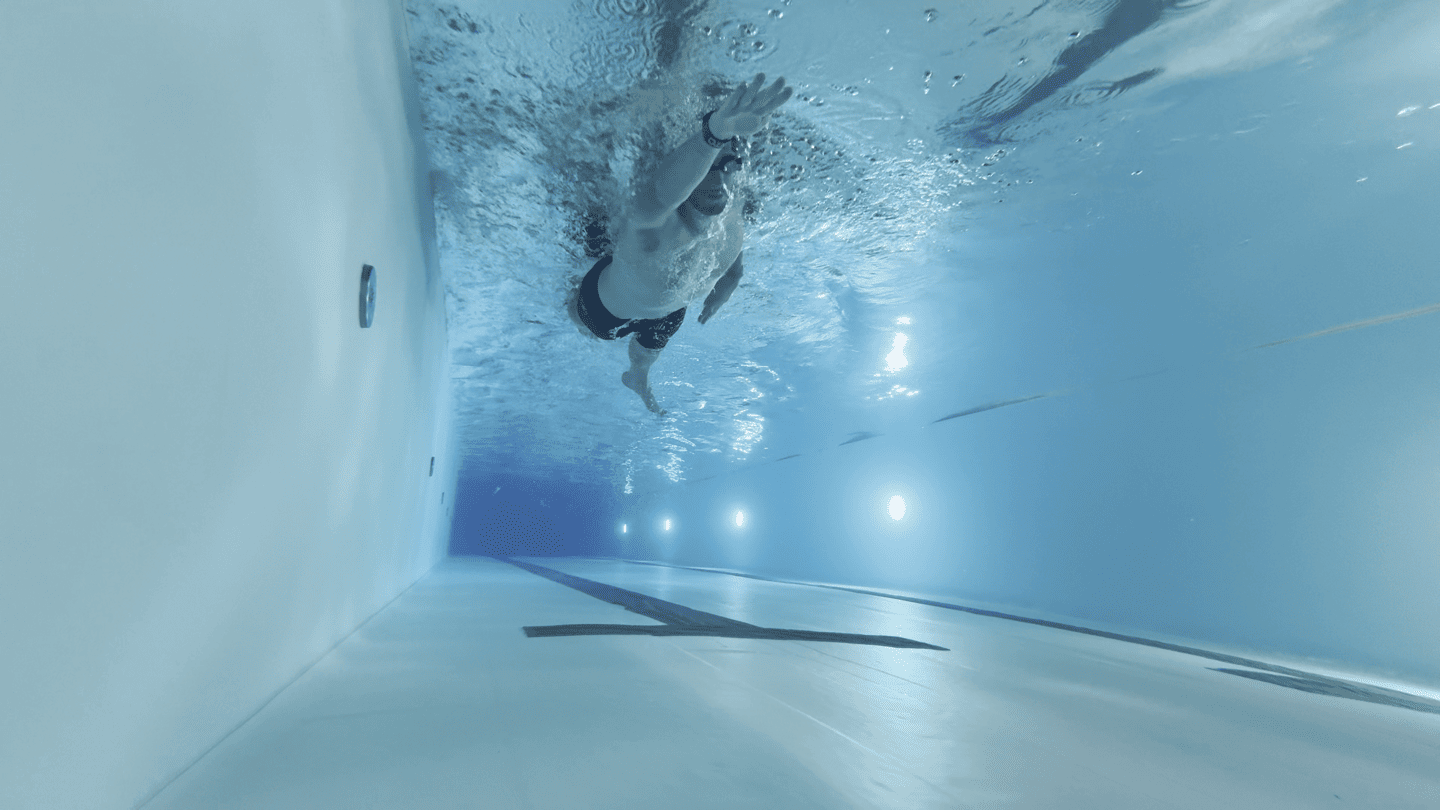
In terms of other strokes, I can barely do freestyle just halfway correctly, so I really only judge that. I mean, I suppose I’m good at the doggie paddle, but that doesn’t appear to be a stroke type tracked by Suunto. Missed opportunities, I guess. Post-swim you’ll see that swim data on the Suunto app as well – though, you can see some random butterfly in here. There was no butterfly from me. Ever.
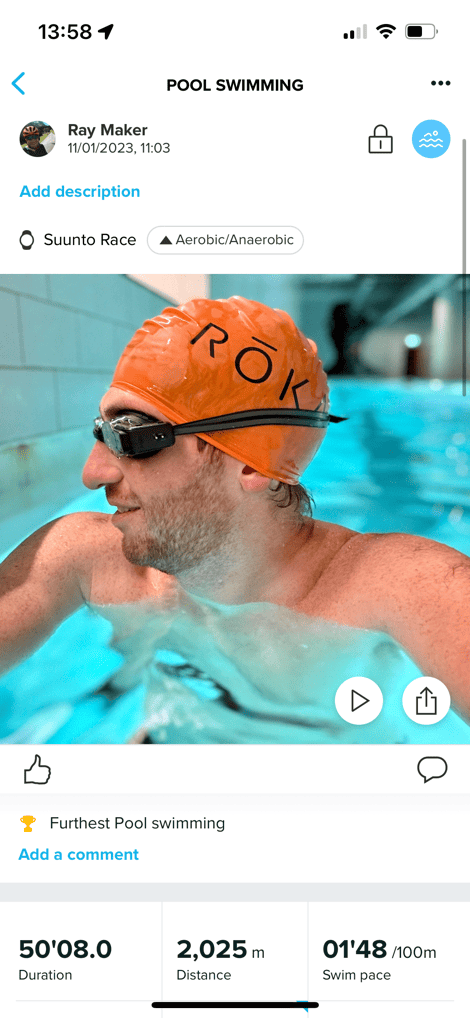
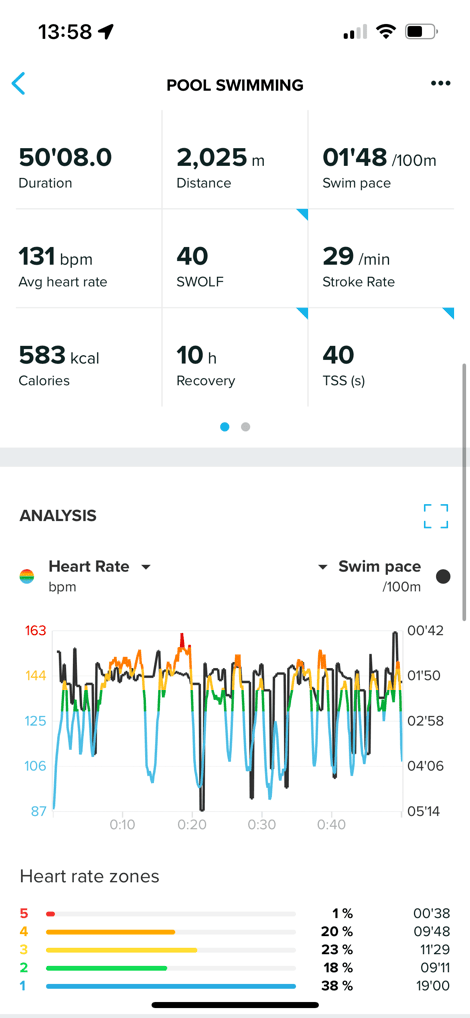
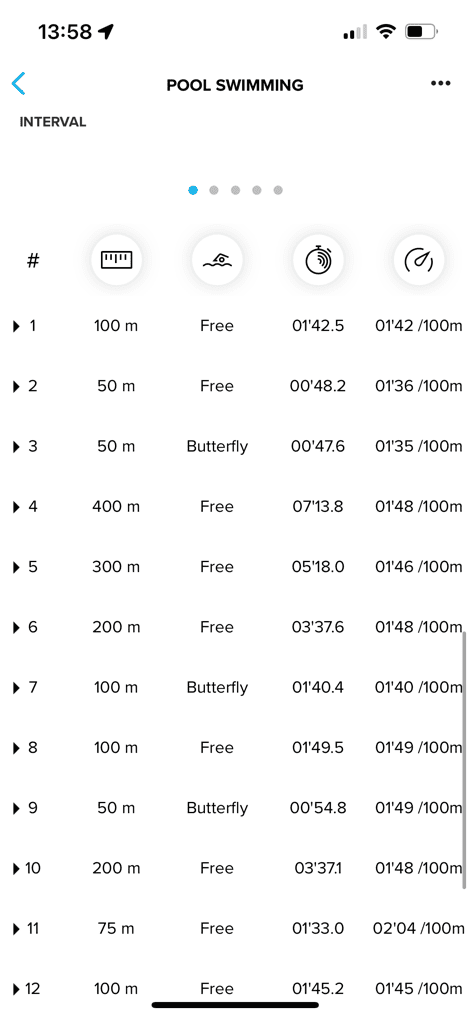
Finally, just a brief mention on the snorkeling and ‘mermaiding’ features. Yes, that’s a real term. Mermaiding is basically snorkeling without GPS indoors. Suunto added the depth gauge in their land-based units a few models ago, based on all their work in the dive realm with their dive computers. They noted at the time that there are generally different barometric altimeters used for above-water vs below-water (depth-gauge) activities, based on which area they specialize in. In this case, Suunto put in one that focuses on above-water activities, but can accurately capture depth to 10m or so (thus, the 10m limit).
While snorkeling, it’ll capture each one of your ‘dives’, including the time/duration as well as depth. You can see this on the watch in a list format, as well as other data pages showing specifically your current depth. Apparently though, I never took a great picture of it. But here’s a not-so-great picture of it:
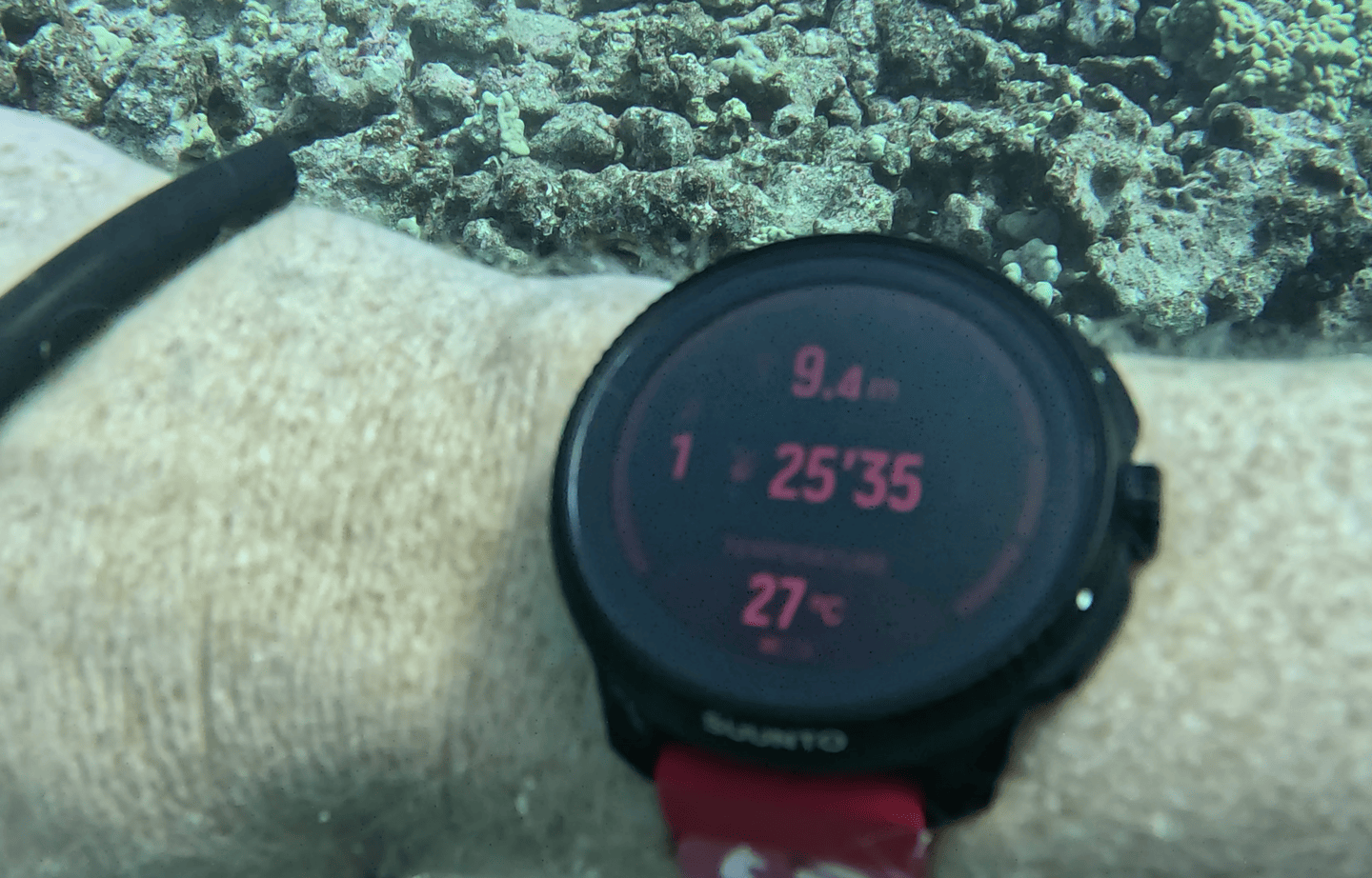
In case you’re wondering, if you go free diving or scuba-diving with it, once you go below 10m in depth, the watch will both warn you, and then show > 10m as the current depth – indicating you’re too deep:
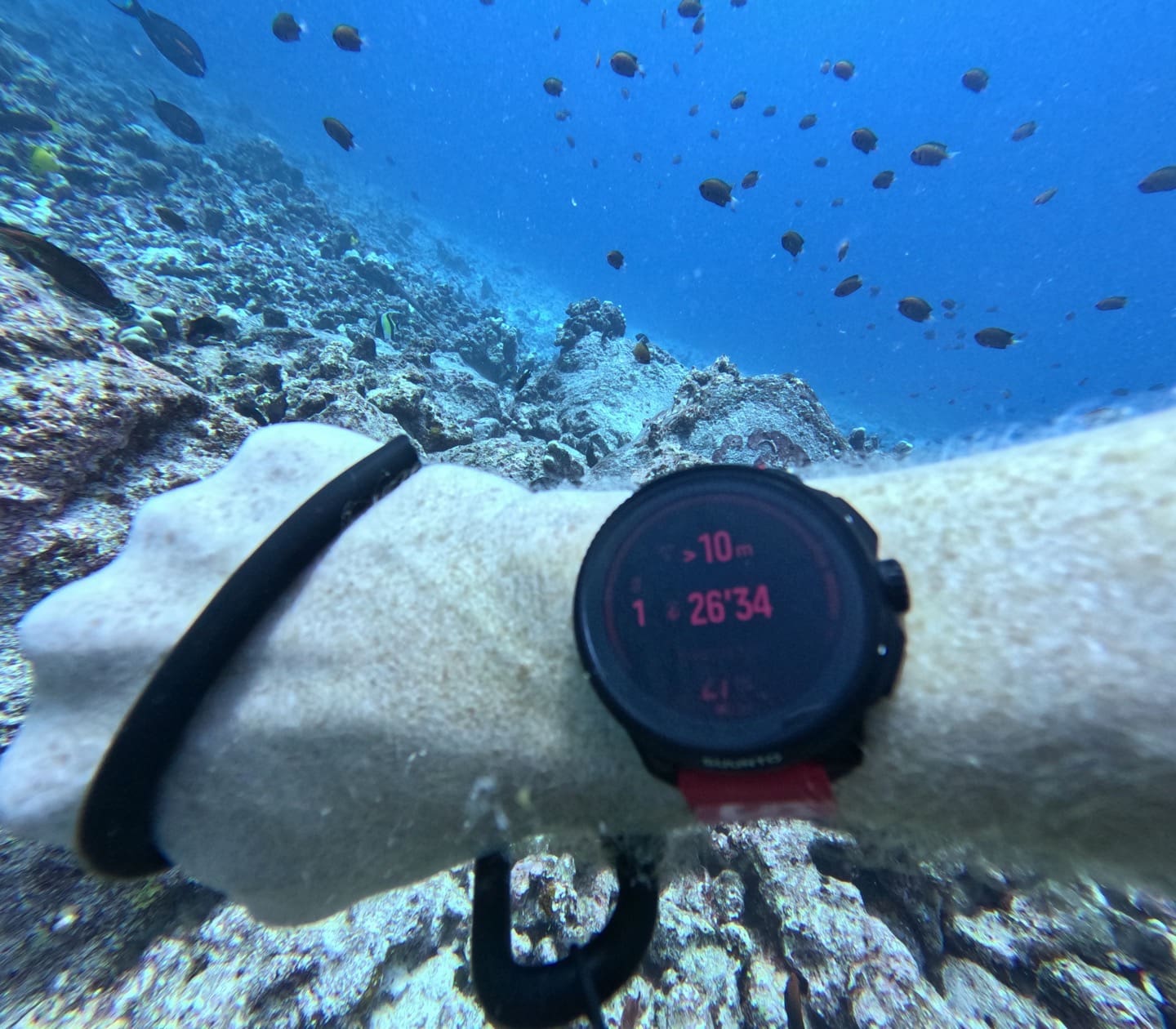
The watch is of course totally fine depth-wise for either of those activities, assuming you stay within the stated 100m depth range (which, you’d almost certainly do). And yes, that includes pressing buttons. There’s no issues there.
After your snorkeling session, you’ll see a nifty little graph of each of your dives. You’ll also see GPS positions, but it tends to be fairly inaccurate, because it’s only going to work when you’re at the surface with your wrist above the water so it can get GPS signal (as that won’t work through water).
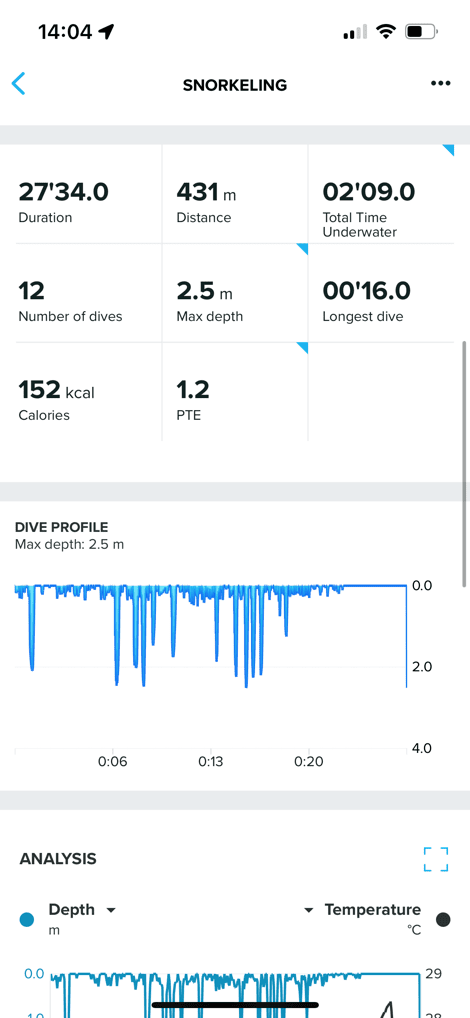
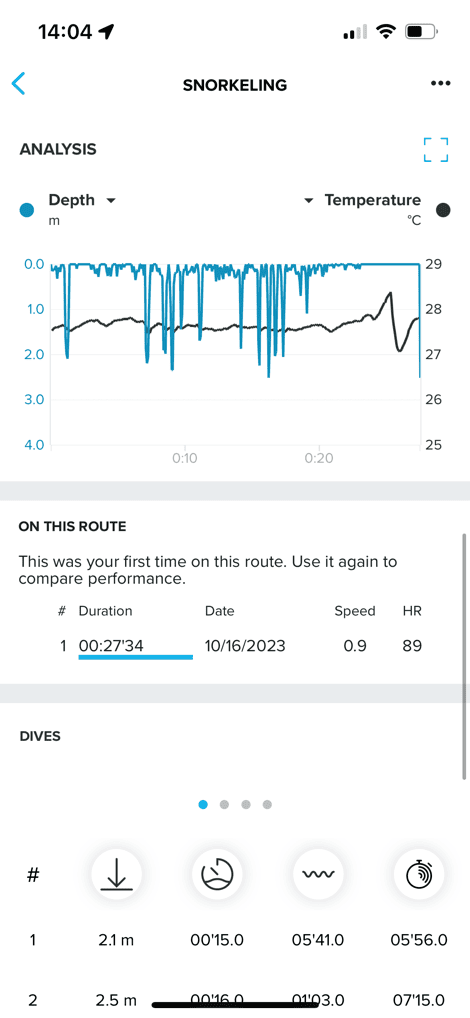

It’s a cool little feature. And hopefully it’s something Suunto looks to expand to full diving/freediving, akin to what Garmin has done with their Descent series (which is essentially a re-badged Fenix series watch), or to a much lesser extent, Apple. Obviously, Suunto has just as much dive experience as Garmin (and a much longer history of it). So that’d certainly be something in their wheelhouse.
Mapping & Navigation:
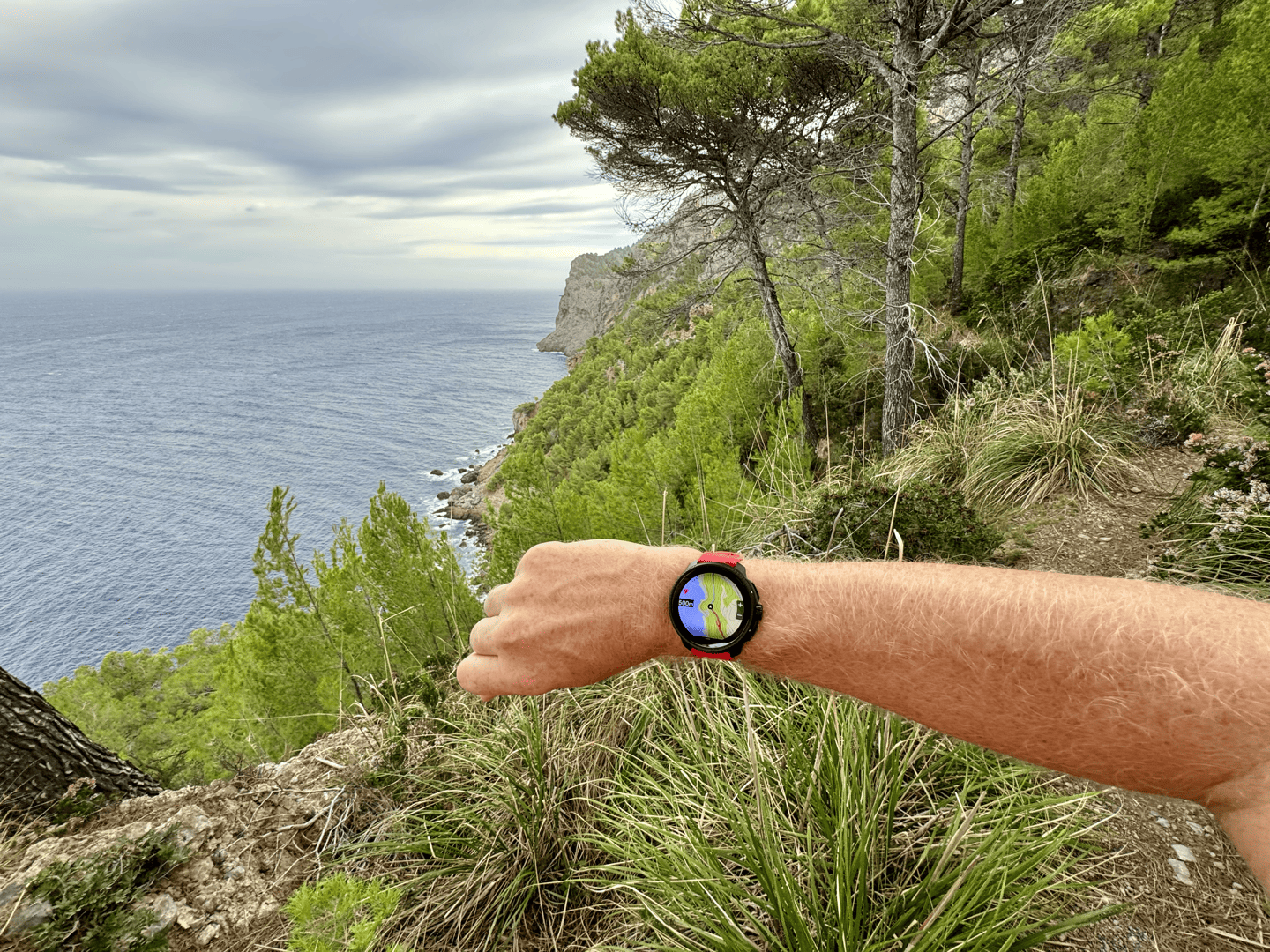
The Suunto Race follows in the footsteps of the Suunto Vertical, with its built-in mapping functionality. The only difference is the maps are more brilliant now, thanks to that AMOLED display. In my case, I used these maps on a variety of adventures, but most notably an ~60km/12hr hike a few weeks ago in the mountains, with some 9,000ft of elevation gain included.
To begin though, the Suunto Race has either 16GB or 32GB of storage, depending on which model you choose (Titanium is 32GB, the base 16GB). Both models have WiFi though, for downloading said maps. To do that, you’ll go into the settings on the Suunto App and connect/save your WiFi networks. This is what the Suunto Race will use when connected to a charger to download maps.
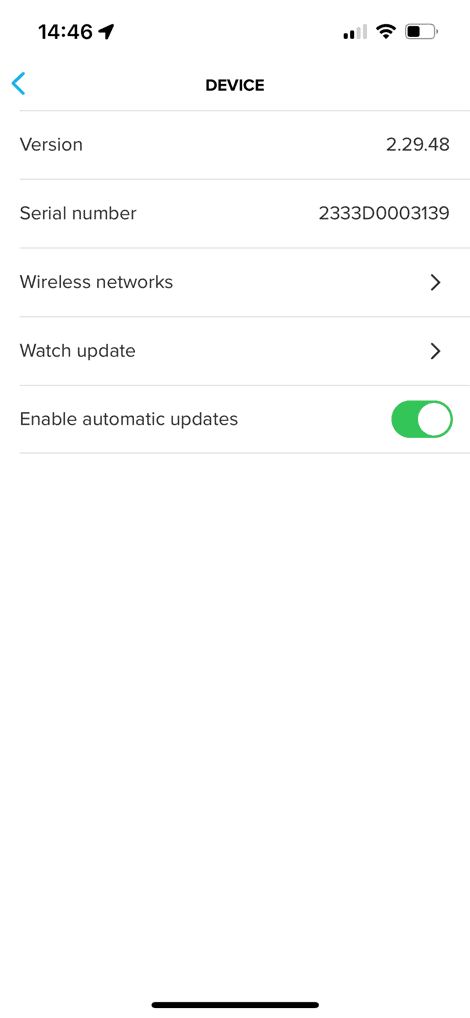
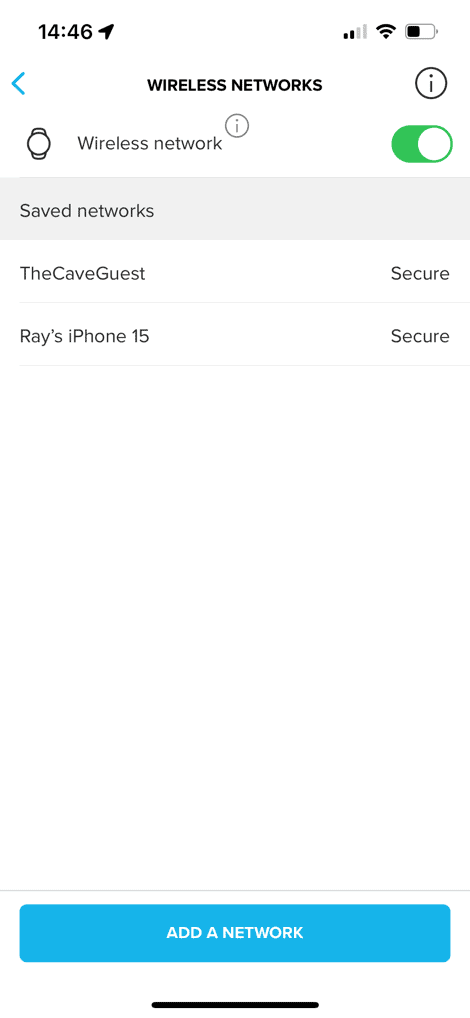
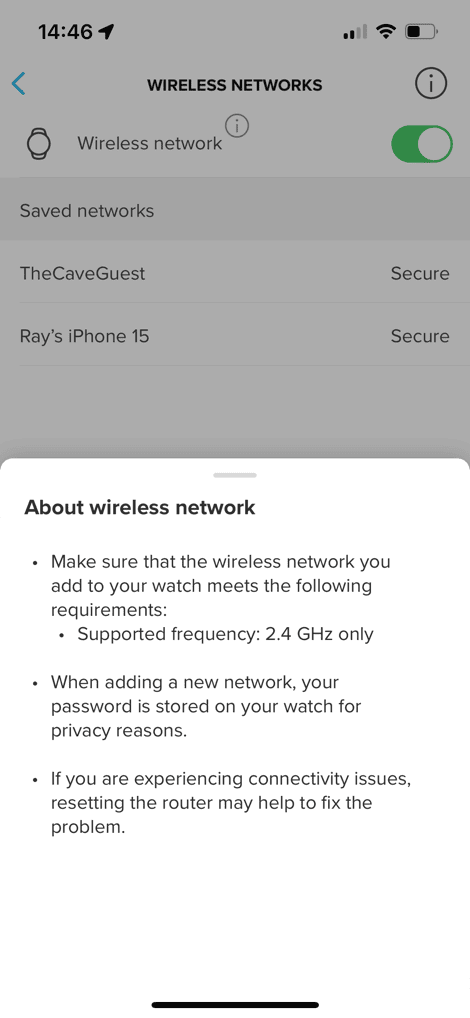
Next, you’ll choose which maps/regions you want. Suunto’s region picker allows you to get fairly granular on the exact area you want. This is great that you can download smaller map regions if you’ve got limited connectivity right before an adventure (whereas Polar & Garmin are massive multi-GB map sizes). It also means you’d have to try really darn hard to fill up the 16GB on the base model, let alone 32GB. On the downside, if you’re traveling in a foreign country, you might not know the correct/exact region name for the area(s) you’re in, since those don’t usually align to provinces or cities.
Downloading maps uses the aforementioned WiFi, once placed on the charger. You’ll see it connect to WiFi and download any maps in the queue. This is kinda nice in that if you know you’re going on a trip, you can choose a bunch of regions, then put your watch on the charger to top-up. This process doesn’t tend to be fast though, so give yourself some time.
Once maps are loaded, they’ll be on your device till you delete them. Now, quickly let me just give an overview of the basic ‘levels’ of mapping/routing in devices today:
Breadcrumb trail only: This is when you don’t have a background map, but just follow a little trail on a blank screen – this is what the Suunto devices had previously (exempting Suunto 7). It’s also on all Polar devices except the Suunto Race.
Non-routable Maps: This is when you have a map displayed behind your route, which shows terrain/trails/lakes/water/mountains/etc… Depending on the company, it may or may not show name labels too. However, this isn’t routable, so it doesn’t actually *know* if you’re on the ‘Deer Lake Trail’ – it just knows you’re on the breadcrumb track. If you stray too far from the trail, it’ll give you an off-course warning, but it cannot smartly re-route you back. It just tells you via compass how to find the trail again. This is what the Suunto Race/Vertical are, the COROS watches, and the new Polar Vantage V3.
Routable Maps: This is the ‘highest’ level, and is when the watch can actually route on the trails by itself, if needed. It knows you’re on Deer Lake Trail, and the next trail coming up is Big Bear Trail. And it knows if you miss that turn, whether or not you need to turn-around, or can catch-up later on. This is what most of the higher-end Garmin devices are (any devices with mapping, like the Fenix/Epix series, or higher-end Forerunners).
Now, practically speaking – I’ve routed with all three types for years, and generally speaking, you’ll get to your destination just fine. However, having maps (either routable or non-routable) is a massive boost in confidence, mostly when you need to make a decision at a fork in the trail. With breadcrumb routing and slight trail junctions, it’s often just a bit of a guess or trial/error. But with maps, you can usually see terrain features (like a stream or hill) that make it easy to confirm.
With the Suunto Race, it has the non-routable maps, albeit lacks place/location labels. Still, this is more than enough in most cases. The only scenario that you really want routable is when you go off-course permanently. In that case, you want a new route, and the Suunto Race can’t do that for you. You’ll be on your own there, whereas a Garmin with routable maps can give you a new/updated route. But that happens super rarely to me.
Now, let’s look at routing on my long hike adventure. First, you’ve gotta get the route created, then into the watch. In my case, I created the route in Strava Routes, and then that automatically pushed it to my Suunto App account. However, I had too many routes in my watch (as always), and had to remove some routes first. Unfortunately, Suunto syncs routes to watches the same for all watches – so basically it synced a bunch of old routes to my watch (from years ago). I’d really like to see Suunto get rid of this limitation, there’s just no need for it with 16-32GB of storage (routes take up at most, 10-100KB, thus, 1/10th of just 1 megabyte, let alone gigabyte.
In any case, once synced to the watch, you’ll see it in your routes listing, where you can load it up and see some quick details about it.
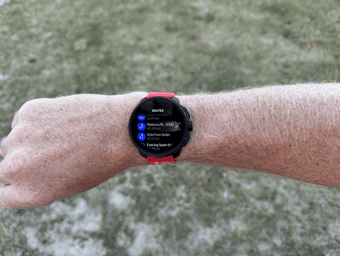
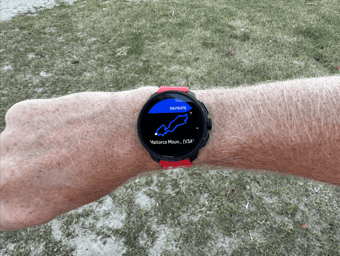
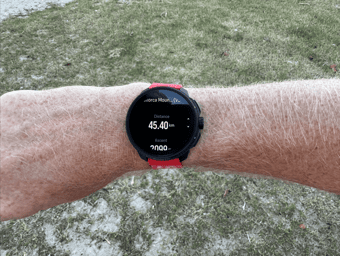
With that set, we’ll start navigating. Here I am an hour or so down the trail, and you can see my current location (arrow), my historical track (red), and the trail up ahead (blue). All of this works quite well. The black line you see is my camera refresh rate not matching the watch (you don’t see it in real life). Suunto (and Polar to a lesser extent) need to slightly tweak their display rates so this doesn’t show up for common frame rates (something that Google, Apple, and Garmin all do).

The map will automatically rotate based on the orientation of the compass, and while other portions of the watch are a bit slow/laggy, this piece is spot-on quick. I show a demo of this in the video at the top as well.
You can also see on the elevation page where you stand on the entire journey in terms of elevation – both how much I’ve completed, and how much is remaining.
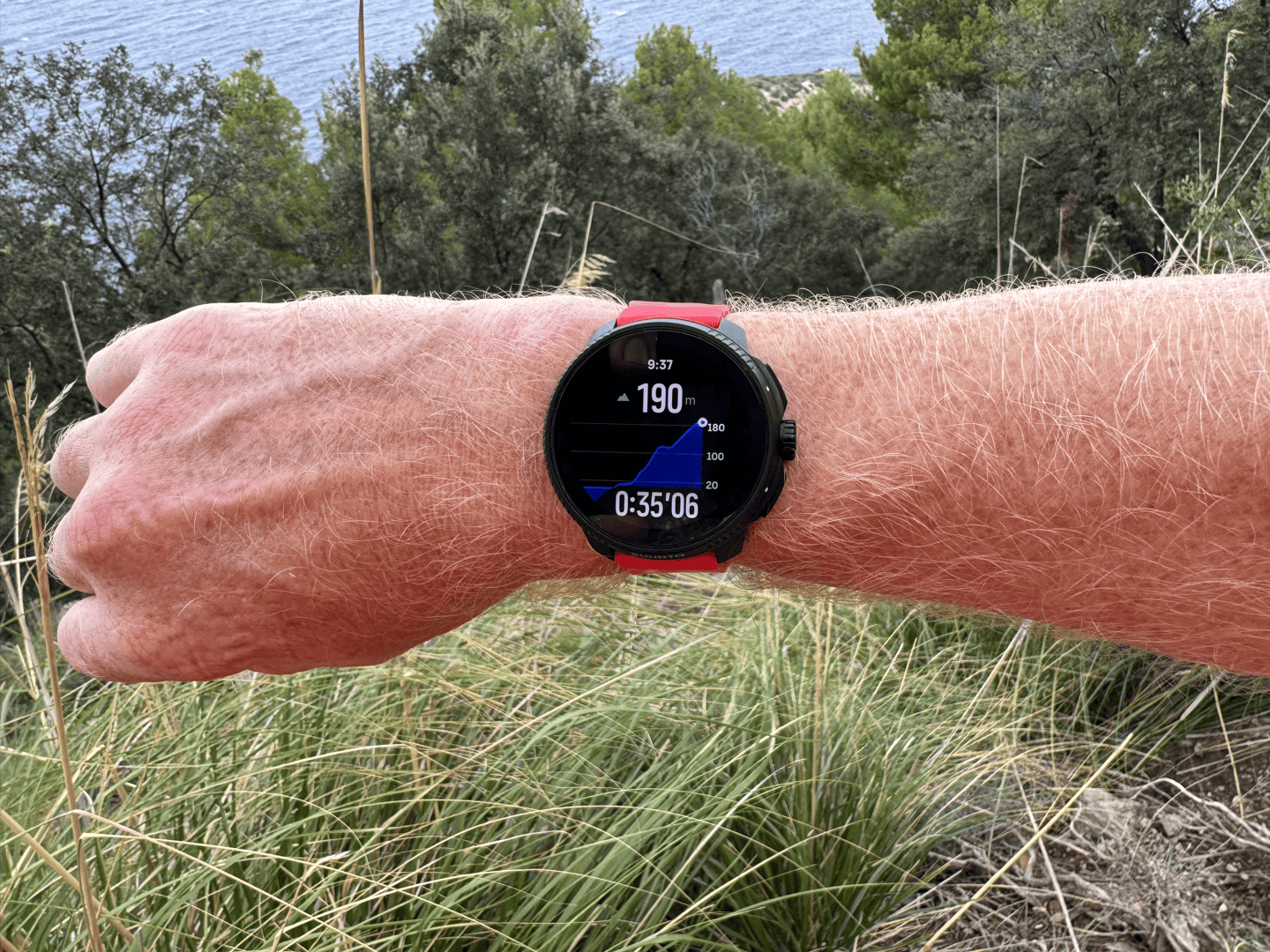
That said, one feature Suunto (a company focused heavily on the mountains/outdoors) is lacking is some variant of a ClimbPro type feature found on Garmin’s watches. Suunto does have their small ‘Climb’ app, but that’s not really the same. ClimbPro is all about telling you the details of every single upcoming climb on the route, and where you stand. Whereas the SuuntoPlus Climb app is basically just a counter for the current climb (gradient/normalized graded pace/current grade/ascent rate/etc…).
Instead, here’s the ‘Weather’ page, which is interestingly where your ETA shows up as well:
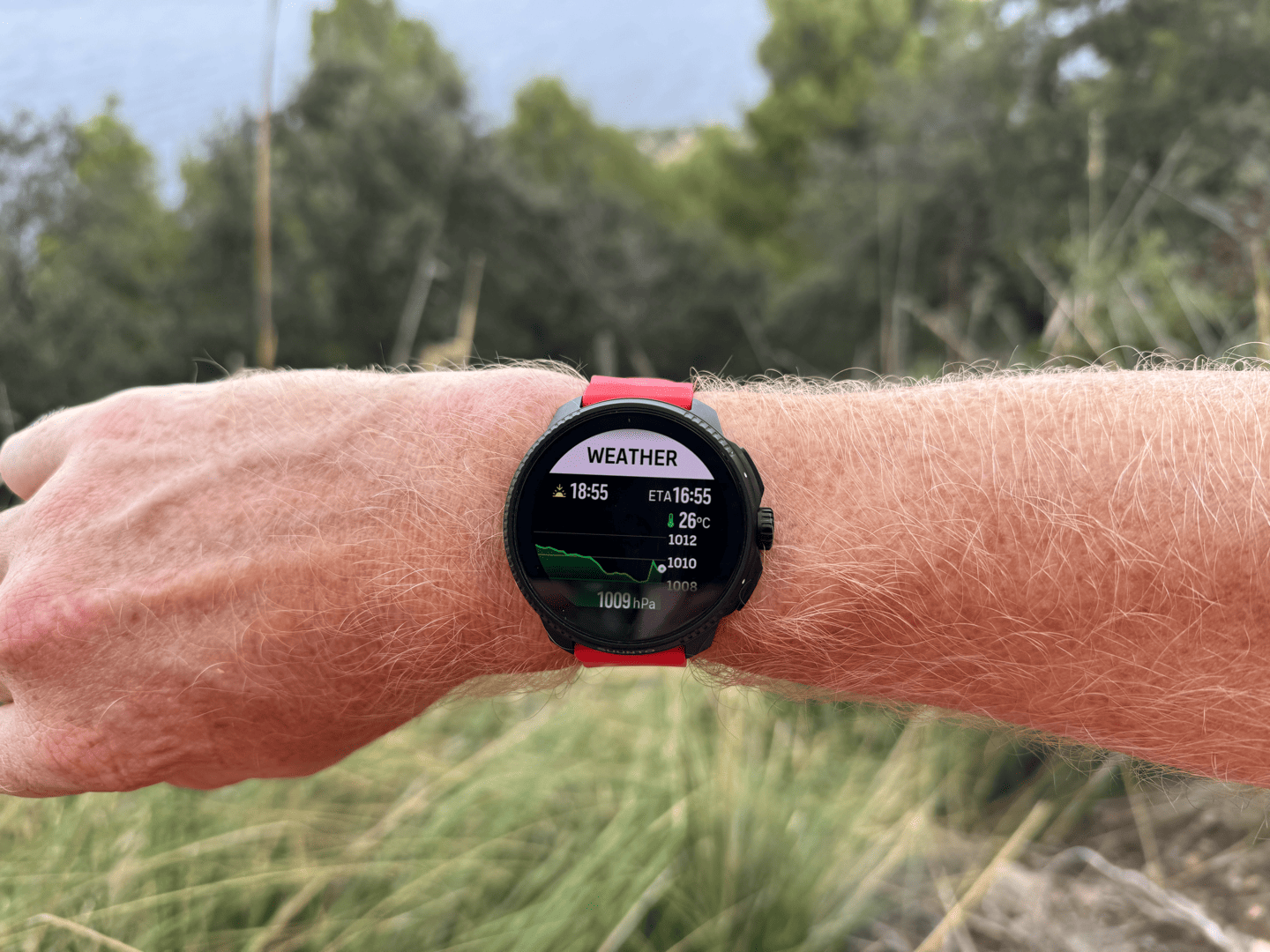
In any event, all your other data pages work just as you’ve configured them. If/when you go off-course, you’ll get a warning about that, but otherwise, it just gives you a heading bug as to which direction to go to get back on route.
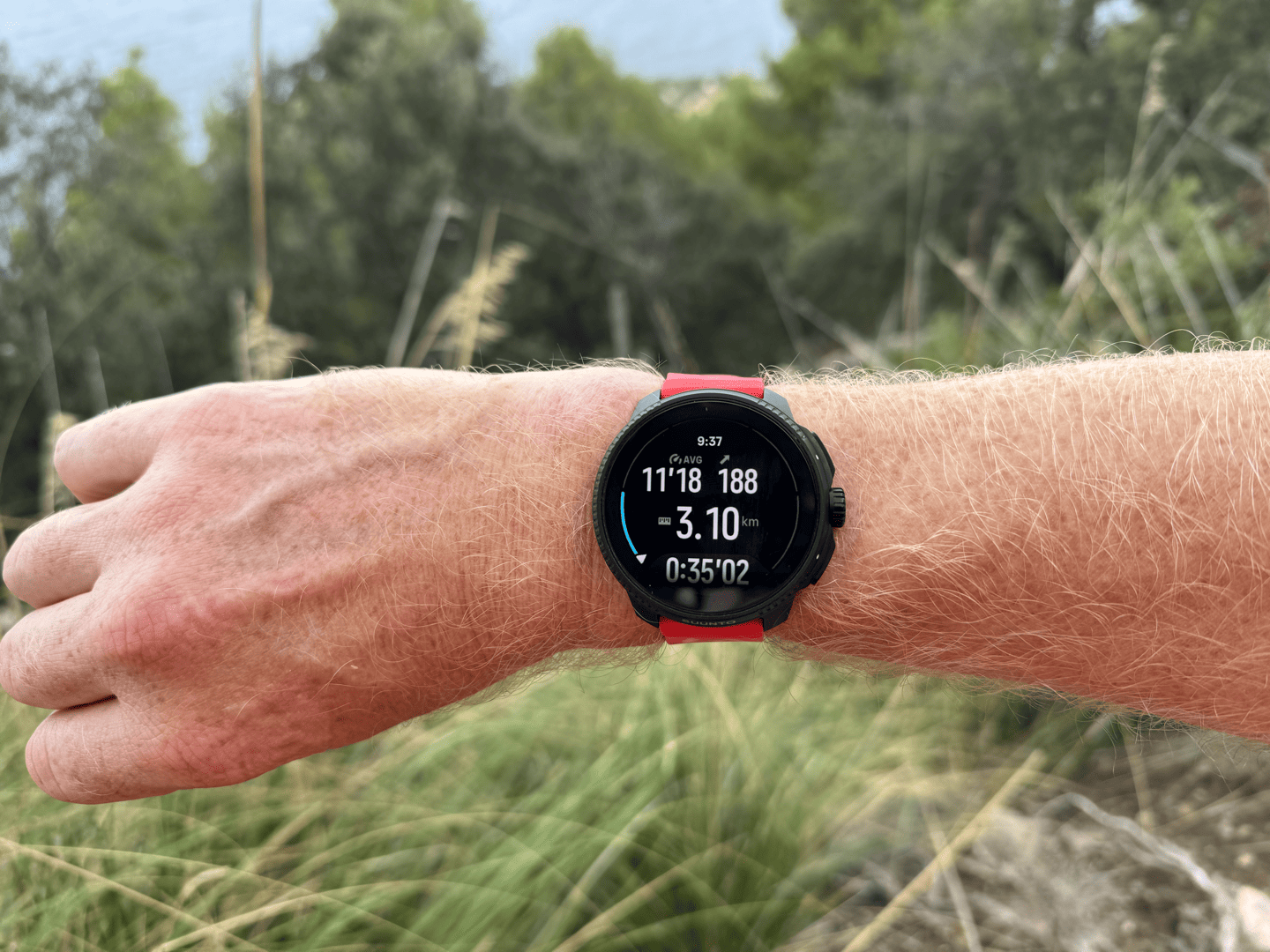
Note that for turn-by-turn directions, you’ll need to ensure the option is toggled in the Suunto App, before transferring it to your watch. Else, you won’t get such directions:
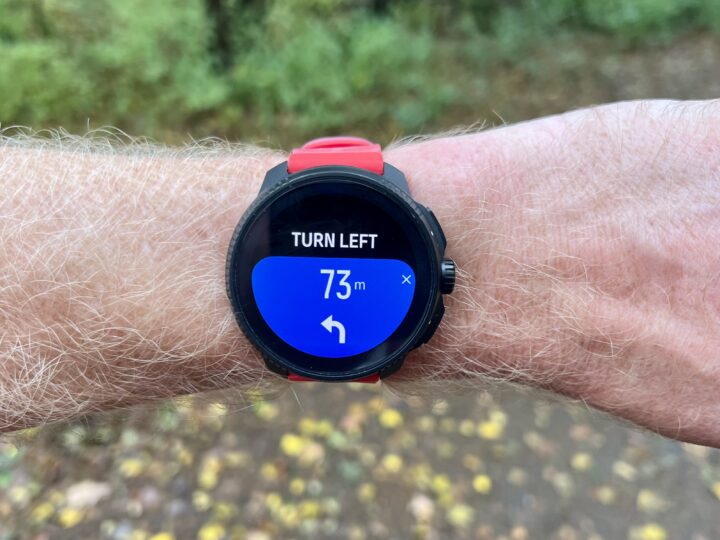
Meanwhile, on the map side, you can zoom in/out using the Digital Crown, which works reasonably well in terms of usability (and as I noted earlier, is really the only area I find digital crowns useful for). However, the main downside here is that Suunto limits your zooming out in a dismally small 500m radius. It’s insanely frustrating, especially when you’re trying to figure out whether you can short-circuit a portion of a trail or such. [Update: Just got notice this morning, that limitation is being increased to 2KM next Monday via firmware update.]
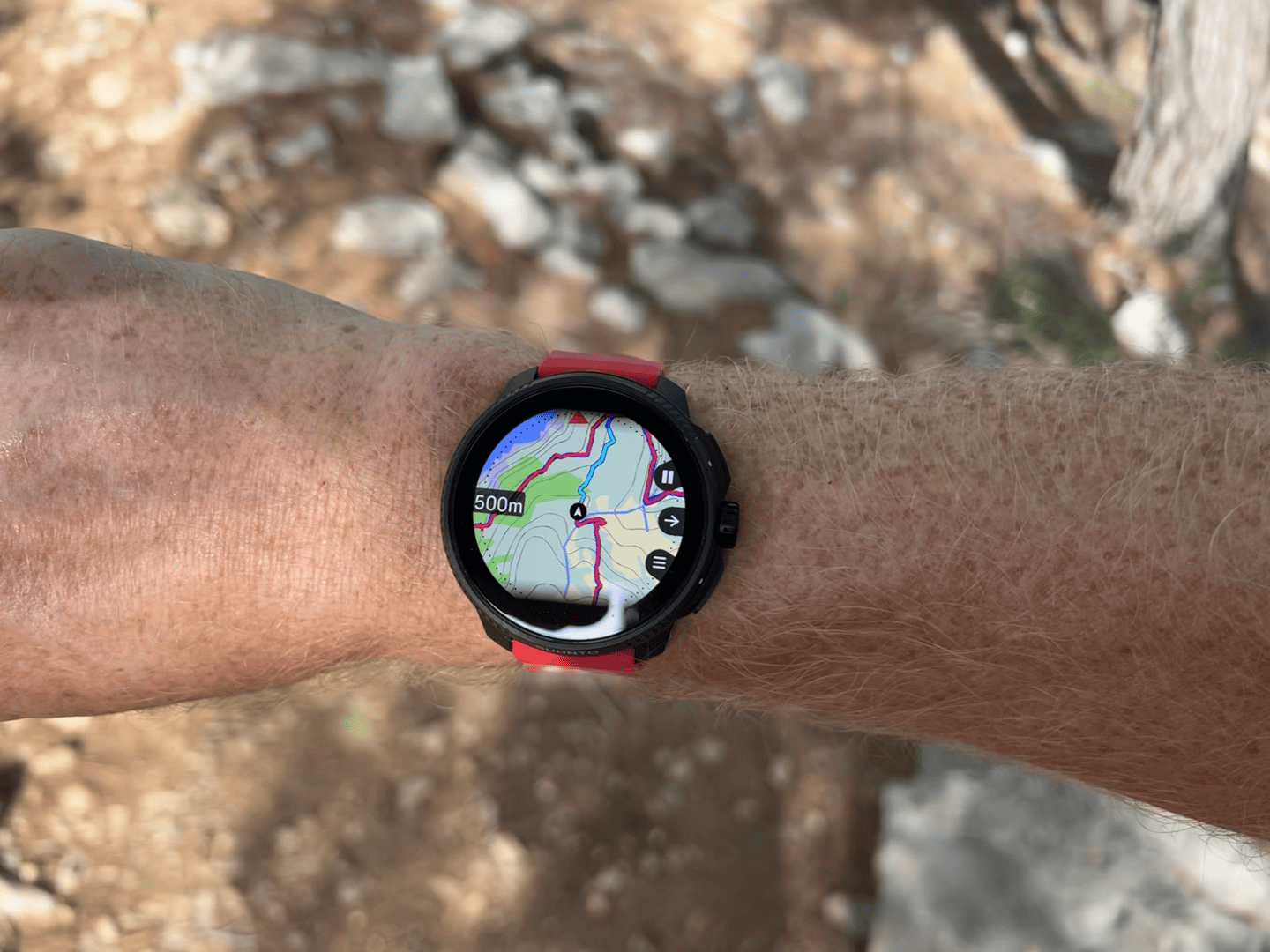
Note that you can also pan the map around using your fingers, or the little map controls with the buttons. Also note that there are two different map modes, light and dark, which you can toggle if you want. Or, it’ll do it automatically when you get to sunset. There is no High Contrast map option on the Suunto Race like there is on the Suunto Vertical, which kinda makes sense given the whole thing is high contrast (versus the MIP display isn’t as contrasty).
Likewise, you can access your POIs (points of interest) from the map settings page, as well as tweak other navigation settings. You can create/save your POIs ahead of time in the Suunto App, and then push them to the watch for easier access. This can be useful for specifying a campsite for the night, for example. Or, where ice cream is located.
So, what about battery life? Well, it’s impressive. The main purpose of me spending 12.5 hours wandering the mountains of Mallorca (including in the dark) was to see how the battery handled on both this and the Polar Vantage V3.
What’s cool is that last month, Suunto quietly added support for writing the battery state levels to their exposed .FIT (workout) files, which in turn enumerate in the DCR Analyzer. This allows us to see the exact battery levels throughout these longer activities for devices/companies that support the data (Garmin, Wahoo, Stages, Suunto, Hammerhead):
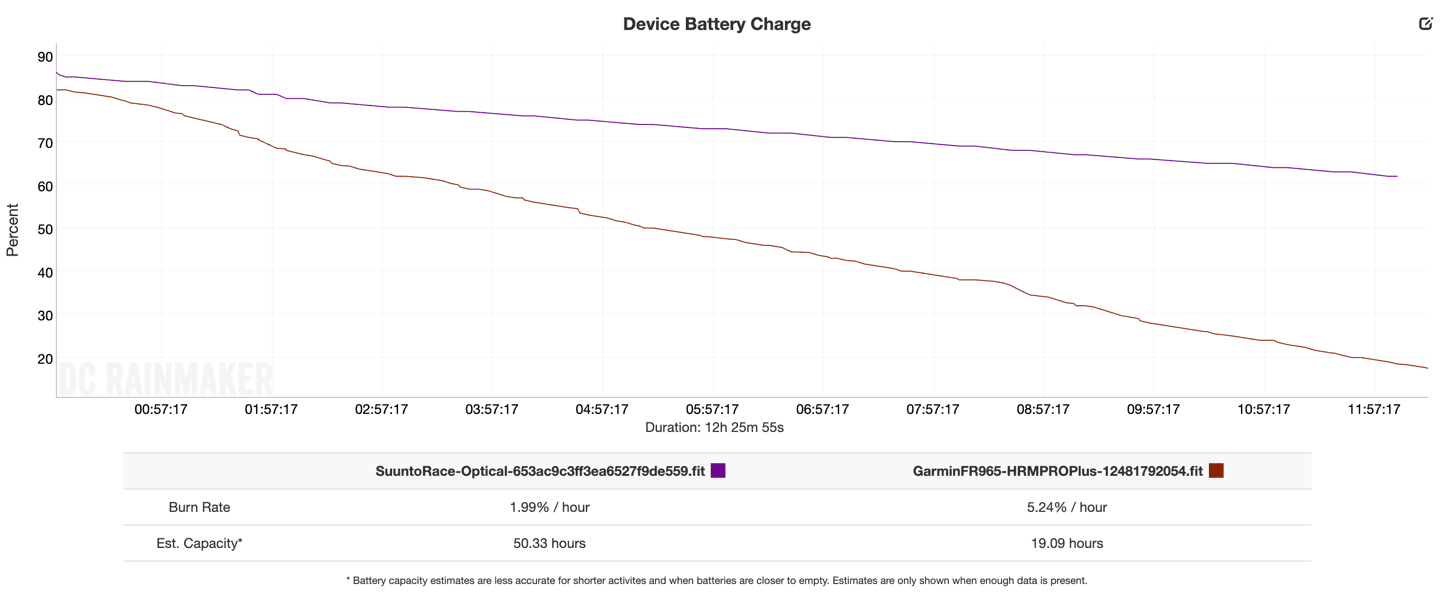
For those that don’t support it, I simply manually track the start/end points. With that in mind, here’s how the four watches I had with me handled over those 12.5 hours. All watches had the course loaded, except the Polar Vantage V3 watch crashed repeatedly after 2hrs, and thus I had to remove the route to keep it from crashing. In general, I keep the data pages the same on the watches the best I could.
Meaning, the map page burns the most battery, so if I was using the map page on one, I’d try to do it the same on the others (COROS has no maps on the Pace 3). Mostly though, I kept it on non-map pages unless I was in a spicy area (not easy to follow trails), which, was quite a bit initially:

Both the Polar Vantage V3 and the Suunto Race have optical HR enabled (which burns more battery), whereas the Garmin Forerunner 965 and COROS Pace 3 were connected to a chest strap for HR (which burns far less battery).
In any case, here’s the total burned (the COROS Pace 3 isn’t really a competitor in this particular race, it was just along for the ride). As a reminder, Suunto claims up to 40 hours in this multiband configuration, so even despite alway-on display and navigation enabled, it easily beat that.
COROS Pace 3 (MIP display): Burned 67% (from 100% to 33%)
Garmin Forerunner 965 (AMOLED): Burned 64% (from 82% to 18%)
Polar Vantage V3 (AMOLED): Burned 90% (from 95% to 5%, when it force-ended activity)
Suunto Race (AMOLED): Burned 24% (from 86% to 62%)
Obviously, each of these units have different batteries. For example, the Forerunner 965 isn’t really positioned as a long-battery life unit from Garmin. Instead, that’s the more expensive Garmin Epix (AMOLED) or Fenix (MIP) series. Still, price-wise the Garmin/Suunto/Polar are in the same ballpark as competitors.
So yeah, in short, super impressive battery burn on the Suunto Race – very happy with that.
GPS Accuracy:
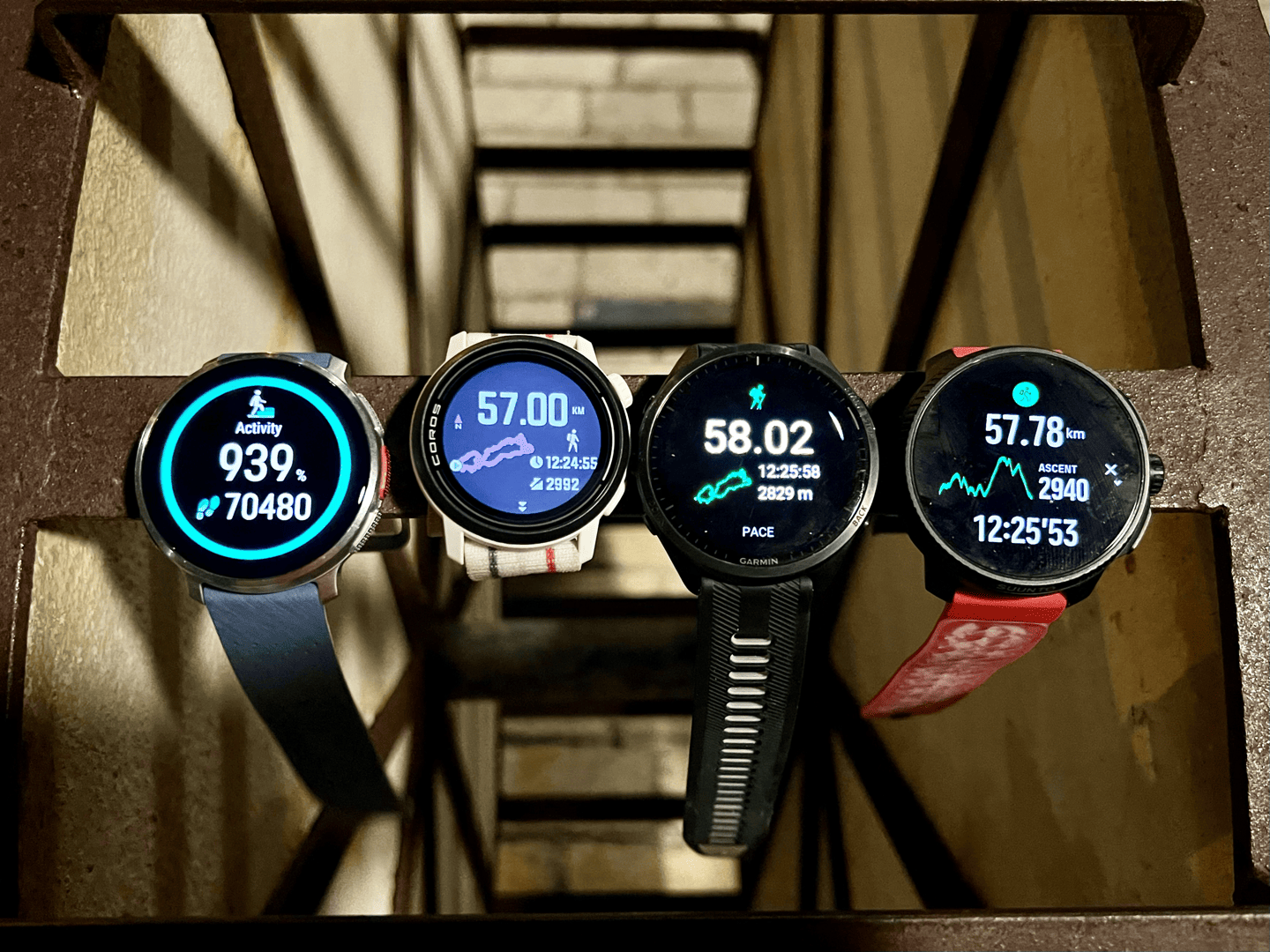
First we’ll take a look at the GPS, or more specifically, the GNSS system. In this case, all of my testing is done in the dual-frequency/multiband configuration, called ‘Performance’. This means it burns more battery life, but in exchange, you get higher-quality GPS tracks. For all other watches listed in this section, I’m using the highest accuracy option of each one – which is almost always multi-band (the exception being the Google Pixel Watch 2, which lacks such hardware). In the case of Garmin watches, I leave the default ‘Auto-Select’ mode, which basically automatically engages multiband/dual-frequency when it senses the environment needs it (buildings/mountains), and then steps down to lesser GPS options in areas like open farmland.
Note that for all of these tests, you can click on the link next to each one to see the full test, and zoom around inside the GPS map with all of the tracks to analyze as you see fit. I’m going to focus on the most interesting (good or bad) portions of each route.
With that said, let’s look at this first test that heads into the forest for a loop. This is compared to the new Polar Vantage V3, and Garmin Epix Pro. Here’s that data at a high level, which looks pretty similar at first:
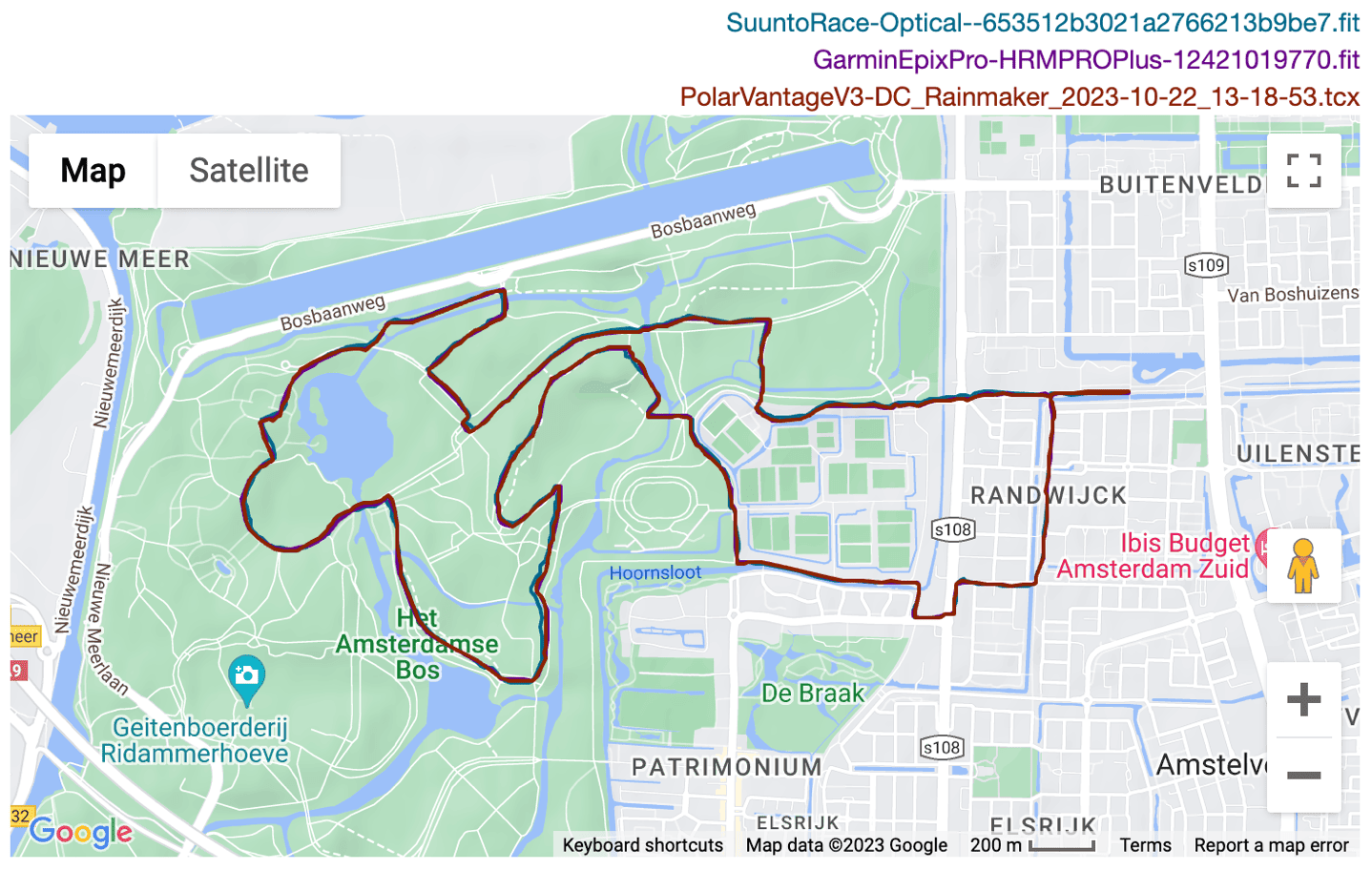
And indeed, as I meander around the forest, the three units are largely very very close, with the Suunto Race making a few minor quirky errors initially:
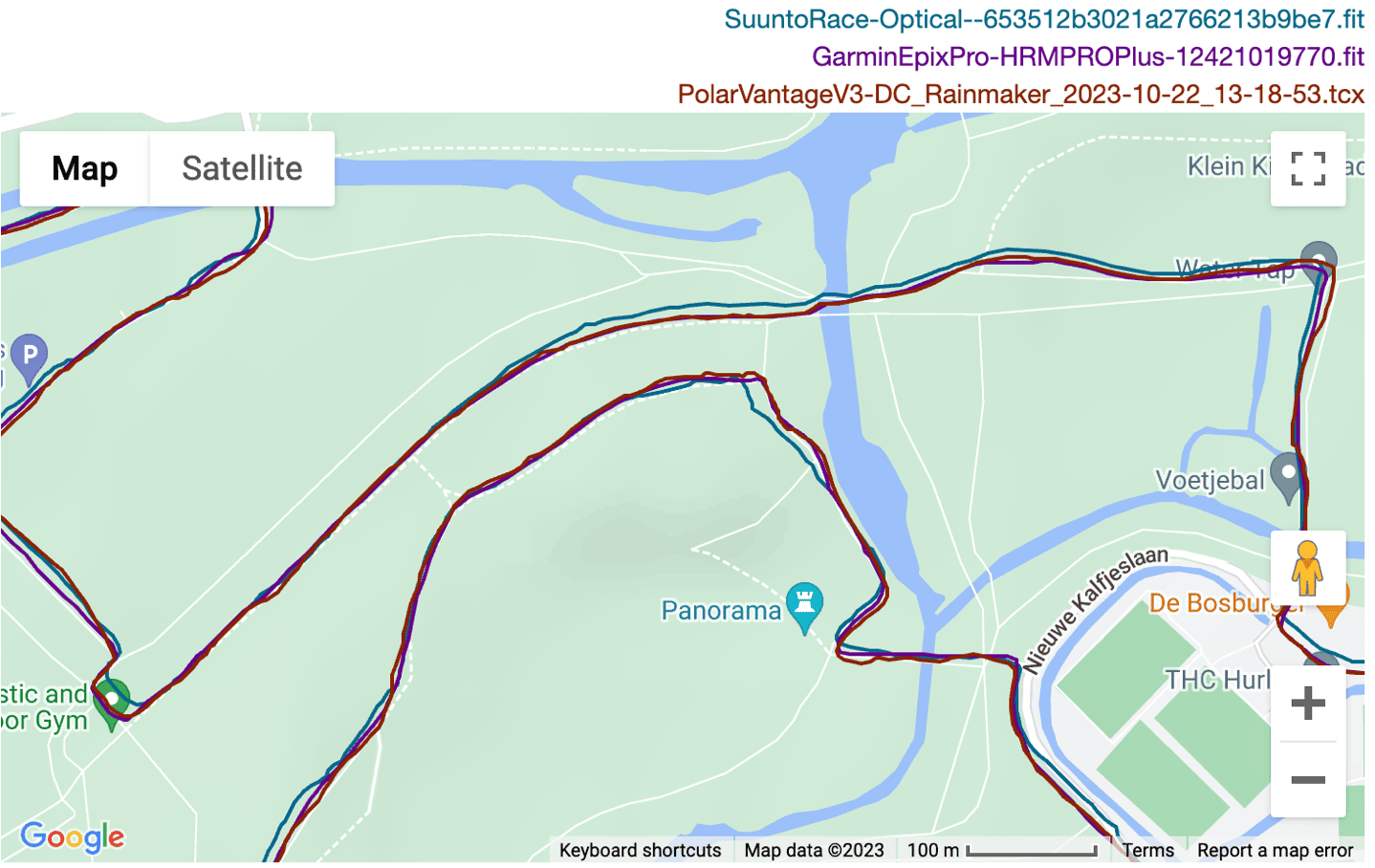
And then trading places with the Polar Vantage V3 making a few minor errors:
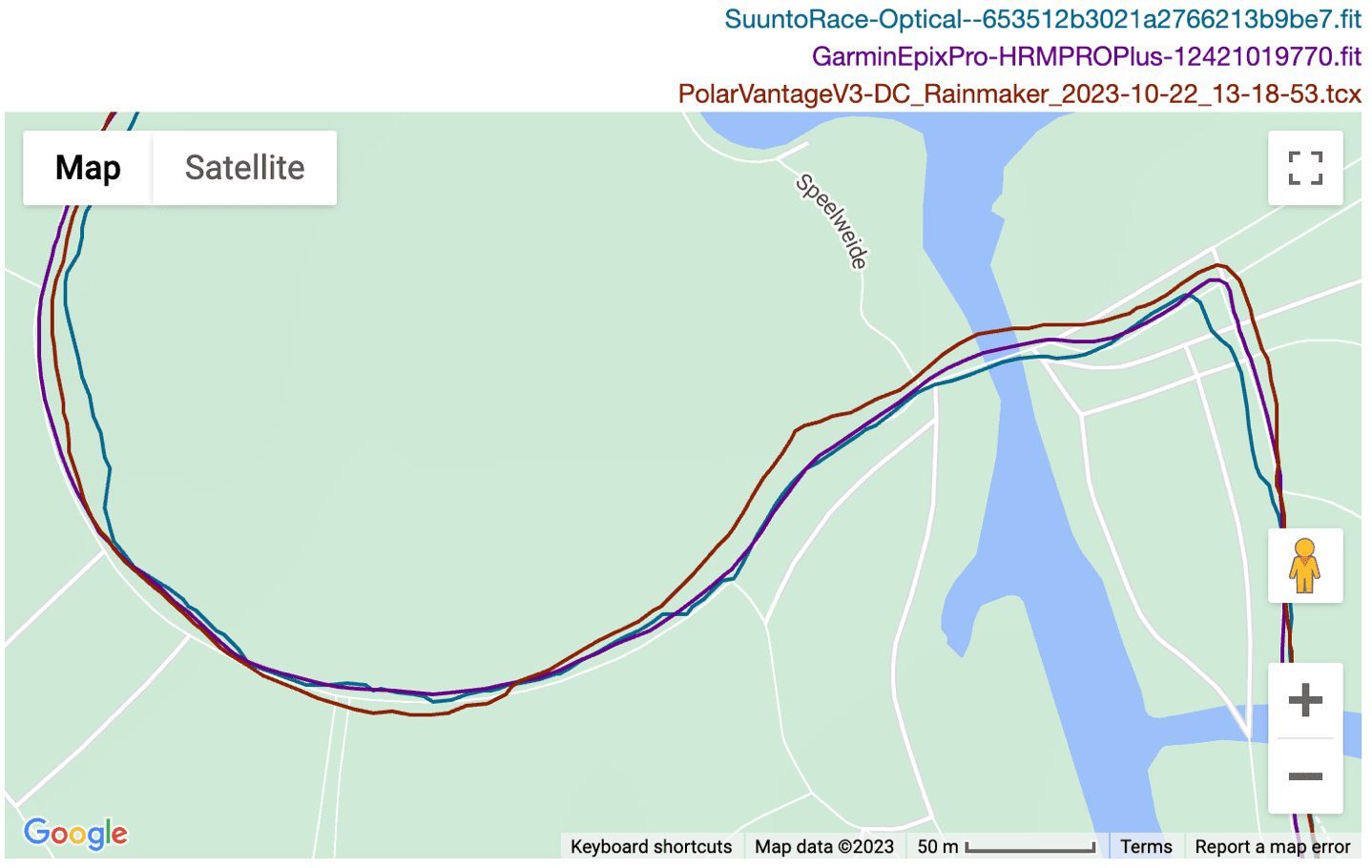
Again, these are pretty minor, so let’s move along to something more interesting.
This next one I’ve got a couple-hour hike/trail run in areas that are occasionally forested, and occasionally open, along with some occasional cliffs. As long as I don’t fall off said cliffs into said trees, it’s all good. Oh, and I started from town where there are some taller hotel buildings, but nothing of major consequence. Here’s the data and overview:
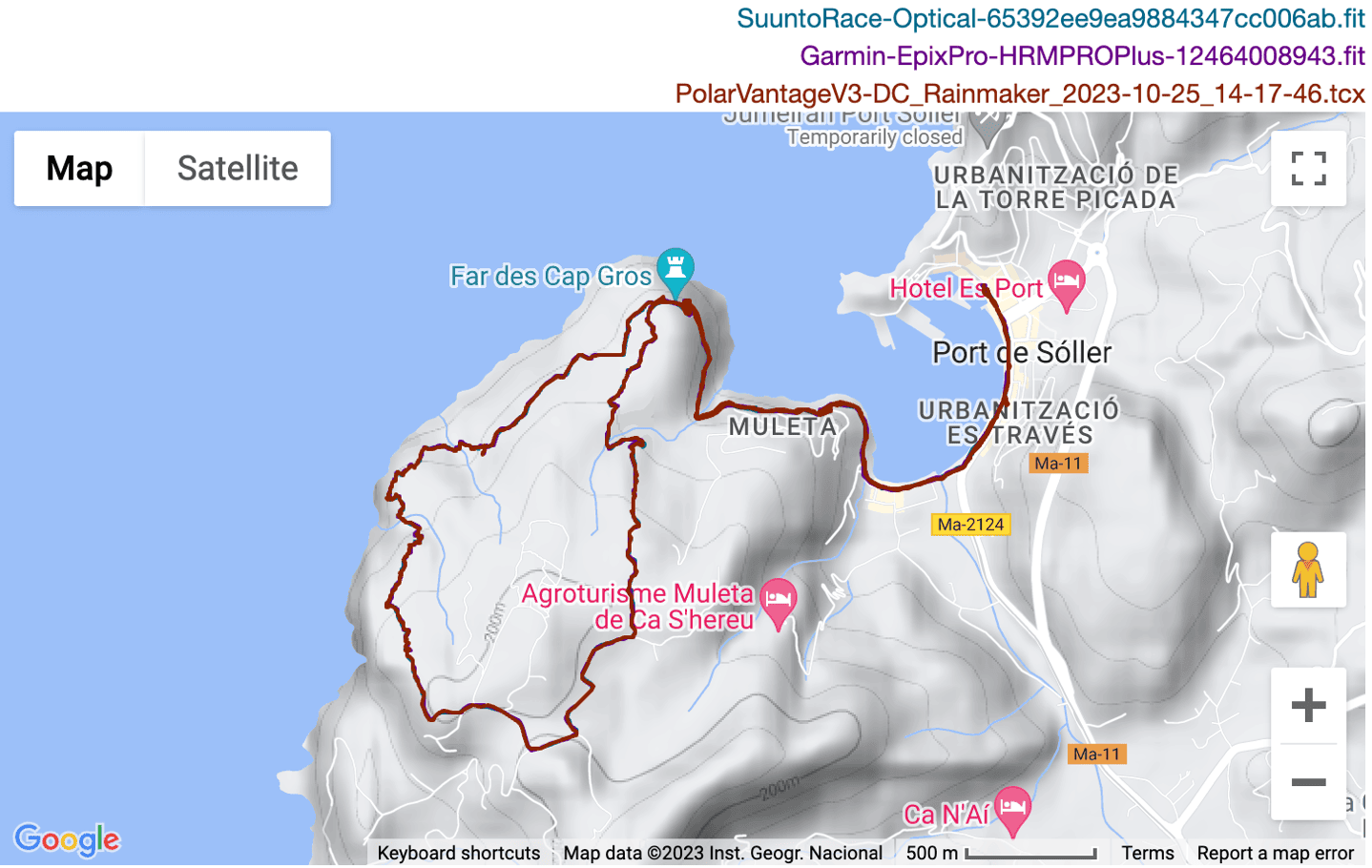
If I scroll around a bunch, I don’t see any meaningful difference between the three units (Garmin Epix Pro, Suunto Race, and Polar Vantage V3) – they’re all basically the same:
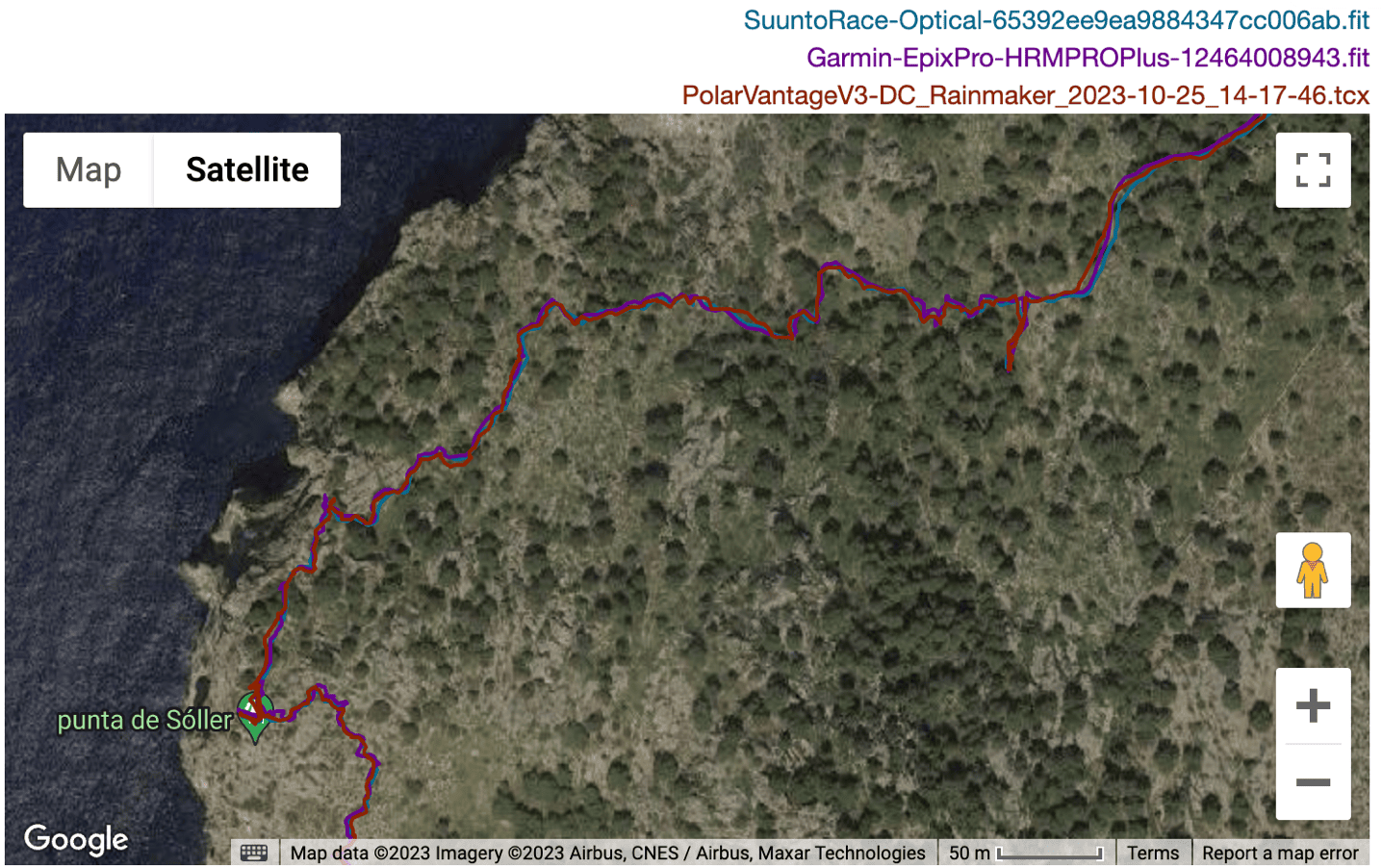
Here as well:
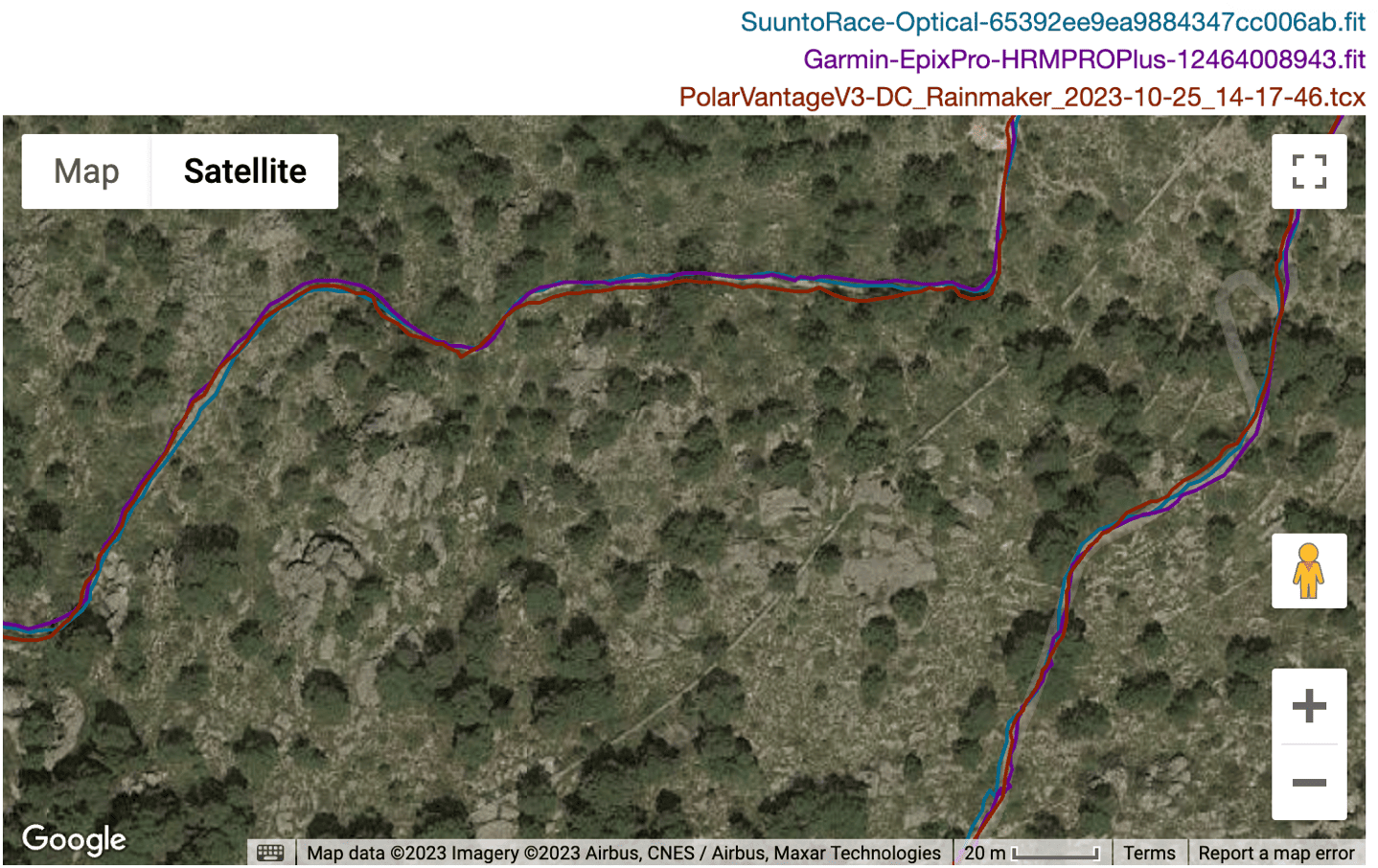
So, let’s increase the difficulty a boatload, and do a bit of a city test. This test is done in virtually every one of my GPS watch reviews in the last few years, and is incredibly difficult to do well. I go up and down the business district streets, with buildings that are 20-30 stories tall, on either side of small streets:

For some streets, I run directly down the middle of the street (when able), and for others, if I have to be on the sidewalk, I vary which side of the street I’m on halfway down the street, so that no one side is favored. In general, a ‘great’ watch on this test will still struggle a bit. Whereas a ‘bad’ watch will look like a toddler’s drawing.
Starting at a high level, here’s how things looked for the entire (larger) route, which includes numerous underpasses/tunnels, and more.
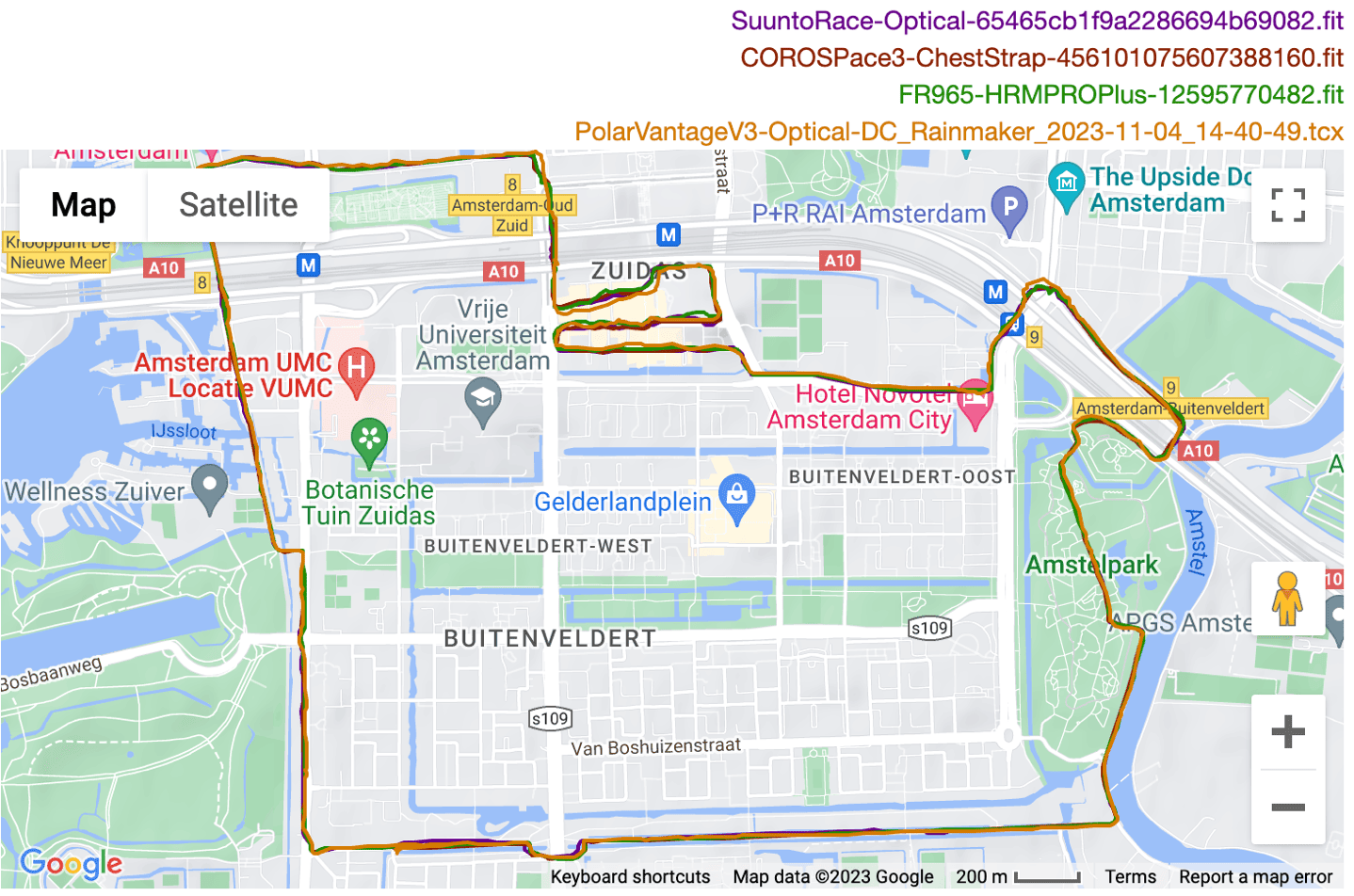
Starting with the non-complicated parts of this course, along the river and such. Here it’s all good. No real issues from the Suunto Race or Polar Vantage V3:
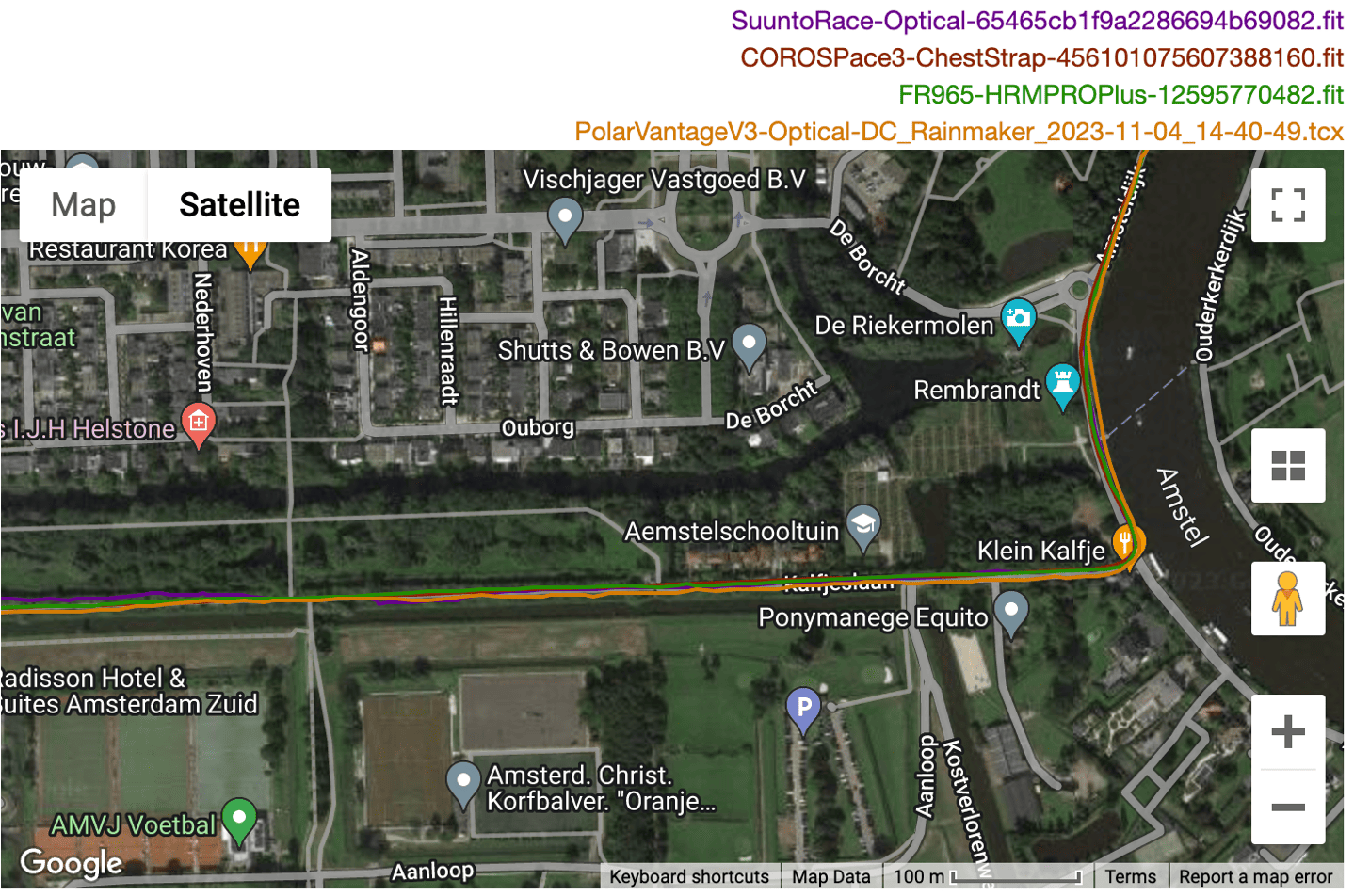
We do see a few somewhat minor errors/offsets with the Vantage V3 as it rounds some of these corners and goes under the massive highway/train/etc overpasses. Along with this section a bit later under another tunnel and near some buildings. But the Suunto Race sticks all of these perfectly:
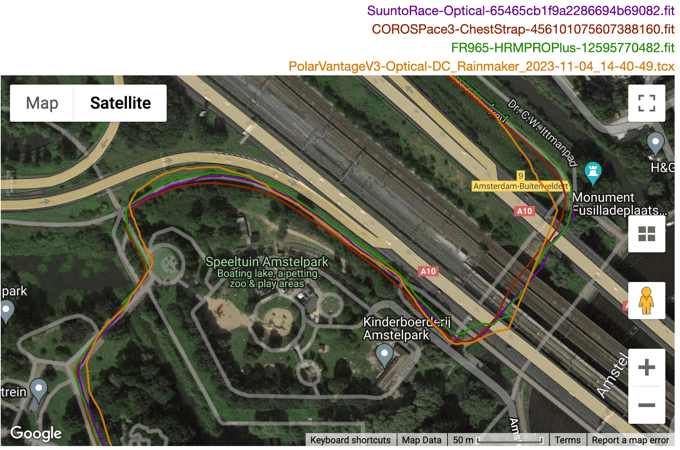
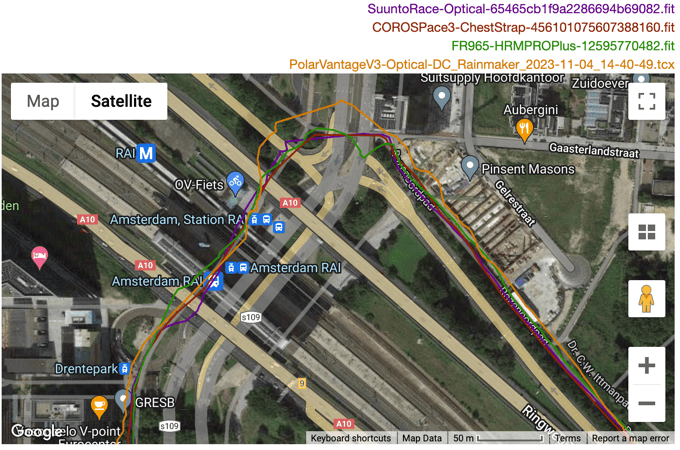
But, we’re here for big-ass buildings, not big-ass highways. And thus, we arrive at the section that GPS devices wince at:
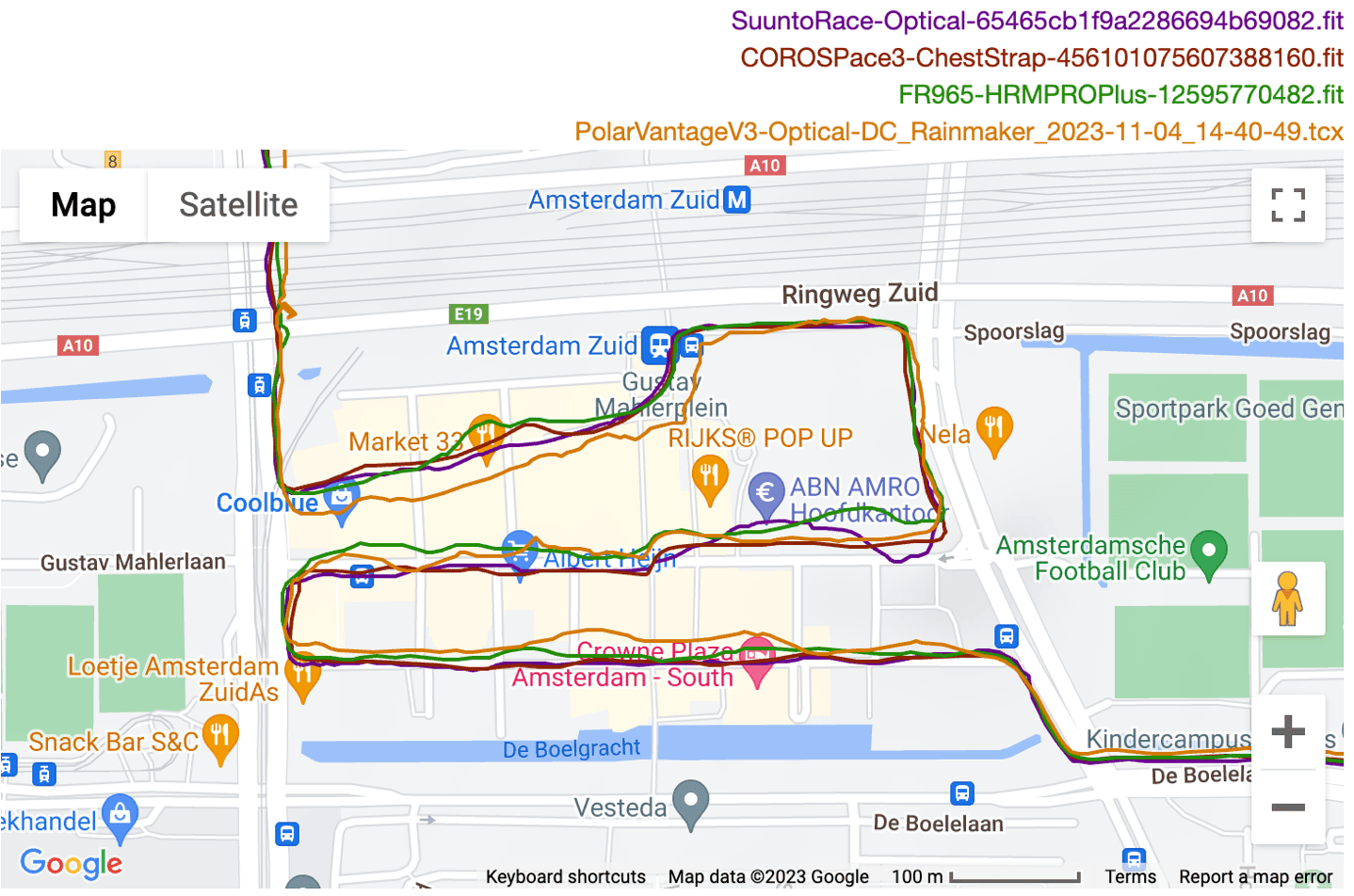
Here you can see the Polar Vantage V3 struggles the most of the three, offset by the largest amount. The COROS Pace 3 and Suunto Race both actually did quite well here. The Garmin Forerunner 965 did ‘fine’ here, albeit it was in auto-select mode, so perhaps it didn’t scale up to multi-band fast enough. Maybe someday when I’m bored I’ll run this section a bunch repeatedly with two Forerunner 965s concurrently and see how they might differ precisely in the two modes. Overall, for this one section, I’d say the COROS Pace 3 actually stuck the landing the best (like the Forerunner 965, it’s actually done this test a few times over the last few months, and this is by far its best performance, it’s had some other so-so results as well…such is life). The Suunto Race really only made one minor error for about 100m of roadway section, otherwise it would have won.
In any event, the rest of that particular test was mostly uneventful. A few tunnels that it skipped a beat on, but nothing major.
Next, let’s look at the 58KM hike that I did. Albeit, due to the crashes in the Polar Vantage V3 it only recorded the last 8hrs worth (as it lost data from the first 4hrs). Nonetheless, there’s plenty of spicy mountain terrain in that to look at. Here it’s compared against the Polar Vantage V3, Garmin Forerunner 965, and COROS Pace 3. The quick overview here:
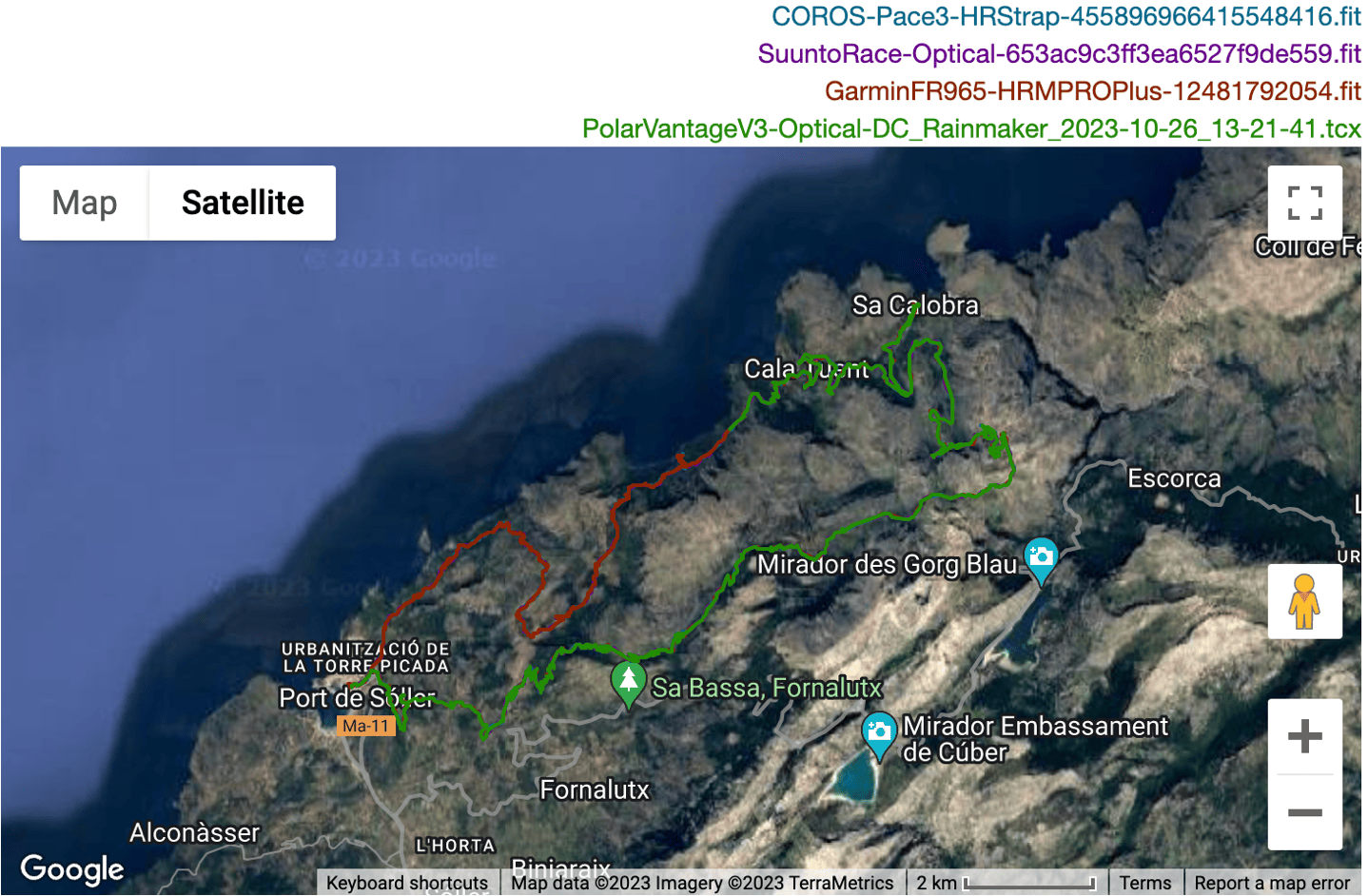
Looking at the section here as I climbed up over a ridge and through some wooded areas, virtually all of the units were identical:
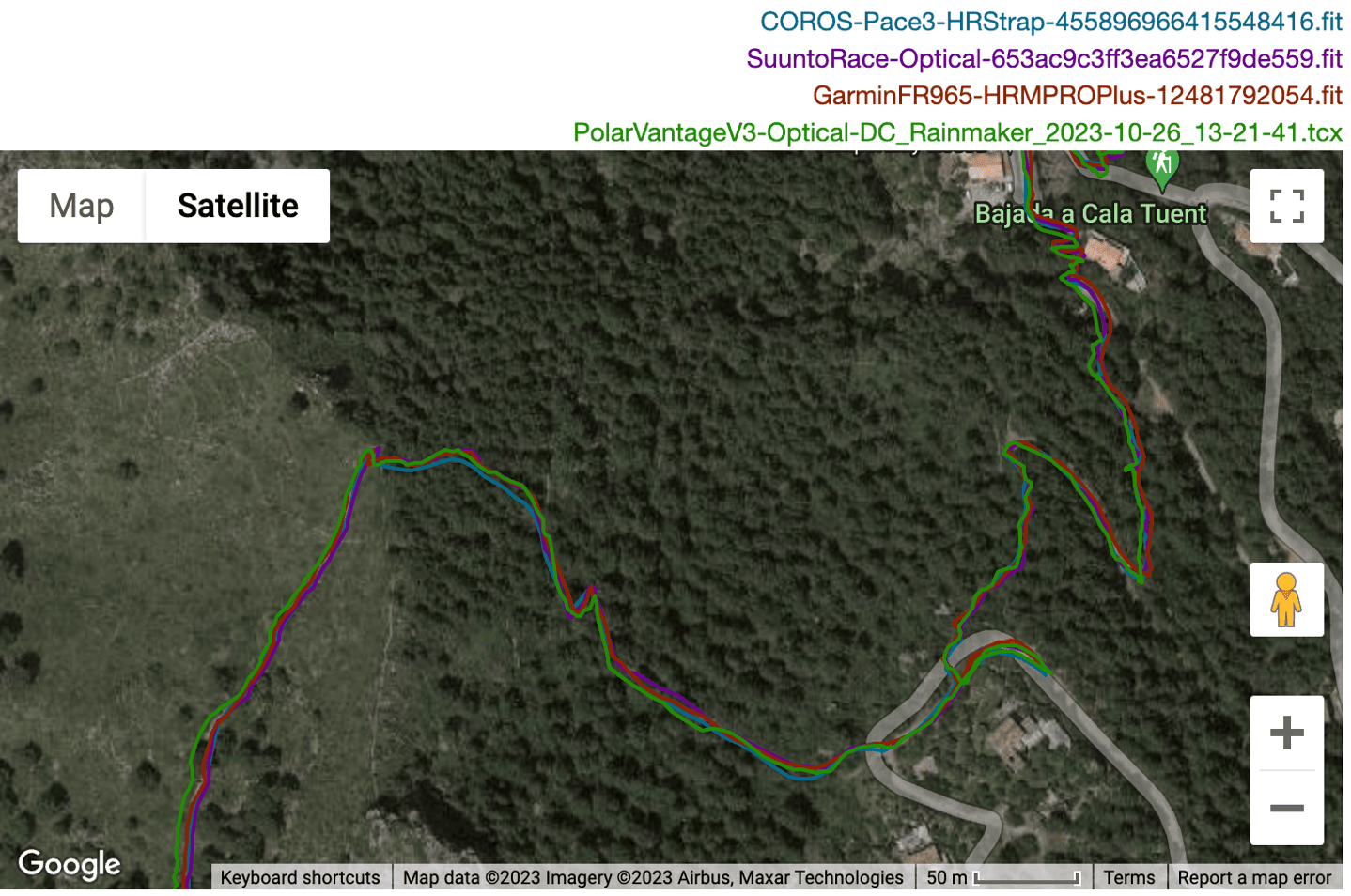
Due to the trail being overgrown beyond passibility, I had to divert for a bit onto the Sa Calobra road to get up over the mountain pass. During this section, all four watches seemed to handle just fine:
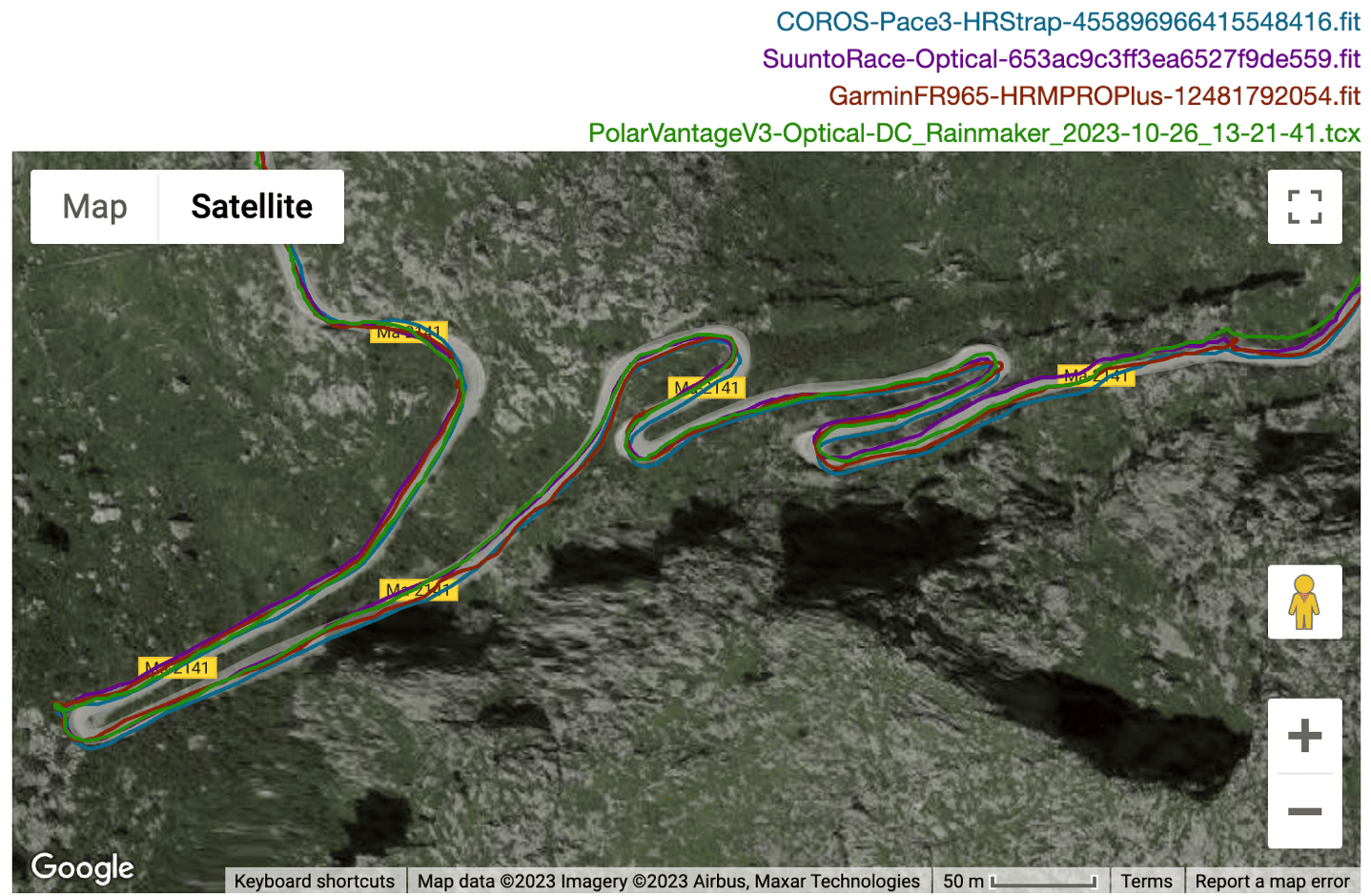
Once back on the mountain trail, I didn’t see any issues – it was solid throughout all of this long traverse into the stiff headwinds:
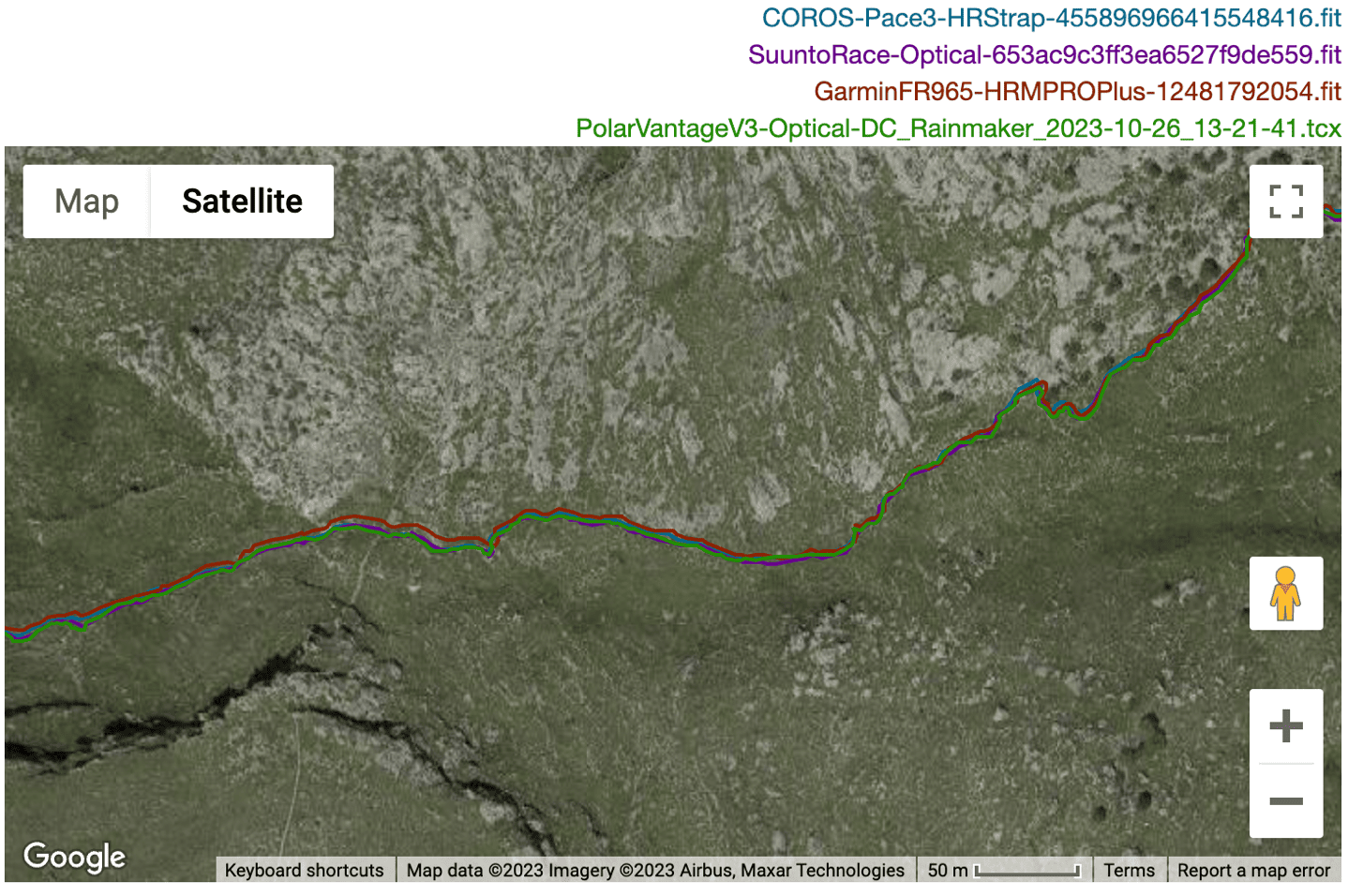
There were actually very few moments where the four disagreed, such as this steep descent in deep woods alongside cliffs, where the COROS Pace 3 seems a bit offset from the others, but not that meaningful in the context here.
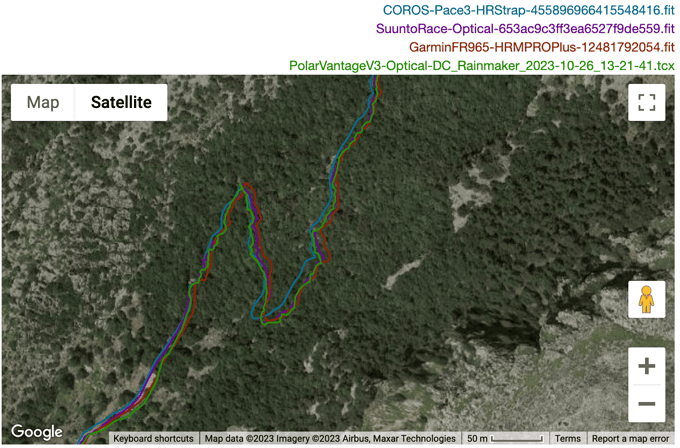

Oh, and if I look at elevation here, here’s that chart (again, remember the Polar data on this chart starts about 4hrs in). We can see it’s very very close, though, in the last hour the COROS & Polar drift a touch bit high, but the Garmin and Suunto nail it, sticking the landing back on the beach where I started at perhaps 1m above sea-level. All this despite spending 12.5hrs in the mountains with shifting temps and pressure from day to night.

Next, here’s an outdoor cycling workout, this one up some switchbacks in Mallorca. It’s compared to the COROS Pace 3 on the other wrist, as well as the Garmin Edge 840 cycling GPS/bike computer. Here’s that data at a high level
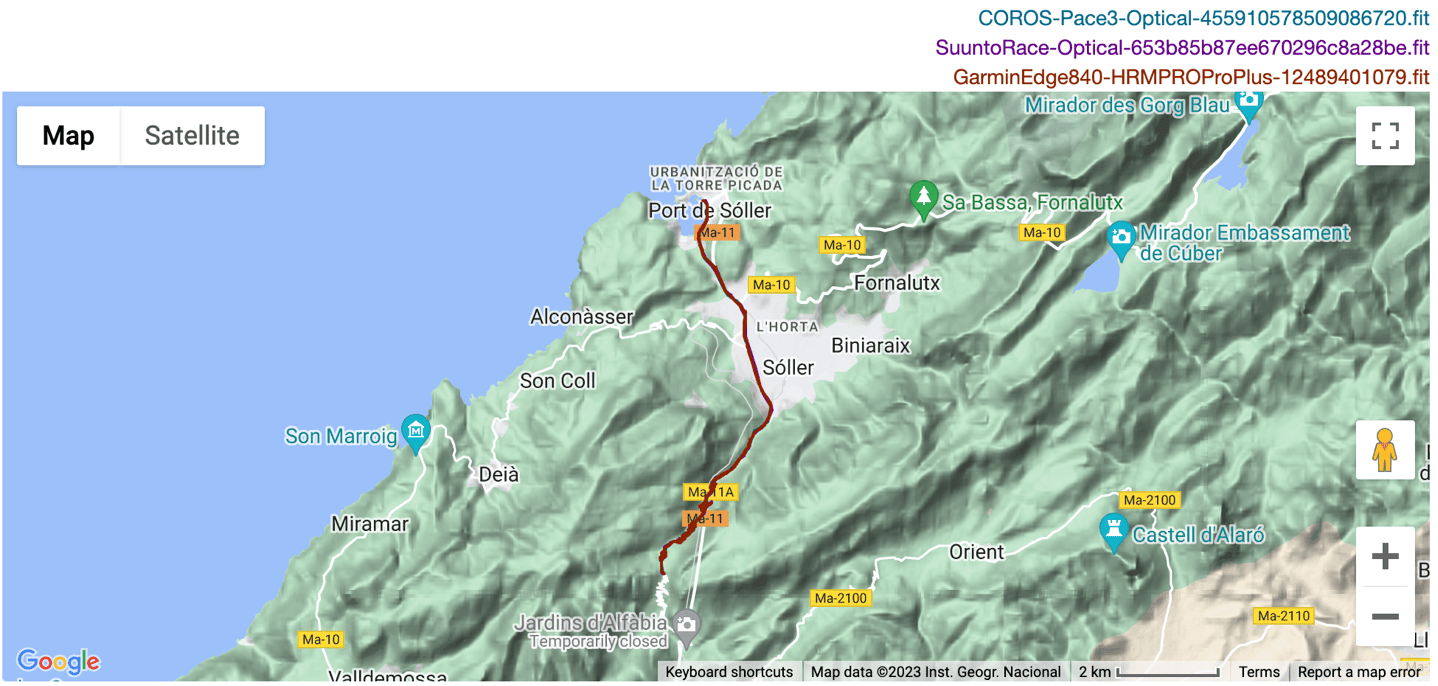
Now, I was mostly just interested in one section in the mountains on these switchbacks. Everything else was boringly perfect by all units. And indeed, this section was solid too:
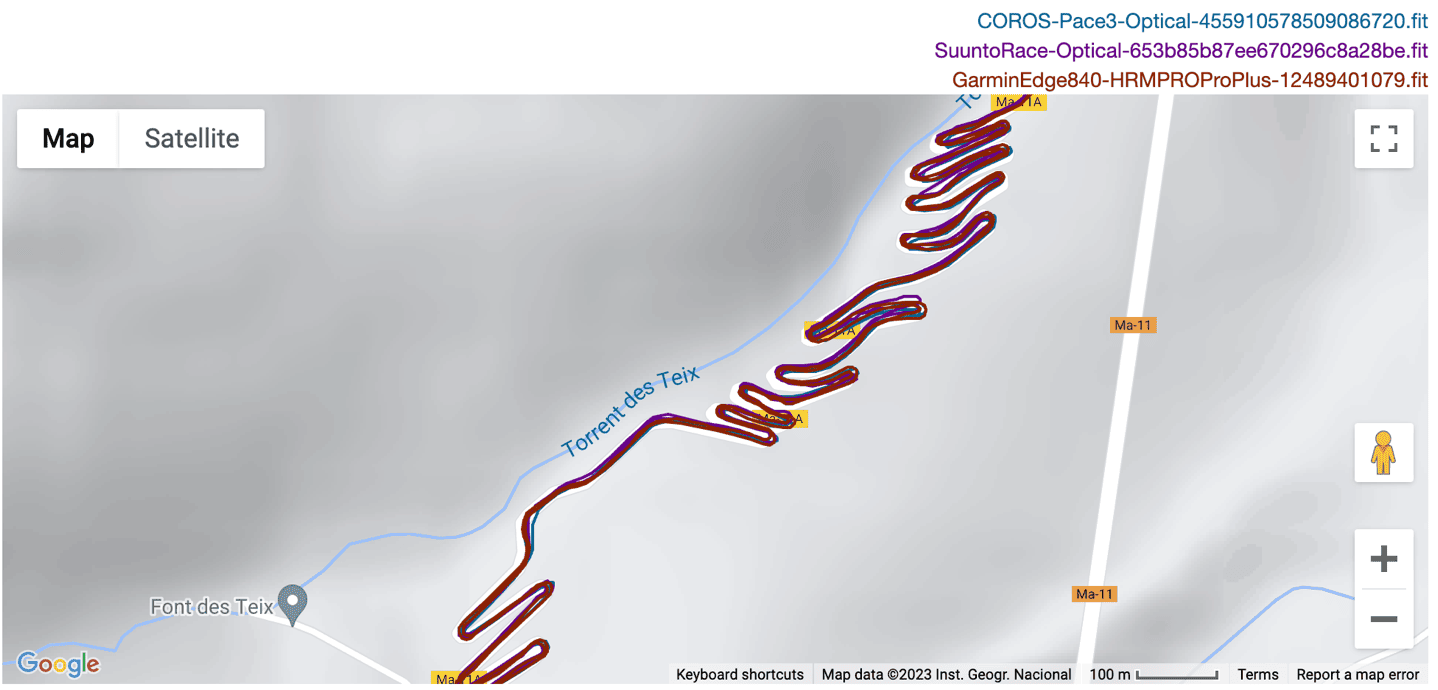
Also, for fun, here’s the elevation graph:

So, what about open-water swimming? On the right wrist the Suunto Race, and on the left wrist the Polar Vantage V3. Then a swim buoy with me (dragging along) with another GPS for reference. Here’s that data:
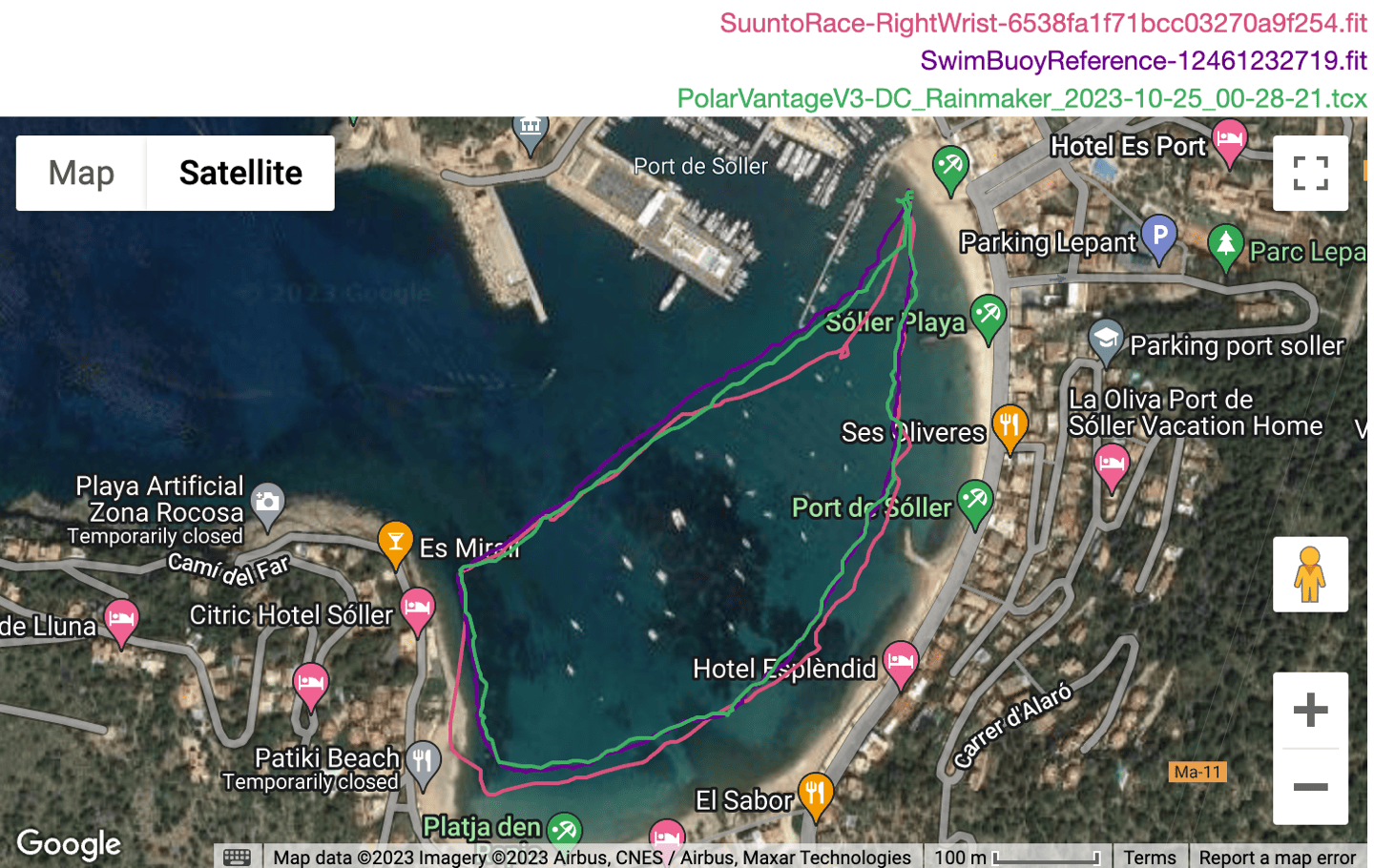
As you can pretty easily see, the Suunto Race struggled here, overshooting in various sections. This would be a common pattern.
Here’s another open water swim, the next day with the COROS Pace 3 on the other wrist instead of the Polar. In this case, it was kinda the same story. Albeit, both units made mistakes, instead of just the Suunto Race. This vaguely seems tied to moments where I paused to tread water, which historically Suunto has long had trouble with. Data set:
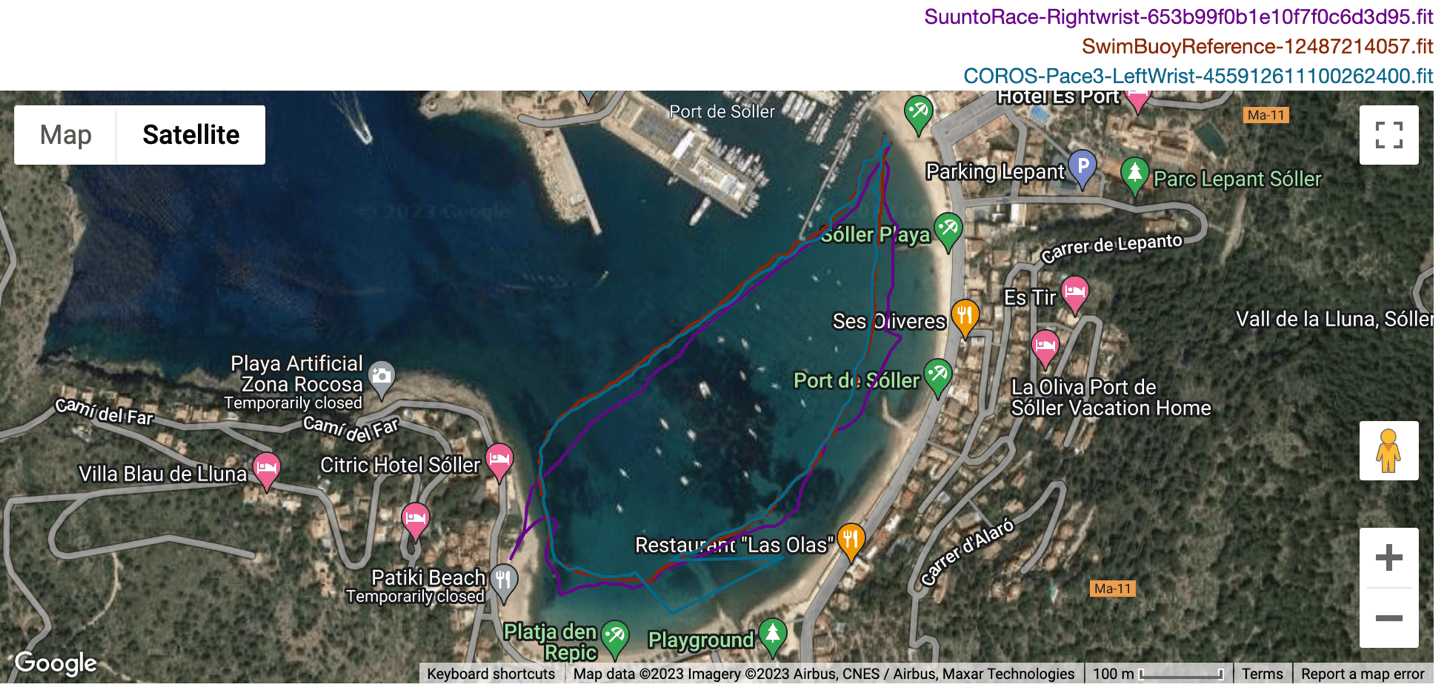
Note that this also matches some swims I did in Kona, Hawaii last month too – where it just lacked accuracy and would jump around a bunch. Suunto says they continue to be confused why I’m having troubles with the accuracy on their watches in swimming, and likewise I’m confused why (this COROS Pace 3 swim aside), it’s only their watches that I have trouble with in openwater swimming. Maybe we should all just go to a tropical island (Maldives perhaps?) and swim twice a day every day for a week until it’s sorted. Seems reasonable.
In any case, setting aside openwater swim accuracy, Suunto’s land-based accuracy appears very good, and in the upper echelon of GPS devices today on the market, largely matching Garmin and Apple (multi-band watches).
(Note: All of the charts in these accuracy sections were created using the DCR Analyzer tool. It allows you to compare power meters/trainers, heart rate, cadence, speed/pace, GPS tracks, and plenty more. You can use it as well for your own gadget comparisons, more details here.)
Heart Rate Accuracy:
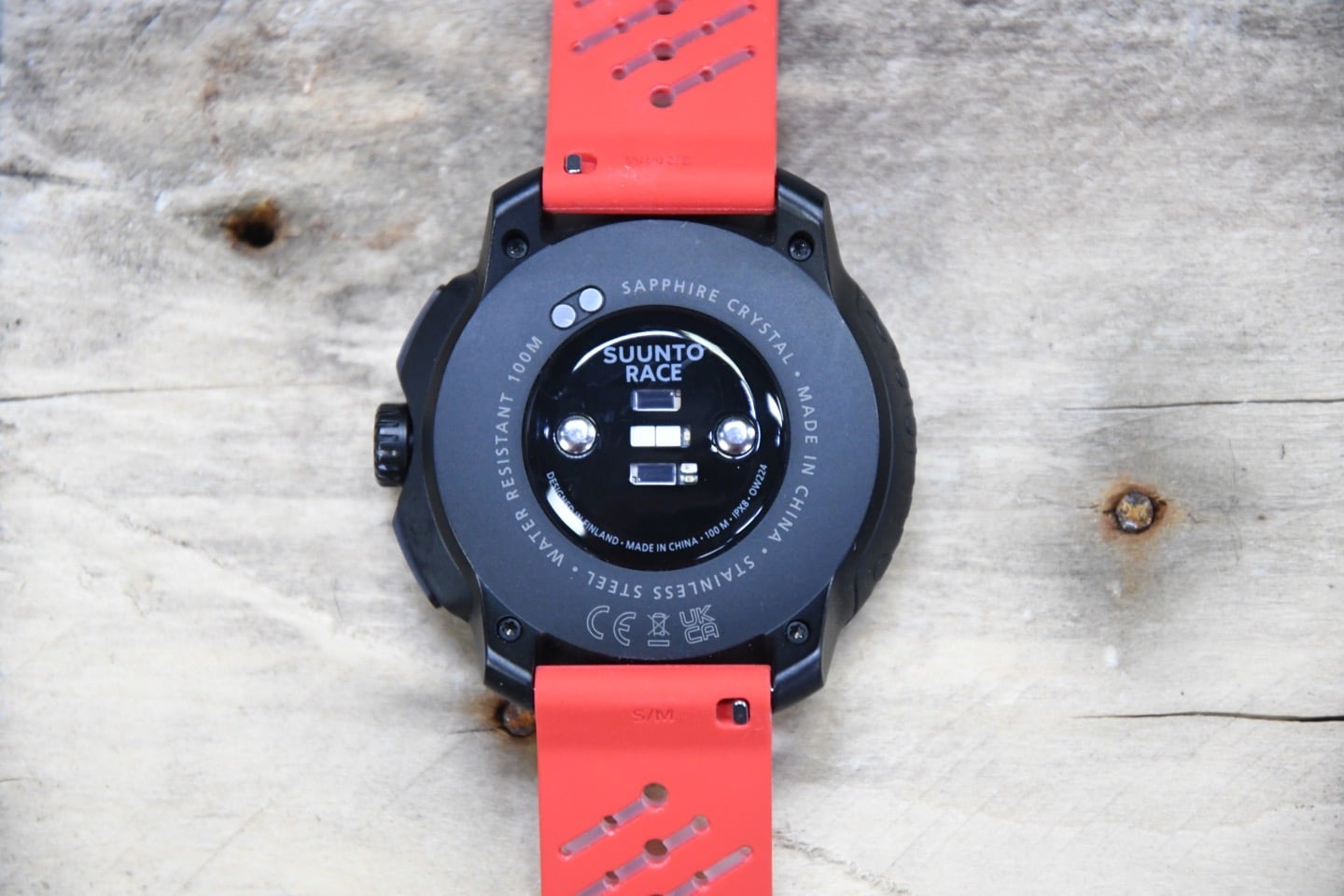
Now, remember I mentioned earlier in the review I only had two complaint areas? And that the first was slowness? Well, here’s the second – optical heart rate sensor accuracy. It’s bad. There’s no two ways to slice it.
You can click on any of the links to see the full original data set files, zoom in, do your own analysis etc. I include these so you can see I’m not cherry-picking any data portions – the full workouts are there, from start to finish. In this case I’m comparing it to other optical heart rate sensors as well as a validated/trusted chest strap to determine accuracy.
First up, we’ve got an indoor trainer (cycling) workout that starts off with some short intense intervals, before going into some longer/harder intervals. Here it’s compared against a chest strap (Garmin HRM-PRO Plus), the Polar Vantage V3 (optical HR watch), and the Whoop 4.0 strap (bicep band). That data set is here:
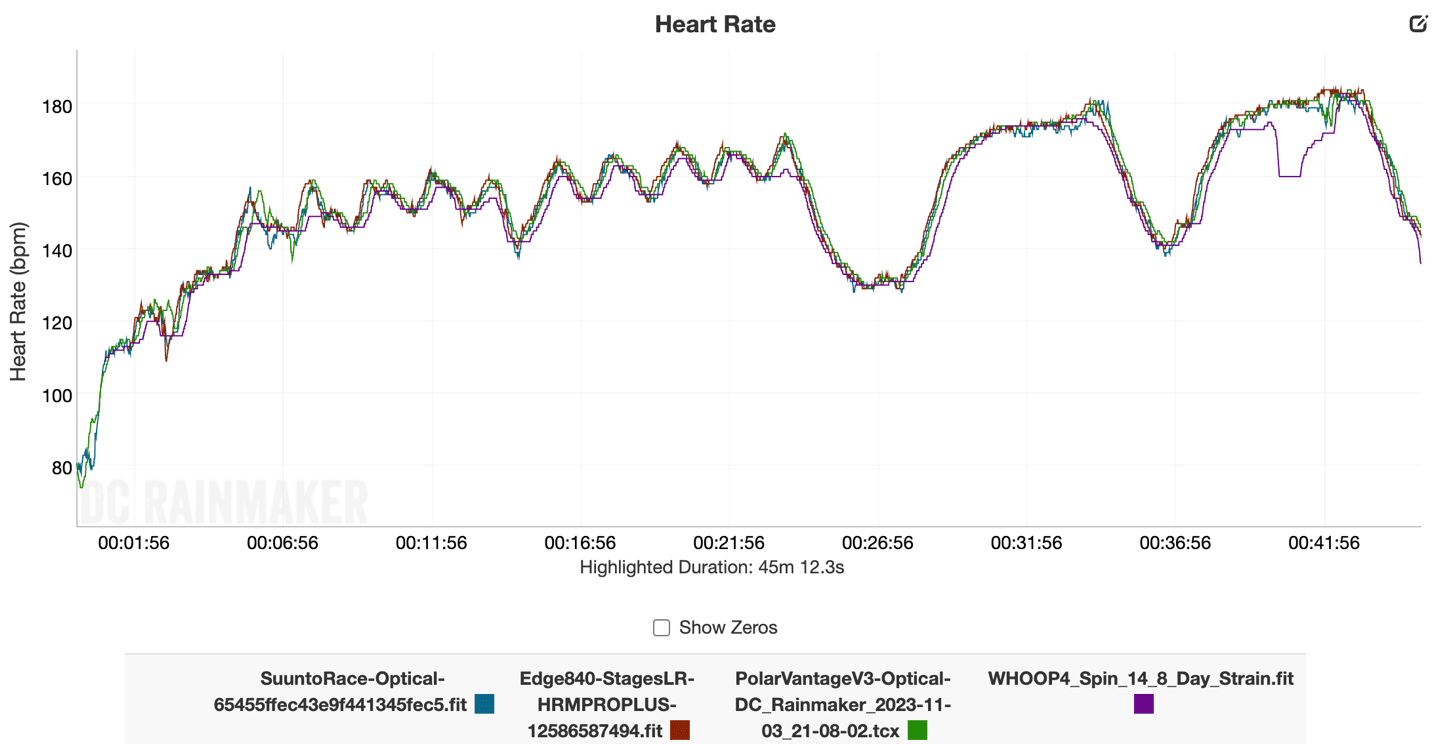
This is actually one of the best performances of the Suunto Race, only having a few very tiny variations towards the end of the last longer interval. Given how hard I was hurting then, I don’t mind that the sensor was sick of it as well.
So, let’s look at another indoor trainer workout, from three nights ago. This one was more steady-state than interval, and thus should have been easier for the sensor to follow. I only threw in a few half-hearted sprints for fun. Here’s that data set:
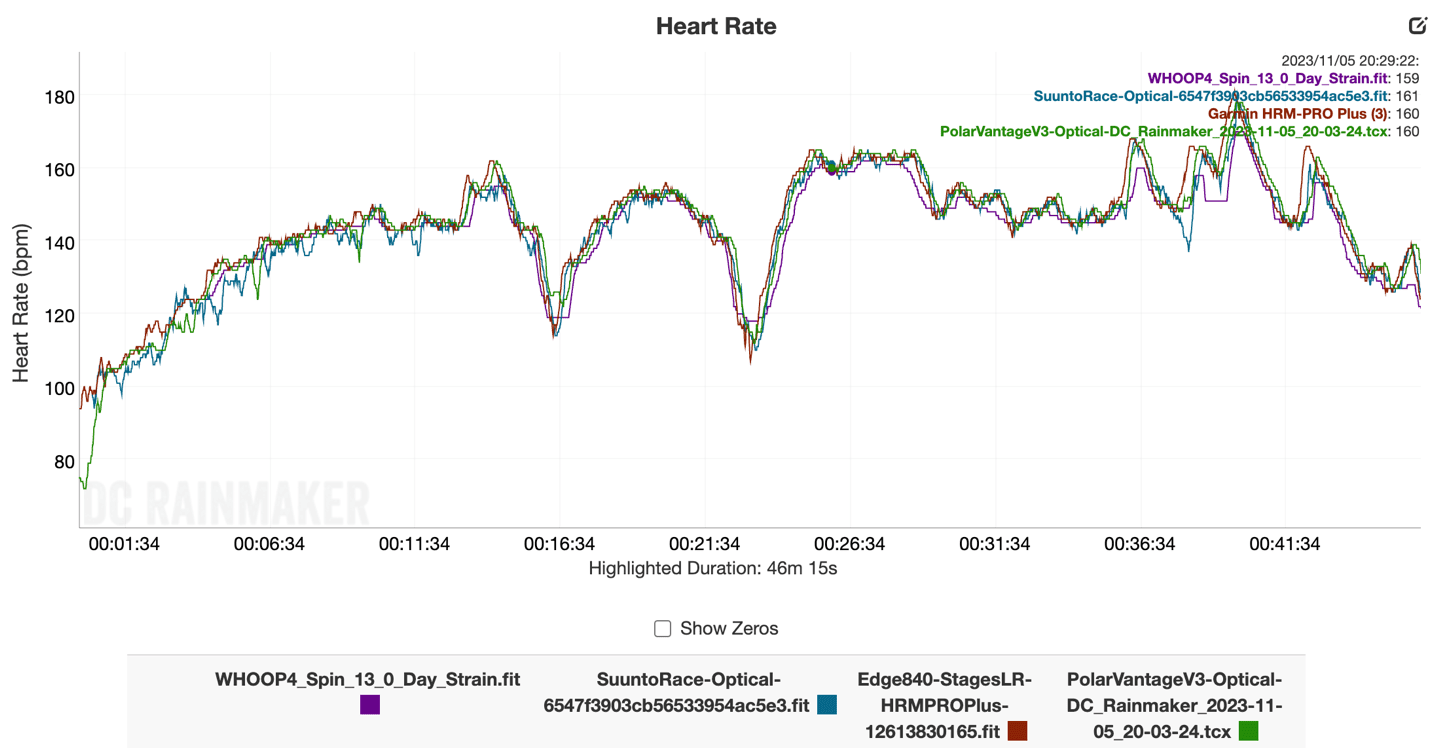
This one is weird. As I noted, this should have been a piece of cake, but both the Polar Vantage V3 and Suunto Race struggled here in the first 12 minutes or so with many little drops/inconsistencies. These were variations of about 10-12bpm, which is pretty high to be off. Both units were horrendous here. You can see these errors here:
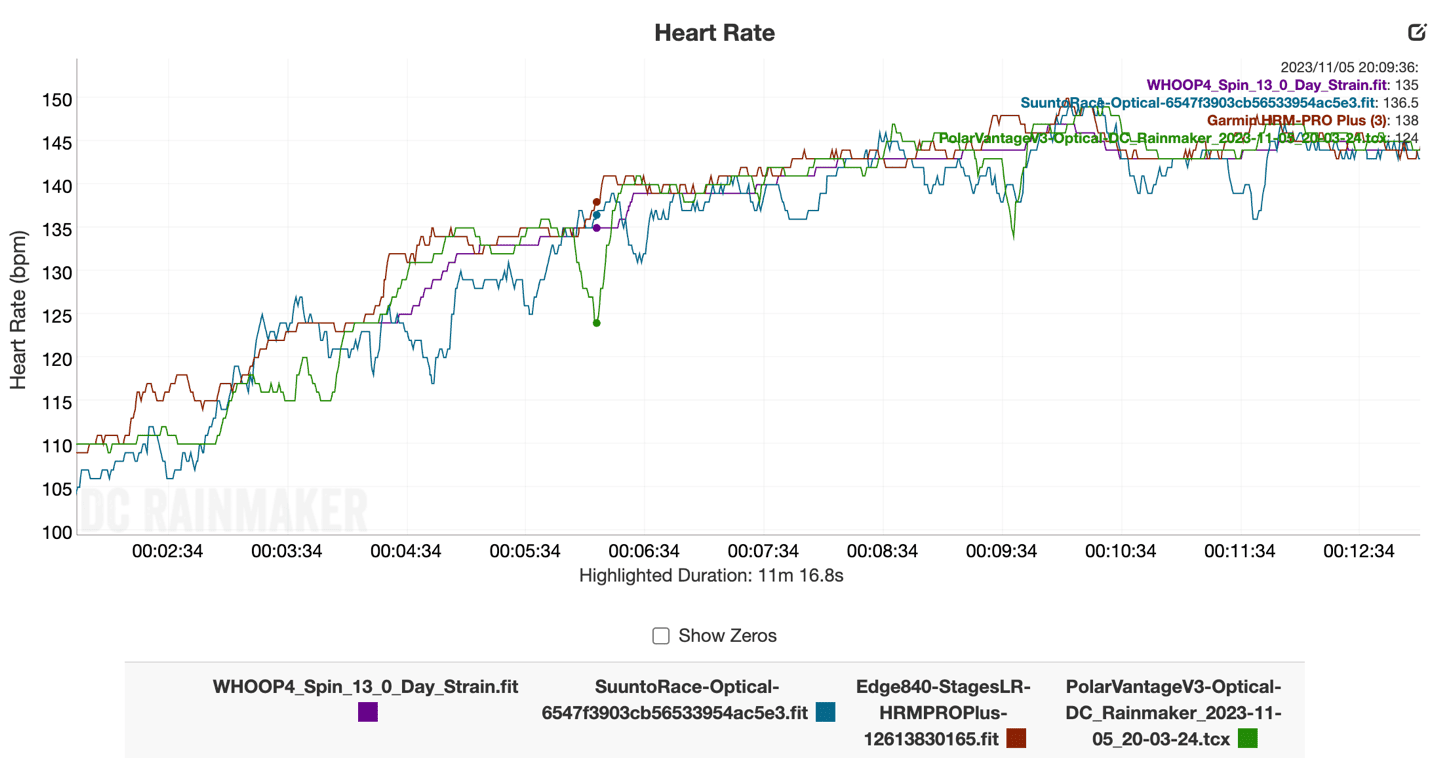
It’s a pattern I’d see on other workouts over the last little while as well. Take for example this next trainer workout (don’t worry, we’ll get to other sports, but this is theoretically the easiest sport type, and it’s struggling here). Here you can see that for the main (painful) intervals, it’s largely good minus a single blip. Overall, fine. But, for the initial warm-up, it struggles a bit, albeit in this case, only for about 6-8 minutes. Here’s that data set.
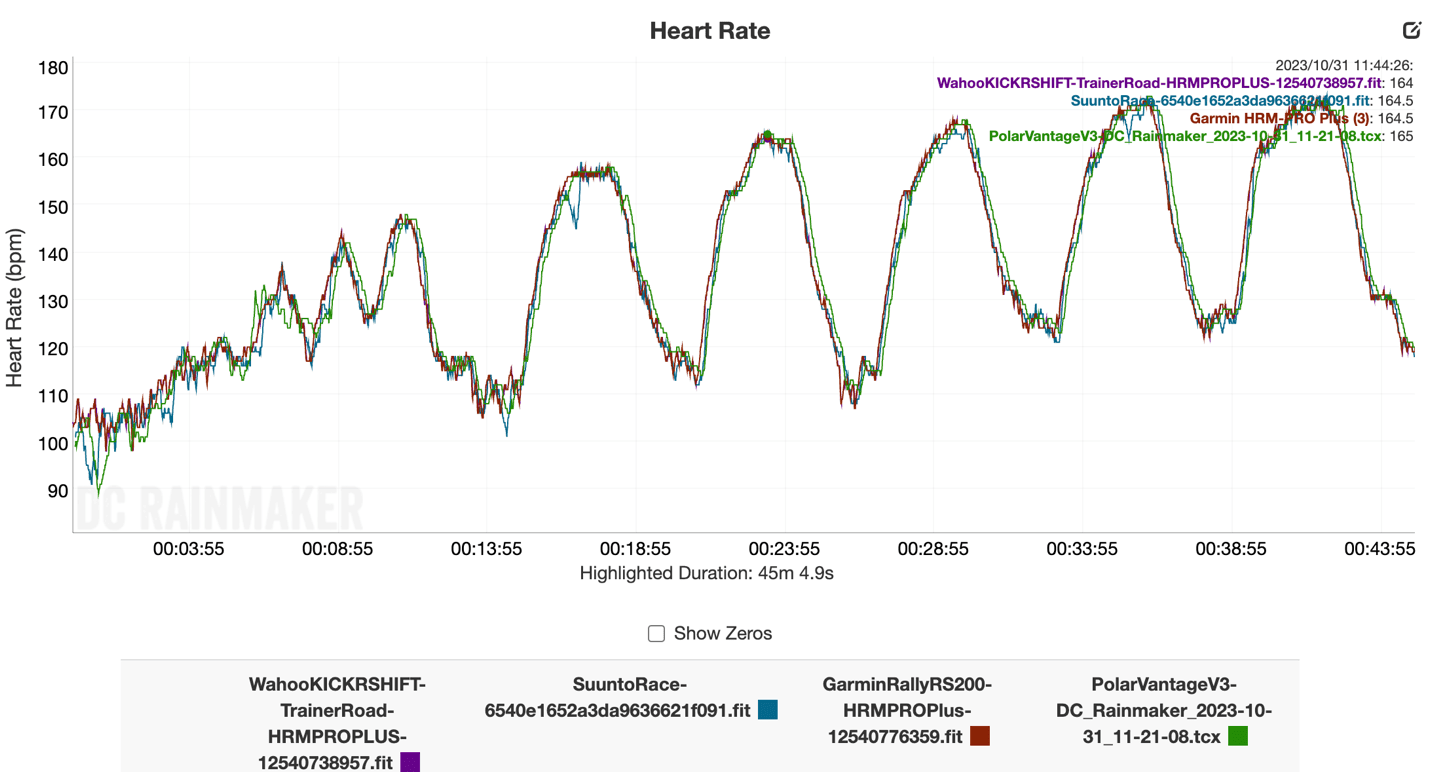
Ok, so let’s look at a run. Here’s one from this past Saturday, where I was relatively easy-pace as the base of the run, and then every 2KM I’d do a 2-minute long tempo section. Not a hard sprint/interval, just I’d increase the pace to about 10KM-race pace. Here’s that data set:
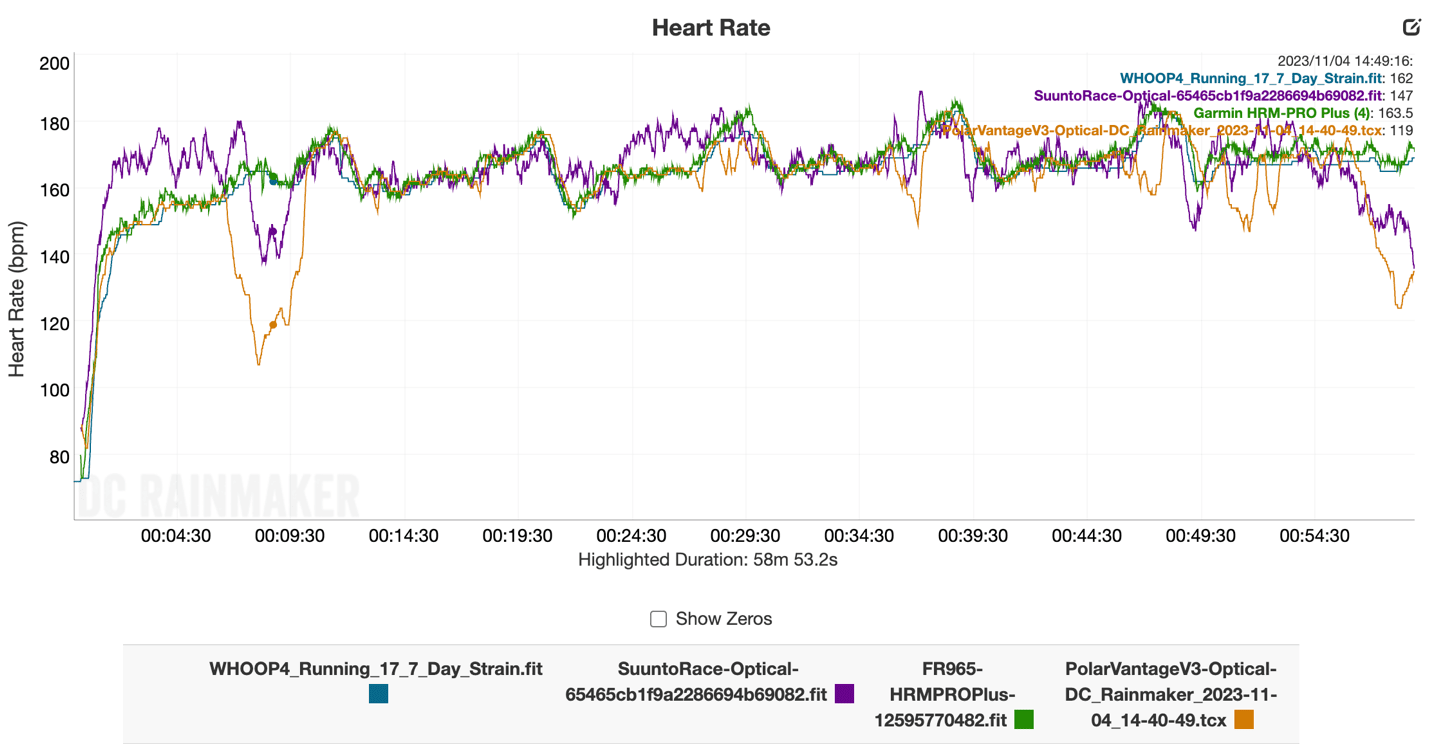
As you can see, results from either the Vantage V3 or Suunto Race were not good. There’s no two ways about it, and frankly, this result puzzles me the most. This was a very straightforward stable run in the rain. The rough pattern here appears to be the start of each tempo section when it would lose the plot, which almost indicates cadence-lock issues (when an optical HR sensor locks to the pounding of your feet). But in this case, it doesn’t match cadence, but just loses it entirely (usually cadence-lock would go high like the start failure you see above, not low).
Next, let’s look at an outdoor ride. This is also one of the better optical HR performances by the Suunto Race, likely because it’s low-speed (once I start the climb), and relatively sustained/stable, making it easy:
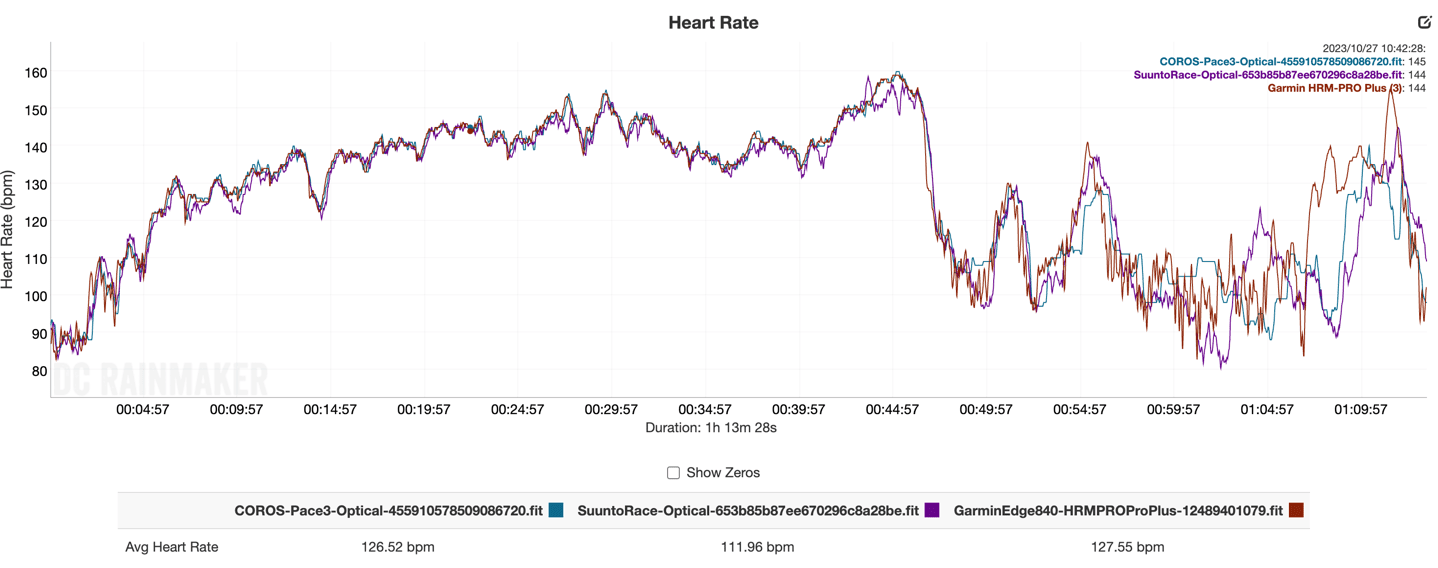
The second half gets a bit wonky, because I’m now descending at high-speed on roads with vibrations (but with low effort, hence the lower HR values). This is where you can see chest straps struggle a bit too in cooler temps like this was, still a bit earlier in the day.
Ultimately though, looking at all the data from the past month (I have more data sets, which basically just mirror this over and over again), the Suunto Race optical heart rate sensor simply isn’t all that great – just like the Suunto Vertical before it. Suunto licenses this sensor from LifeQ, and it’s unclear to me if the issue is the specific sensor that Suunto has selected, the power levels that Suunto gives it, or simply the algorithms that LifeQ has in conjunction with that sensor hardware. Either way, it wasn’t good on the Suunto Vertical, and it isn’t good here on the Suunto Race (nor was it good on other recent Suunto watches either). Suunto really needs to look at alternatives for whatever watches come next.
Wrap-Up:
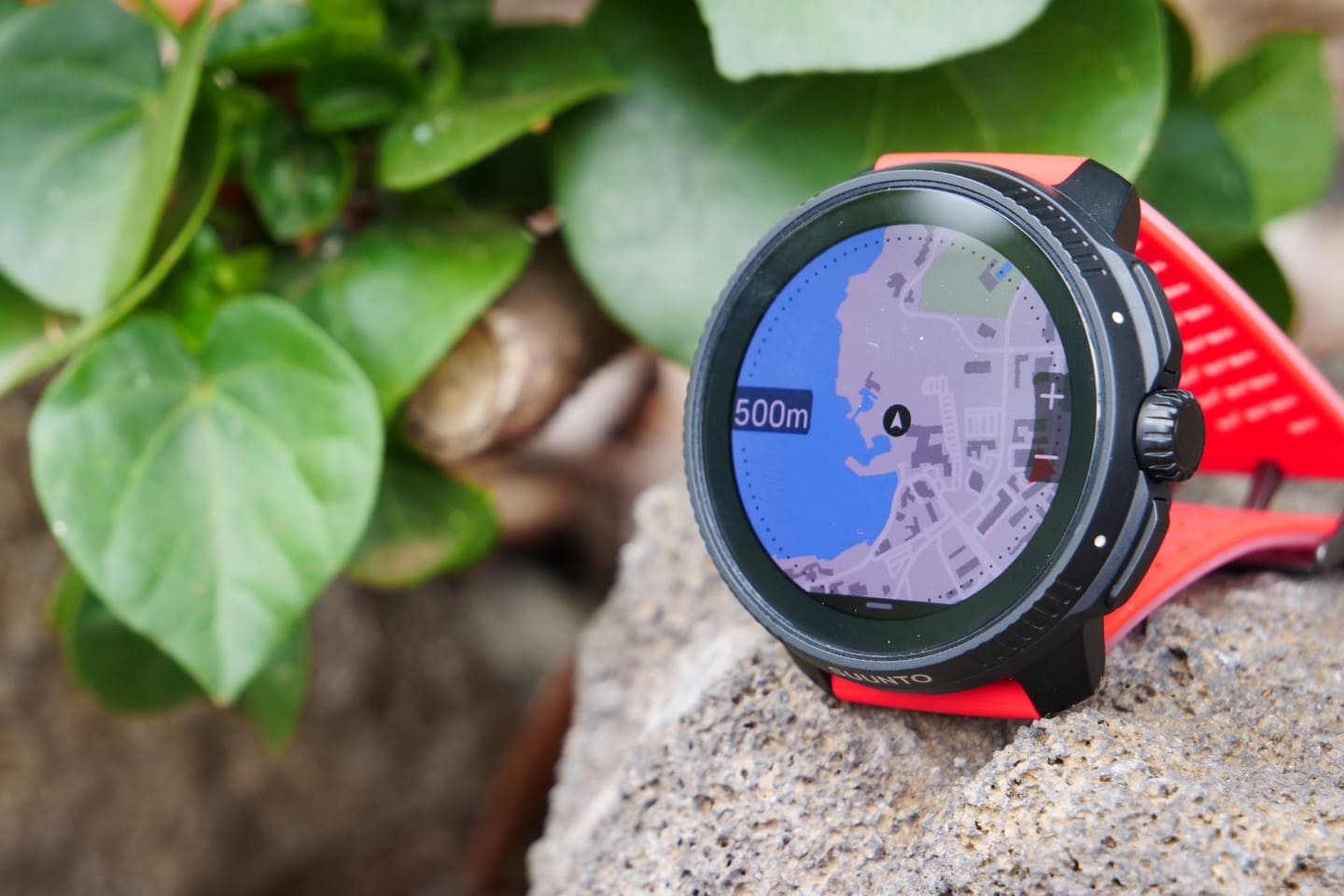
Ultimately, this appears to be Suunto’s best watch ever. I’d struggle to think of a watch that’s better executed from them in terms of all-around features, execution of the hardware, and the thick layer of new software features. The AMOLED display is brilliant, the battery life is incredibly strong in my testing, and the GPS accuracy on land is very good.
Now, as always, there are areas for improvement. The most glaring being that optical heart rate sensor, that simply isn’t competitive (and often not accurate). Beyond that there’s everything to do with sensor pairing, especially in the cycling realm. That entire portion of the watch is long overdue for an overhaul. And then beyond that, there’s some minor polish things that would benefit from being tidied up. I’m looking forward to the planned firmware update Monday that’s supposed to make headway on the UI slowness/lag issues, as well as expanding out the 500m map radius to 2KM. I’d still like to see it greater than that, but that’s a start.
Overall, more than anything else – Suunto got the pricing right here. A literal case of ‘The Price is Right’. Suunto has realized they can’t compete with Garmin on features, nobody can. Instead, they need to compete (aggressively) on pricing, and ensuring they match on accuracy and usability. The $449USD price point overwhelmingly does that, and will likely force more than one of their competitors to adjust both current and planned products. Of course, that only happens if consumers take note of what Suunto is doing, and start to reward them for it.
With that – thanks for reading!
Found This Post Useful? Support The Site!
Hopefully you found this review/post useful. At the end of the day, I’m an athlete just like you looking for the most detail possible on a new purchase – so my review is written from the standpoint of how I used the device. The reviews generally take a lot of hours to put together, so it’s a fair bit of work (and labor of love). As you probably noticed by looking below, I also take time to answer all the questions posted in the comments – and there’s quite a bit of detail in there as well.
If you're shopping for the Suunto Race Stainless Steel (16GB) or any other accessory items, please consider using the affiliate links below! As an Amazon Associate I earn from qualifying purchases. It doesn’t cost you anything extra, but your purchases help support this website a lot.
Here's a few other variants or sibling products that are worth considering:
And finally, here’s a handy list of accessories that work well with the Suunto watches. Given the unit pairs with standard Bluetooth Smart sensors, you can use just about anything though. I'd recommend the Garmin bike sensors over the Wahoo ones, merely because the Garmin have two concurrent Bluetooth channels versus one for the Wahoo RPM/SPEED sensors.
And of course – you can always sign-up to be a DCR Supporter! That gets you an ad-free DCR, access to the DCR Shed Talkin' video series packed with behind the scenes tidbits...and it also makes you awesome. And being awesome is what it’s all about!
Thanks for reading! And as always, feel free to post comments or questions in the comments section below, I’ll be happy to try and answer them as quickly as possible. And lastly, if you felt this review was useful – I always appreciate feedback in the comments below. Thanks!




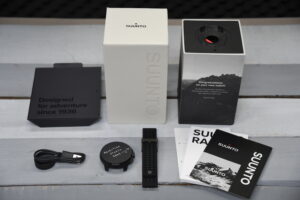
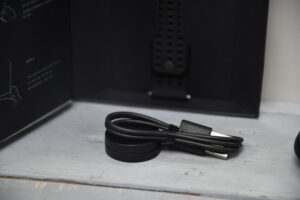

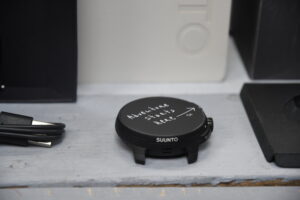
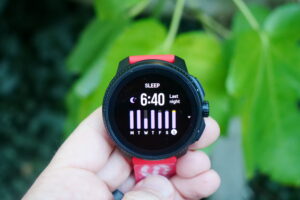

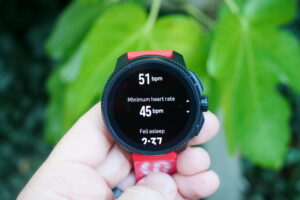
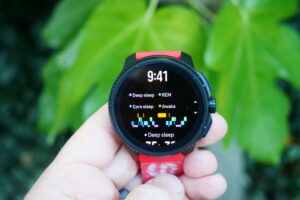

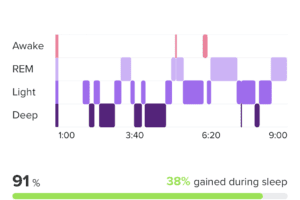
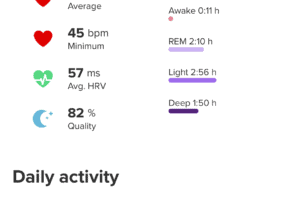
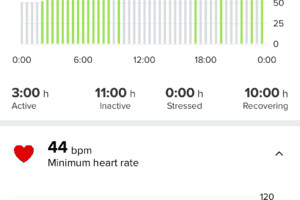
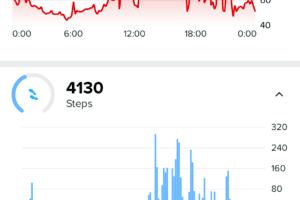

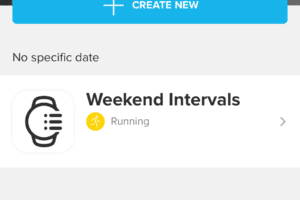
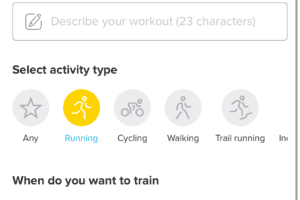


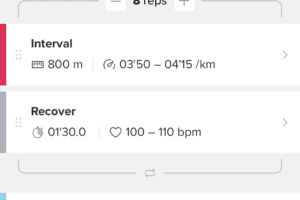
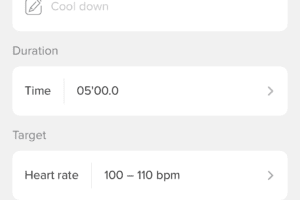
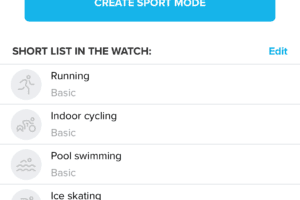
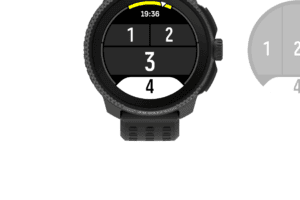
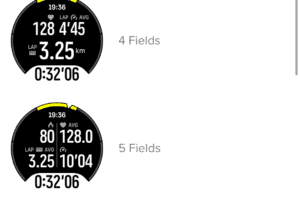
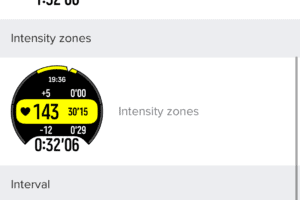
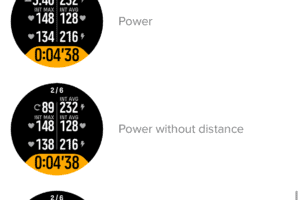
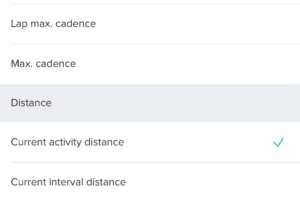
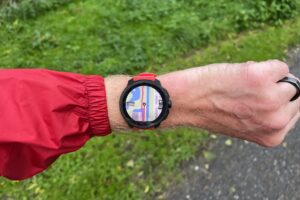
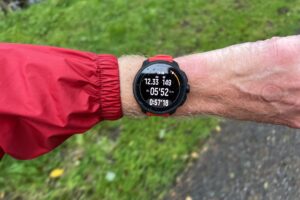
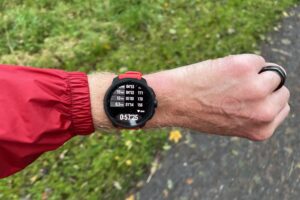
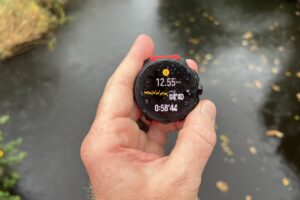

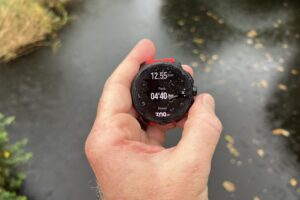

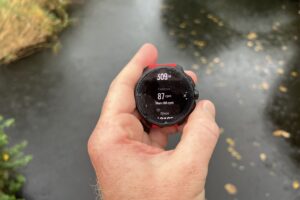
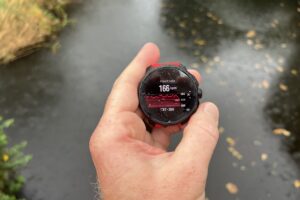
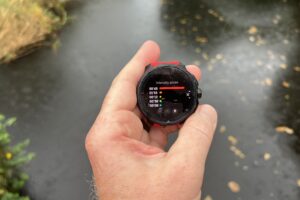
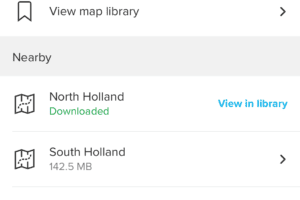
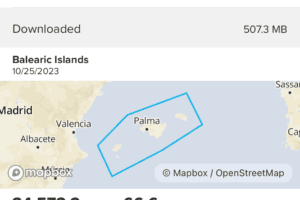
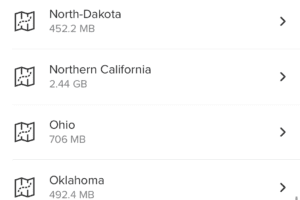
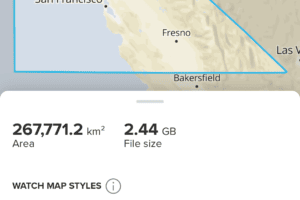


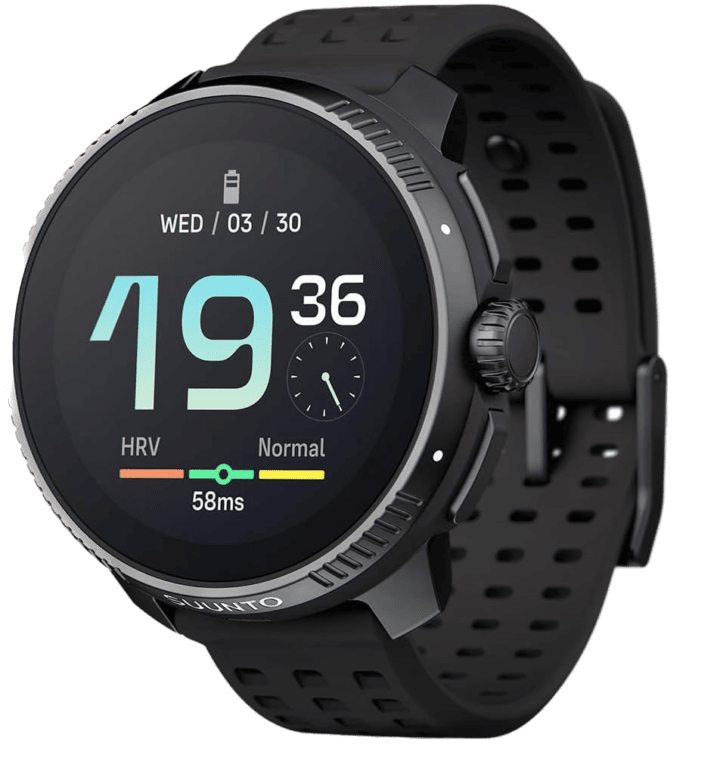
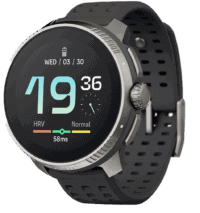


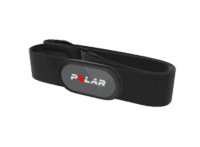
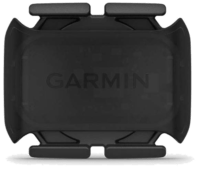
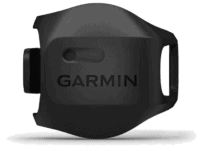
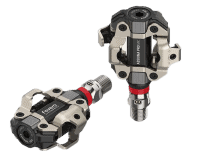
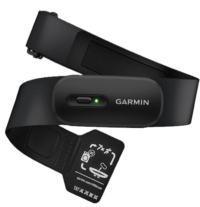

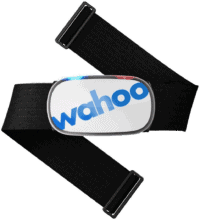





















I still love MIP.
RIP MIP.
Data Geek 😊 , I watch-read all your reviews + many other review-test sources. I would really like to see a VO2max estimation comparison across the 3 or 4 main manufacturers. I know this would not be easy to make within reliable testing process… Did you already see some differences along all your previous testing ? or the watches usually aligns to what you know to be your “current” Vo2max
Yeah, it’s on my winter to-do list, once I get past some of the last to-do products in backlog, to look at some of the VO2Max pieces.
Really confused why you keep referring to your watch as the titanium edition. It’s clearly stainless steel.
Just wanted to clarify that I appreciate that Ray is so focused on the performance aspect of the watch that he overlooked the exact model he has. But, for those of us interested in the wearability and design of the device, it should be noted the all black model is the stainless steel variant. Maybe Ray would like the Race even more if he had the one that was 15g lighter!
Thanks, good catch – fixed!
Thanks Ray! Quick question before I buy this: is it possible to power the watch off?
Yes, it is.
I find it astonishing that we nowadays call a price of 449$ “merely”.
Just my 2 cents…
I came hear to write the very same comment. “merely $449” LOL
Everything is relative, but in this case, it really is ‘merely’.
I get that, and it’s correct… it’s just the general pricing of such devices. Comparing how much I spend on my Fenix 5 comparing to the current pricing of i.e. the fenix 7 pro.
Yes, I get that those watches have way more features now and the more logical comparison to my fenix 5 might be the FR 265 (which I currently consider as a replacement since my fenix just died).
The Race lost me right at the beginning. No matter how good the GPS (and GPS battery life) is – if the interface is as slow as you described, I won’t buy it. That’s way to annoying in daily life (especially the rise to wake lag).
Adding to that the inproper implementation of sensor support, the bad oHR… no, thank you!
Some or even all of that stuff might be fixed in the future, but honestly, I won’t by a watch hoping that stuff get fixed. That’s even more annoying then, waiting for the Suunto to release firmware updates…
Ray,
I’m going to jump on the bandwagon here also. When you say merely, but we have the Coros Pace 3 out there in the wild that is superior in all other respects including on board music other than sapphire crystal and better mapping for $200 less, I’m certainly confused on pricing. From runners and others I speak to in my circle the Coros Pace 2 and 3 are far more popular now than any Suunto and for good reason. I think the sapphire glass is worth $50 at best and the rest is a wash. This is a $300 watch. When Woot is selling a Garmin factory refurbished 6X Pro sapphire for $295, this thing is dead in the water. Suunto and Polar can’t keep up with Coros at prices far below theirs. From the looks of Amazfit, they have better stuff. I just don’t understand Suunto and Polar these days.
The COROS Pace 2/3 are very popular, but I’m going to guess they don’t hold a candle to Suunto’s sales.
As I’ve said many times, the Pace 3 is an incredible deal. But, it’s also not of the same level as the Suunto Race. Not in navigation, not in health metrics, not in integrations with other companies/apps, nor app platform, not in display quality, and not in GPS accuracy. HR is TBD. There are things COROS does better (such as sensors).
And again, there’s nothing wrong with having lesser features, again, it costs half as much.
(One could also point out that COROS is a company based on a country that has incredibly low employee costs. Suunto is based in a country with incredibly high employee costs. I generally don’t focus on that aspect in review, but this particular conversation is asking why these two are so different in price – well, that’s why.
Now, I do agree that Suunto’s real issue is previous-gen Garmin units on sale. The Garmin Epix (non-Pro) has been $449-$499 on Amazon all almost week. The Suunto Race simply can’t compete with that watch at that price. Like, hard-no compete – unless you really need the difference in GPS battery life.
But then again, by that same metric, COROS is hosed to with your example of the 6X Pro Sapphire at $295, why buy a Vertix? Or even an APEX 2 Pro? So I’m not sure how that’s different than Suunto.
As for Amazfit, as I showed this past summer – not really. It’s a skin-deep only problem. The second you start digging into anything, you realize most of it doesn’t hold-up well software-features-wise, and the company virtually never updates/fixes anything.
But yes, I’ll stand by ‘merely’ in this context, because it’s simply true. Relative to their competitors, it’s “merely”. Everything is relative.
Wow! I really didn’t expect that much response and you are spot on, as always. I feel bad for you having to take the time to write that. I assume your are correct on Suunto’s sales. But, in my part of the world, however, I see (just guessing not actual polling) among athletes, though few truly competitive, 60-70% garmin, 20-30% Apple, and then Coros. I literally never see a Polar or Suunto. Further, I follow numerous competitive athletes on Strava and guess what? I see more competitive athletes literally using the Strava iphone app on occasion than I do any of them using a Suunto or Polar. None that I follow ever use Suunto or Polar. I understand that numerous ones are sponsored by what they wear and use. Just curious who they appeal to at any price.
it all depends. i never see anyone with a coros, don’t know of anyone who owns one and also personally don’t care much for it since it looks like a cheap knockoff. any time in the mountains and it’s a suunto for me since i’ve had bad experiences with garmins. suunto watches are not perfect but they are extremely reliable in my experience which is why i do not mind paying for it.
Thank you for great review.
I went from Suunto to Garmin years ago (Ambit 2 to Fenix3) but I might go back to Suunto because this watch. For me the optical heart rate sensor has never worked reliable enough, so I’ll be using chest strap anyways.
Overall, it’s nice to see more competition. As you said no-one can’t compete with Garmin on features but it’s good that others are improving also.
Thanks for the great review as always. Did you find out how to calibrate the compass? I had no success :O/
Many thanks for the detailed review.
As a long time Suunto user, I was waiting for this before purchasing the replacement of my 9 Baro.
BTW: I have found three small lapsus:
– albeit, still USB-C
– the Suunto Race comes in at 84g for the Titanium edition seen in this review
– It’s also on all Polar devices except the Suunto Race
Thanks!
Hey, thanks for the review! Great as always.
But I might be missing something. I have bought the Suunto Race and don’t seem to be able to have the alerts (for pace, HR and power) when I follow a structured workout on the watch via a Suunto+ guide.
I am never notified when I get out of the zones, which is most important when you follow a power based workout. Do you have any recommendation on how to get those alerts?
I have talked to people on the Suunto community forum and they told me that you don’t get any alerts when following a structured workout and the only way to get alerts is to select a specific zone before doing a run session for example. But even then I don’t seem to get alerts? Anything to do with the airplane mode being on?
Thanks!
I have the same with my suunto 5 peak. I get the interval change alerts but not out-of-target-range alerts when using SuuntoPlus guide based structured workouts. If I use the on-watch target zone settings I get the above and below alerts but, obviously, that’s not flexible enough for multi-step workouts. I don’t know if the structured workouts support target range alerts via the audio feedback (the 5 peak doesn’t support audio feedback).
Thanks for the reply!
I hope that Suunto will change this with the firmware update that is supposed to be available today because otherwise it is kind of useless to follow a power-based structured workout as power changes quite quickly^^
A small error in the text:
“Breadcrumb trail only: This is when you don’t have a background map, but just follow a little trail on a blank screen – this is what the Suunto devices had previously (exempting Suunto 7). It’s also on all Polar devices except the Suunto Race.”
I suspect Suunto Race should be swapped for “Polar Vantage V3” in the above passage.
Thanks for the review!
Thanks!
which watch would you recommend between forerunner 255 and suunto race for openwater and pol swimming in terms of gps (openwater) and heart rate accuracy .
thanks in advance for your reply
Ray, Garmin 965 or Suunto Race Titanium. Which would you prefer as your daily driver?
Am I the only one who doesn’t want AMOLED everything? I have enough screens screaming for my attention, being bright enough to mess up my sleep, ect. Devices with an AMOLED screens have worse battery life, worse functionality (needing to do the wrist-flick to activate the screen, being more difficult to use at night due to their brightness, ect) and the only real upside seems to be that they “look better” due to their additional colors/brightness/effects.
I’m not a grumpy old man (yet) but I do care about what all these screens are doing to our eyes and brains. It also seems that everyone else is chasing the next bright, shiny object rather than actually considering whether a certain device actually needs to have an AMOLED screen. My main concern is that before long, there won’t be any MIP sport watches left on the market because every company under the sun will be off chasing the Apple Watch crowd and those of us who want things like longer battery life, or even just one less bright and fast-moving screen trying to grab our attention, will be completely ignored.
I also used to prefer MIP, AMOLED: no thanks.
But over time, I found AMOLED much more visually appealing, especially because of the higher resolution.
And at night:
My FR 265 has a night mode where the display is very dimmed. So no problem either.
The battery life of AMOLED watches is 1 week or longer, so that’s no longer a disadvantage.
My suggestion: Try out an AMOLED watch for 1-2 months and then go back to a MIP watch and then decide.
For me, the difference is like a tube TV to a current LG OLED TV :P
So for me, there’s definitely no going back.
Your only reasoning here has to do with “visual appeal”, and you go so far as to compare your watch to an OLED TV. That’s EXACTLY what I (and many endurance athletes) don’t want: another bright, flashy, ” visually appealing” device that encourages me to spend more time staring at a screen than out in the real world doing real stuff.
No thanks.
With the Amoled display, you get better resolution and therefore better readability! And yes, you also get more beautiful watch faces.
Furthermore, it was not a comparison between the clock and an OLED TV, but between the respective jumps:
CRT TV -> OLED TV
Watch with MIP -> Watch with Amoled
And I certainly don’t spend any more time with an Amoled watch than with a MIP watch.
The fact is:
The majority of people standing in front of a rack with MIP watches and Amoled watches opt for an Amoled.
MIP is dead and can be buried in the technology cemetery next to the CRT television.
The manufacturers should have researched better MIP displays
Instead of embellishing the pictures of the MIP watches on their homepages in Photoshop. That was as manipulated as the Kardashians and their Instagram pictures.
Amoled is nice but better don’t fix an amoled watch on your bike bar.
After a few seconds you will see nothing on the so called “always on”.
I fix it on the bar because as a Mountainbiker I don’t like to loose the contract to my bar and want to read my heartrate.
In general, I would caution that for a properly executed AMOLED display, you shouldn’t feel like it’s some bright thing impacting sleep. All of the brands these days do a fair bit to bring the brightness level down below MIP-backlit levels during sleep (yet unlike MIP, you can actually read the time).
Garmin has the most ‘polish’ and control in this realm, followed closely by Apple (Apple goes lower brightness-wise, but Garmin gives you more control over precisely what happens/when.
If you compare that to AMOLED display options of even 18 months ago, it’s been a pretty big shift.
As far as Suunto goes, they cover the basics of not blinding you at night, but I’d argue they lack of the finesse of some of the options, and in particular around how it escalates up/down from nightmode.
Some of us simply don’t want light emitting from our wrists all the time. For the 95% of the time I’m not using it for sport, I want my watch to function like a regular watch, not a flashlight.
Ray and others often point out that readability is better at night, but MIP displays have backlights. When I need to know the time, I can activate the backlight. The rest of the time, I want the display to be dark. For instance, driving at night with an AMOLED watch is annoying. If the “wake to raise” function is on, it’s lighting up every time you turn the wheel. If it’s using “always on,” it’s simply distracting.
The readability argument also fails when you’re using the watch for fast paced activities. When I’m running, I’m only glancing at the watch for information, often at off angles. I find it difficult to distinguish the resolution difference between the two displays in such a scenario. Slower activities like hiking? Sure, the AMOLED will look better. But I still don’t want light emitting from my wrist.
I completely agree that MIP technology should be further developed. I’m not sure why the resolution has been stuck at what it is for its entire existence. I’m sure the answer has something to do with money. The fact is that AMOLEDs are probably cheaper to produce these days than MIP. Garmin has marketed AMOLED as a premium feature, but Suunto probably has it correct by making the Race cheaper than the Vertical. Of course, manufacturing it in China also helps.
I think manufacturers damaged the reputation of AMOLED screens by forcing them onto the market when they were not really ready. Watches that barely lastet a day, were too dark in the sun, too bright at night and had burn in proplems. Wake up gestures that sometimes worked, sometimes not.
But hey, it looked flashy and new.
Its like the introduction of optical heart rate sensors. In 2023, they work quite well (some better than others, obviously……). But when they were pushed onto the market , they were quite wonky and caused lots of frustration. For some people it worked very poorly. But still, every company had to have that “no strap” sticker on the box. Some didn’t even offer the option to use an external sensor.
Maybe the tech has improved. But once the dammage has been done, bad reputation is very hard to repair.
I really don’t understand this comment. If you want MIP for better battery life, then sure. But why would AMOLED encourage you to spend more time looking at the screen? It’s still a tiny watch screen with very limited things you can actually do with it outside of being a sport watch. I don’t see how the race would encourage you to sit at home and state at it more than the vertical would.
That cable looks like it’s USB-A which you are no doubt aware of, hence the albeit, but still.
But we all appreciate you finishing the review quickly as extensive as ever, great job
See…I was hoping that by just typing USB-C I’d will it to change.
Thanks!
“albeit, still USB-C” looks, from the picture, like it should be USB-A.
Indeed, was trying to word the sentence about the lack of USB-C, and alas, changed my wording halfway through and didn’t fix the other half.
I’m surprised by your results with HR in both Race and Vertical. I’ve generally had very good results with both. I suppose the sensor can be more nitpicky and vary depending on the user’s wrist…
Here are some quick examples
link to analyze.dcrainmaker.com
link to analyze.dcrainmaker.com
link to analyze.dcrainmaker.com
On the other hand, sleep has been mostly horrendous for me, so I guess you can’t win them all…
Suunto RACE oHR accuracy does need improving and I agree with Ray on the Bluetooth sensor pairings. It’s now 2023, as most of us have noticed, and Bluetooth-only support for external sensors is at least arguable from the manufacturer’s perspective. However, in Suunto’s case, it’s a PITA for me to have to unpair a bike PM and then pair a different one – ie it would be great to be able to pair more than one PM (note: Stryd pairs as a FOOTPOD). The situation is compounded when you’re not sure which sensor is paired…you can’t be sure because it doesn’t tell you!
Yes, it is a great watch tho. Even the looks are superior IMHO
We know it and it is a priority for us, we have work ahead of us and we will surely make many users happy in the future💪🏻
I really like the design of this watch. What is killing me is the color scheme of the Ti version. I know it is not plastic but it just looks like plastic to my eye. Screen is beautiful and they have certainly produced an extremely competitive watch in today’s market. Hopefully we see some more color options. I have the vertical, race, and Garmin Epix Pro 2 51mm and I keep reaching for the Epix. Side note: Really appreciate all that you and Ray do with the excellent reviews you put out. THANK YOU.
I am also quite satisfied with HR in Suunto Vertical during different activities (running, cycling mostly). usually max 1-2 bpm from chest strap and I can say it is similar quality as FR 955 ( on my wrist)
Huge minus imo is that Suunto doesn’t have any training programs.
Not directly, though, if you’ve got TrainingPeaks/etc, it flows naturally to the watch.
I took part in a survey from Suunto in the last month that was heavily focused on training programs. Assumption is that is something they are looking to bring
Just want to make clear that it is possible to answer SMS messages with pre-defined messages on the watch, but only on Android.
Good to know on Android, thanks!!!
The Suunto Race is a beautiful watch! I really like the design, also in terms of the software. (Only those 2 white dots on the right of the case above the buttons should have been left out).
The wristbands look really cool too, I think I’ll buy one of those for my Garmin FR265 :)
Unfortunately it’s too big for my small wrist (approx. 170mm),
my max. are the dimensions of the FR 265.
What I would also miss: contactless payment and ECG.
Why I’m looking more at ECG:
My Apple Watch has warned me several times over the last few months that my heart rate has landed below 40 at night, so I’m now looking more at heart functions. I know that this can be normal for good athletes, but I’m not someone who has been regularly active in sports in recent years :P I wonder if it’s because I snore:D But I’m also not overweight (85 kg, 1.84 m), my work is physically demanding, so it’s not an office job.
My blood pressure is somehow below 120 every time I measure it (with Omron X7 Smart) in the morning/evening, sometimes below 110. I don’t know if it’s always been like that. I think I need to go to the doctor and have everything checked.
A question for you:
How is your heart rate at night when you sleep?
Hi,
Just FYI, I have also small wrist, only about 160mm, I have F7Pro 42mm, the X is huge on my wrist and FR955, 255, 965 fits me great. But few weeks ago, I tried Suunto 7 on my wrist. Suunto 7 is larger then Vertical and the Race is smaller than Vertical. The Suunto 7 fits absolutely perfectly and much more better than F7 42mm on my small wrist and also looks better than F7 42mm on my hand. I was surprised with that and since that, I won´t be afraid even of Suunto Vertical on my small wrist…
Have Suunto commented anything on oHR perfromance and plans in this respect? Most likely no, but wanted to ask anyway.
This is what I was wondering as well. I have a Race, and the OHR has problems— it seems like it struggles with lower HR zone workouts in particular. It has been inconsistent. The display is impressive, though, and it is the first AMOLED that I can see equally, as well as my 7x pro, in direct sunlight. I also have the raise to wake lag.
Ray, does the poor optical heart rate sensor affect non workout metrics and skew the data? Is the sleep data, recovery, hrv skewed due to poor hr information from the OHR? That is my main worry. I am between this and the Garmin 965. I have a 20% off coupon from REI so I can get the 965 and the titanium race for almost the same price. I will use an external HR strap for workouts.
In all likelihood, the OHR will be fine for non-workout metrics. It’s all about the watch jiggling on your wrist, and my guess is, it’s not so much the sensor itself, but that the Suunto weighs 84g and the Forerunner 965 weighs 53g. You’ll notice that Ray’s bike ride HR data (when not jiggling fast downhill) is fine.
for the same price- the 965 is just a more refined product. But if you like the style of the Suunto; Suunto’s platform; and the truly outstanding GPS battery life (40+ hours!), it has some great features for a great price.
Also- Ray must have a great wrist. For my scrawny, bony wrist- the 965 is hit or miss on HR accuracy during a run or a bumpy cycle. And forget it for intervals.
Beware REI 20% off coupon usually never works on any GPS based device. Sorry!
That is correct and spelled out in the fine print. Now they do have a $200 off ALL Fenix and Epix starting tomorrow. You can also find those watches now on Amazon US for a $200 discount.
Not impacting it that I’ve seen. For example, when I compared HRV values for the night to Garmin, Polar, Whoop, and Oura over the last month – they were all within 1-2ms of each other. Which is natural for the slight differences in how they categorize the awake time within sleep (which isn’t usually included in the HRV averages).
But beyond that, I don’t know of any areas that Suunto is using the HR data outside of workouts (aside from the ‘Resources’ thing, which is basically Body Battery by a different name.).
Finally Suunto seems to be back! Just cut a few mm on the next release (maybe Suunto Peak solar/amoled, cut the “9” to match the other watches) and I would love to make my returnnto the platform
But I agree with Ray: many of the pps should either be native to the UI or they should increase the limit to those Apps.
The question is, is this a real road block in the software, or just Suunto “policy”. If it’s the latter, it’s a real bummer because the last app released held some interesting options I could use at the same time and more than two
Ray, maybe you can mention somewhere that this watch is made in China and not in Finland? For some, it might be an important fact to know prior to purchase a Race.
thx thats actually very important to me and was looking for that information.
WIth the way China wages a silent economical war against Europe I avoid chinese products whenever its possible. I guess people will only wake up to whats happening when its too late. Definite a no for me buying it.
I was wrong. The REI sale which starts tomorrow 11/10 has many if not most exercise watches on sale. Not necessarily 20% off but at least “”$40 to $100 off” as per my local store. Deals to be had for sure.
This looks really nice. I’d sort of written Suunto off after my Spartan Ultra experience (although it still had the best open water tracks I’ve ever seen in my own activities) and the smaller form factor wasn’t my cup of tea. This, and Polar seemingly getting back in the game, however, changes things. It’s good to see more options for a longer, more durable endurance device that aren’t a Fenix.
Thanks for the great review! I completely agree with you on the issue of pairing multiple sensors. I can’t believe they haven’t fixed that problem after all these years!
Hello and thanks for the great review.
Is there actually an AMOLED watch on the market that has a true “always-on” feature (no screen dimming)? at least during a workout?
I know it will be at the cost of the battery life but i would like to select that option as i experienced that it can take a very short moment and several wrists movement to have the screen totally lit again. This could be an issue in a “navigation mode”
Regards, Pascal
Yup, the Polar Vantage V3 will actually do that – and works on handlebars. It was a specific design Polar implemented, albeit, the downside is at the moment you can’t turn it off – so it burns the heck out of battery in if you don’t want it.
Thank you for your great work!
Are the ‘old’ watch faces still available or is the shown one the only option (at the moment)? Hope there is a more outdoor-focused one too… (alti/baro, sun time, moon phase).
So if one was considering leaving the Garmin ecosystem, is this the front runner you would recommend (compared to the 9xx series)?
Or maybe that requires its own writeup – “Comparing watches that aren’t Garmin”?
Thanks Ray for the excellent and complete review.
Something I do not get is why Suunto uses the upper Zone 4 for the calculation of TSS. My coach is not defining my Zone 5 as starting with FTP and therefore I do not get accurate TSS, TSB, CTL values. Thus, I only rely on TrainingPeaks ?
Lag: You can clearly see that the small blue hand takes one second to move!
Thanks Ray!
On the lagging issue, is it correct that Suunto have traded off performance for battery life? So the lagging is due to the processing ability of the chip/watch as opposed to a software issue? Therefor, could this be fixed with a software update or is it a case of this watch will forever just be laggy?
IMHO, the key to endurance workout tracking is accurate recording of distance and heart rate. Other features in sports watches are really useful, but they’re secondary to those two for the vast majority of people. Even those who use navigation features will more often use the watch for run tracking and the like. Same with look and materials – those come after functionality for these watches.
Because this watch doesn’t record HR as well as some of its competitors, and given that HR monitoring is vital to most people, the price isn’t $450, but rather $450 plus the cost and hassle of a standalone HRM that can get this watch up to the accuracy of what its competitors can do with OHR. “Hassle” is subjective, but maybe $525-575 is the price to get this watch to meet the baseline of properly recording distance and heart rate?
TL;DR, the OHR problem seems really critical to understanding the value proposition here.
Depending on what you do no watch has accurate OHR. They are all too slow for trail running where your HR changes constantly. So you should always get an biceps or chest HR strap anyway
With my small wrists I’ve never had decent hr from a watch. I generally use an arm based sensor for anything cardio. For anyone who regularly uses a separate hr sensor then the below par sensor on the Race is of no real concern :)
Which watch to get, Garmin 965 for $480 or Suunto Titanium for $549. Any thoughts on those who have used 965? I know not many have used Suunto Race yet.
$480 for the FR965 would be a pretty incredible deal.
I think it’d be hard to beat that deal, unless you’re focused specifically on the material looks – or, really want the longer GPS battery life over the other features.
Thank you Ray for pool swimming session. I had to sell my Fenix 7 because of issues in pool and going to give a try to Race)
Hmm, I generally have pretty equal luck on both Garmin and Suunto/Polar for pool swimming and accuracy. Thus, it’s hard to know if switching would change things. Sometimes it can be very stroke-technique specific. Though, usually it’s actually more specific to the turn (be it flip or open, I have a very sharp/strong turn, which helps lap counting).
In my case, for better or worse, it works out.
Hi Ray!
The latest firmware has GNSS accuracy fixes. It’s very likely they fixed the openwater swimming issue in the Race too (not only Race S). As both watches do probably have the same firmware in that side.
It would be (extremely) interesting to know if they finally solved the openwater in the big Race too. Thanks again
For me it comes down to sensor support, after that I was out, simple
Ray,
I love your content but can you please do something about the ads that continually pop up on the bottom half of the screen? I dismiss them and they come back.
it not only covers reading content but writing this message resulted in me having to refocus in the input box 9 times!
Wow, great as always. Feel like I need to return my just recently bought Vertical and buy the Race instead. What do you think? Best Patrick
Thank you so much for yet another solid and comprehensive review.
May I suggest a possible future comparative review of the structured workout capabilities and ecosystems around the major brands would be very useful as these are far less reported on :)
Firmware update is postponed to end of week due to two crucial bugs.
Good to know, thanks! I was refreshing the sync yesterday evening hoping for the update to come.
Where did you get the info?
Suunto is soooo bad in communicating to its community (see their forum for example) that I’m impressed that someone outside their team could be aware of this.
Thanks!
My Suunto Race completely died after just 9 days. I don’t mean the battery died, I mean the watch died. No resets or combination of button pushing or charging could get it to turn on again. Suunto has issued a full refund and 10% discount on a replacement. I ordered a replacement because the watch was pretty good when I had it. Worst lag was response to flipping my wrist up and having to wait too long for screen to turn on. I now have significant doubts about the long term performance/durability of the watch after mine randomly died so quickly. The Garmin Epix 2 Saphire is on sale for $670CAD only $70 more than Suunto Race ($600CAD).
It’s sucha smoking deal on the Epix 2 I am tempted to order it with the hopes that it would be more dependable, and a better watch overall, minus the battery life. What are your thoughts on this comparison with prices so close?
I had an Epix2 Pro die during set up. Bad devices in every batch for all manufacturers. I’d say for Suunto you’d hope that is a one off type of thing as you are trying for market share and certainly don’t want a perception of QC issues.
Thanks Ray!
Being roughly the same price what would you choose between the Suunto Race and Coros Apex 2 pro?
I would mostly choose the Suunto Race over the APEX 2 Pro at the same price. The Suunto is more accurate GPS-wise, has a better display, better mapping/navigation options (both on-device and on-app), and better physio-type stats. Plus of course way deeper 3rd party integration.
However, the APEX 2 Pro does have longer battery life, and I would argue better optical HR sensor accuracy during workouts. The APEX 2 Pro optical HR sensor isn’t great, but it’s not horrible either. But the Suunto GPS accuracy easily beats COROS.
Thanks for a great review! Have you planned to do a feature comparison chart between FR965, Race and Vantage V3? Similar what you did years ago with FR 945, Suunto 9 and Vantage V.
Yeah, on my to-do list. Realistically, feature comparisons are messy here for non-Garmin units (given, Garmin has a gazillion more features). So it ends-up being relatively lop-sided (which, of course, is the simple reality of it). Instead, the main winning ‘feature’ of the Suunto Race is obviously the price, look (depending on view), and battery. One can debate the app too.
But yeah, on my to-do list.
If the Heart rate sensor is that inaccurate, doesn’t that mean all the health metrics including HRV will be as well?
Nope, two different modes (in terms of power to sensor/etc…).
That’s why as noted the HRV values were near identical to everyone else I compared it against.
Looking forward to the Pace 3 review. Setting aside their poor business/management issues with handling the media loaner for you, I feel like it will come out looking a stronger value following up the reviews of V3 and Race. It’s great to see Garmin getting stronger competition, but feels like it’s still an uphill battle.
Yup! Fully written, photos shot, video shot, b-roll shot…just dragging and dropping all those components together as we speak.
Interesting enough I ordered a Suunto Race from Amazon US this week and noticed Suunto made a few tweaks To the back of the Race. They have now replaced made in china with Water Resistant (still has made in china on the OHR) and moved the UKCA logo from the OHR to the backplate.
I misspoke. Looks like device ID has been added to the backing now to replace Made in China
Which is the better watch after the update? Vertical Solar or Race Titanium?
Price is the same for me (~500€).
Crown has a better usability I think, Amoled or mip I am not sure.
So, the Vertical is described (by Suunto) as an “Adventure watch for outdoor expeditions and training” and Race as the “Ultimate performance watch for racing and training.”
But – they’re basically the same, right? With the primary differences being solar charing for some Vertical models, and an AMOLED screen for the race?
I suppose what I’m asking is, I’m more of an outdoor adventure (if that’s the right word) user, but 95% of the time I’ll be using this inside and probably prefer the AMOLED screen. Is the Vertical meaningfully more of an “outdoor adventure” watch, or is that just Suunto saying it for marketing?
Purely marketing.
(Setting aside the battery differences)
I was thinking about the exactly same when I decided between the Race and the Vertical, using it for mountaineering, trail running, skimo, rock climbing and running.
I have the Race now and couldn’t be happier with it for the activities I am using it. I’ve had many different watches, but for serious outdoor use there is no real competition to Suunto.
The only thing I think could be more of a sturdy construction in the Vertical is the lack of the crown for rock climbing.
Hi Ray – another great review. I’m curious if the dull screen with just the time that you show in the video is only shown when in gesture mode, or if that is shown also for the ‘always on’ mode with seven days battery? I think for me that might be the difference between vertical and race if you can’t have a normal watch face without raising your wrist – I often just glance at it.
Hi Pete,
Yes the dull screen is activated in “always-on” mode to act as a “screensaver”.
Thanks, Benoit – do they have any other options for the watch face that’s displayed when it’s dull/screensaver? It’s hard to figure out without seeing in real life if that’s a deal breaker in comparison to the vertical. When running is it dull brightness but normal data fields until you raise?
I’ll let Ray confirm (or not) my comment but what I can say:
– If you had a Garmin Amoled before, the Race does not match the amount of options to fine-tune your always-on / dull display => On Garmin, you have a sleep display mode that is really cool with a bunch of setting and the same goes with the dull screen on the main screen (you can adjust the brightness, sensitivity of wrist movement)
– Compare to the Vertical, the dull screen is much much readable (thanks to Amoled quality) during the day. The contrast / luminosity makes it super easy to glance from any angle. In the sport mode on the Race watch, the brightness of the display is lower until you raise your wrist… on the vertical, it depends on the battery mode (not 100% sure). From my experience with the race, the wrist sensitivity is “ok” but not awesome… i occasionnally have to hit a button to make sure to activate the screen and have full brightness. when running in the night, it’s never an issue and the screen is perfect (awesome readability). In full sunny day, the dull screen is less visible of course but when in full brightness, it’s perfect.
=> Long story short… my personal opinion is that between the vertical and the race, it’s more a question of battery life AND sensitivity to screen quality. The vertical is unbeatable from a battery-life standpoint (my wife love to not have to recharge her vertical every week) but the vertical cannot compete with the quality, brightness and overall readability of the Amoled screen of the Race.
I hope it helps… a bit 😅
I think I agree with everything listed there. :)
Garmin does have more customization of the sleep mode features. I found that out of the box, the Suunto Race didn’t quite do what I wanted to screen-wise at night, but then I tweaked some settings and I was happy enough. Still could use a few more tiny tweaks to better tie DND with the sleep mode dim screen and time customization, but that’s a tiny nit.
As noted, during the day, zero issues in either dark/dim conditions, or in bright sunny mountain-top conditions (or, Hawaii lava fields). Comparing to Vertical, it’s always more visible in dim conditions, and equally visible in bright conditions.
Ultimately, when deciding between like products with two different screens (e.g. Fenix vs Epix, or Vertical vs Race), at this point with these newer/current gen AMOLED displays, I’d focus more on the battery life component than anything else.
Ray, do you think there is some offline music feature on the way? 32 GB storage and the Wing Open-Ear headphones could be ‚silent messengers‘ of such an update. Maybe you have some Beta-software insights…? ;-)
I don’t expect that. I’ve had a lot of conversations with Suunto about it, and while the hardware technically supports the capability, they aren’t sure the dev effort is worth adding in MP3-style music only.
Specifically, that’s dev time spent on something that only a handful of people will use (since streaming services are a non-starter), versus implementing something else feature-wise that’d have wider usage.
Thank you for your reply and giving this background information! I understand the arguments but even in a streaming world I can’t see what’s wrong having my most favorite playlist loaded on my watch (no need to change it often). And programming a little solution for playing like Coros did can’t be such a big problem. But I see: Maybe just a wish of mine…
Yeah, I think it’s one of those things that if they had unlimited resources, it makes sense. The challenge is BT headphone connectivity is notoriously finicky (see Garmin, Fitbit, etc… forums over the years for why XYZ headphone brand/model doesn’t work for some odd reason). So that incurs not only more dev time to fix, but support time to support.
I could see perhaps very long term, but it sounds like they’ve got some cool sports-specific ideas they’re going to implement first…
Thanks for the review(s) Ray. Your site has informed the past two watch purchases and it’s time for the third…
I’m struggling to find definitive information on whether the Suunto batteries can be replaced in the future(?) I’m currently deciding between a (now heavily discounted) Garmin Fenix 6 Pro Solar or the Suunto Race. Maybe its a sign that turning 44 makes me old-school, but I tend to view watches in the $500+ range as an investment rather than a disposable item and I’m someone who keeps a watch until they fall off my wrist. Therefore, I’m happy to spend more on something that might last 10+ years instead of it living in a drawer in 2-3 years.
I know a lot of consumers are happy to upgrade after a few years and they view things differently to me. However, with the recent push towards ‘sustainability’, I’d love to see more specific info or longer-term reviews online (i.e. 2+ years later) to help inform consumers about which brands are making products that actually last.
Thanks again for the great work.
Awesome watch! Suunto seems to get it right!
Is the crown made of steel/titanium or some polymer?
I am wonder
Crown ring is also metal, i.e. steel or titanium. However I found it after a while that pressing of the crown grew soft, I think this could be potential problem as the shaft seems not to be hard enough and the crown wiggles while pressed. This watch really looks great, but unfortunately serious problem occurred as I described below.
Got the new Race a month ago and grew to really like it. The looks are nice and everything was working well, I was really happy until one day after a run the activity simply would not sync to Suunto App. It could be seen in the watch and browsed the stats, but didn’t want to be transferred. Subsequent activities were transferred normally. This got me really mad and disappointed, as with this Suunto there is no other way to transfer the activity but the Bluetooth sync via the app. USB cable is used solely for charging. There are two small contacts though which are probably supposed to be used only in the service centre, as there is no cable available to connect the watch to PC for data transfer.
I’ve sent the watch to Suunto requesting analysis of the problem, but this really got me worried as activity transfer from the watch is really the most basic and important thing, and if it doesn’t work 100% reliably then I don’t want to use this watch, as my activity is now basically lost, and you know how they say, if it’s not on Strava it didn’t happen :)
Waiting for reply from Suunto, but most likely despite being a long-term Suunto fan I will go back to Garmin as at least they have the USB port to transfer data in case Bluetooth sync fails for any reason and it surely can as I’ve had some recent problems with Garmin too that didn’t want to sync, but cable transfer worked OK so at least I could save an activity…
Is anyone else also seeing implausibly high heart rate during the day? I have had a look at the data from my Garmin and I do not seem to go beyond 100 BPMOutside exercise. I am attaching a screenshot below from a day in the office (incl. commute by train).
This does worry me a bit but could be a combination of a less than stellar HR sensor with my bony wrists!
OHR on Suunto Race is utter crap, entirely useless and inaccurate, I used to have reading 160 while sitting at the desk or similar, crazy jumps during any activity… 120 would be my usual value while riding in the car while actual reading is more like 60… So don’t count on it except for sleep when it seems OK. But Garmin is no, or just slightly, better than that…
Thanks. At least it isn’t only me!
It is a pity, as otherwise, it is a really solid watch and I am afraid that Suunto won’t be able fix this as this seems to be related to OHR sensor hardware. At least when exercising, this can solved easily by using a HR strap!
It is completely ridiculous that the watch doesn’t have a lock function! Yes, there is one during the workout, but not during the pause (lunch break while skiing?). Even worse the crown can be pushed very easy with gloves and everything can happen, like when my ski session was discarded! I am speachless about Suunto. They just can’t.
Hi Ray,
I was wondering about the improvement of the lag after the patch update you were talking about? Did you notice something positive?
It is nice to hear Suunto saying they are going to solve this lag while they are facing your criticism at launch time, but did they really do their homework? This is what I expect from a brand to be reliable and to push the buy button..
Thanks!
Nope, they did not improve the lag. They returned the watch from the service with updated software and advice to re-login to the App and do a full sync which should reset the ‘downloaded’ flag within the app and retrieve the missing file, but that did not help. I actually just got a new phone and on newly installed app did the same but I still don’t have the file that doesn’t download from the watch.
So to conclude my short adventure with Suunto Race, I’ve returned the watch and was issued the full refund from Suunto, so praise to them for that at least since we cannot say the same for their product unfortunately.
Got the Epix instead for the same price on BF deal and everything works great except battery life which is half that of the Race :( The only other flaw is that I’m still overwhelmed with the amount of features and configurability by which respect I somewhat liked the Race more for it’s simplicity :)
Would be interested to know if there is significant difference in the VO2max results from Suunto Race and Polar Vantage V3. And also if there is difference between the methods; walk/run, cycling, lying down etc.
Ray,
great review, as usual. What about the HR monitoring while swimming? Can we trust it, or no difference from my current Ambit 2S (meaning useless for that)?
The biggest weakspot of the Race is its optical HR performance. This is the case basically for any sports. Swimming is particularly demanding, which is that wrist HR is not great in most watches during swimming.
For me personally, the performance of the sensor during swimming is so bad that I turned off HR recording during swimming. I’d rather have no data than noise in my metrics.
Thanks Kuifje777. I guess will stick to my old Ambit till things evolve further…
Agree, the HR performance in my personal testing is quite bad. I fear this is a sensor hardware limitation/issue. There are quite a few bugs with the Race right now and they haven’t had an update for nearly 3 months. I don’t understand why they don’t have a concept of fixing bugs that are low hanging fruit but improve the quality of life of the product. Garmin does that for my Fenix 7x and my 1040 Solar Edge. That being said, at least Suunto will fix bugs. That can’t always be said for Polar.
hi there, you mentioned in your reviews that its not that accurate in open water swimming (most important for me). have you had any further experience, i m counting on your thoughts before buying it.
thanks in advance
No, not beyond the ones up there. Currently the lakes around here are slowly freezing over, and I haven’t been elsehwere that’s warm enough.
Hi,
There’s a new firmware that improved GPS. It could be interesting if you can update the openwater section after the update.
Thanks a lot for the nice review
Lucky to be able to test the Race for a week on the Canary Islands – However one issue when recording outdoor swim the watch is not recording a GPS track. Anything I need to switch on or select before starting the exercise? Thank you!
Odd. Nothing you should need to do, except ensure that you have GPS signal before you hit the start button. I didn’t have any no-GPS issues (not great GPS being different obviously).
somebody has already a couple of months experience with the Suunto Race
Using old Garmin vivoactive hr – so already some years in the ecosystem of Garmin, i’m wondering if it’s worth to swtich to a Suunto Race or it’s better i keep to the garmin forerunnner 965 or venu ( just doing simple trainings, mtb , hiking)
all advice is welcome because it’s still 400 euro
Hi Bart,
I think it’s something only really you can decide how much worth it is for you to change the platform.
All I can say is that I am using the Race daily for 3 months and it’s amazing for me.
And I have had lots of devices (Fenix 5, Ambit 2, Ambit 3, Suunto 9 Baro Titanium) before.
I’ve tried out the Suunto Race over several weeks against my Fenix 7x. Overall, my impression is that:
* It’s a great price for the features you get.
* Display is beautiful.
* Maps and interface to third parties like Training Peaks are great features.
But:
* OHR sensor is extremely poor.
* Lacks ANT+ which I use in many scenarios.
* Lacks support for multiple sensors of the same type. It’s like Groundhog Day over and over again when I switch HRM straps… super annoying.
* Lacks good support for cycling cadence/speed/power sensors on bikes when combined. Did I mention ANT+?
* Lacks ability to control a trainer.
* No bike computers which share training load / recovery
* Maps lack detail and are incredibly slow to download and lack routing capability.
* Software lacks some of the features in Garmin training load / recovery that I’m used to
* Suunto is slow to fix bugs, does not have public beta releases, and doesn’t communicate roadmap.
* Suunto lacks a website like Garmin Connect or Polar Flow.
* Suunto support is through Facebook / Instagram Chat and some sort of chat through their website but I’ve never found it.
Just not for me, but that’s my take.
Hi M.
still satisfied ?( my decision not yet taken – forerunner 965 is 30% more expensive ;) )
or switched ?
Hi Bart,
The Suunto Race is hands down my best watch yet.
It is still in daily use and has gotten some battle scars from rock climbing. :)
I am very happy with the regular updates from Suunto and their questionnaires to customers as to what is important to you in the product. They seem to be on the right track in my view.
Right – I’ve tested parallel: Suunto Race Titanium and Garmin Fenix7 ProSolar (about 1…2 runnings and some more walkings a week and daily use for sleep tracking):
The “Race” battery lasts about 30% longer than the one of “fenix” … specially the runnings (outside) are sucking nearly the double of Suunto’s one (crazy: fenix has the solar ring?!?).
But…
since last updates (4th of July) the sleep tracking of the RaceT is worse now: Yesterday needs 10times to get the right datas – today the watch stopped recording the sleep (although HR not) after two(!) hours.
You see: Something’s good, something’s not ;)
Sorry for my English
How is the optical heart rate monitor performing on Race?
After two bad datas of sleep tracking now ok again
Best watch I’ve ever had! Second place: Coros Apex Pro.
But just my opinion
Suunto’s sleep tracking staying ok now :)
Regarding battery “battle” between the Garmin fenix7 Solar Pro and the Suunto Race Titanium:
Here is the “optical” result (there a four test periods – always same procedere: left hand the Suunto – on the right the Garmin – below the additional using [km] with running/walking.
Result: Garmin lost the capacity 33% worse/faster :( although it has the solar ring ?!?
Last additional information about Suunto Sleeptracking after last update:
Suddenly same bad procedere – see Picture one …
and picture two … and althought there was recording the heart rate … weird
I still have Huawei Gt Runner!! It’s crazy accurate and it has a lot of features!
I was thinking to go to Suunto Race but i don’t know if it’s worth it after all these reviews.
The HR accuracy is very much dependent to how you wear the watch. If I leave it just a little loose it gets mad. If I put it nicely tight it’s not so bad. Anyway I think they had to use a better sensor.
Hello dc rainmaker, do we have any news about release of Suunto Race S?
Hi Ray!
Does this watch remember only one bike powermeter too and you have to repair each time you change bike and powermeter – same as the vertical does? Or did Suunto finally improve this function and it remembers all of the paired devices?
Thanks
Kurt
Unfortunately, the watch still only remembers one of each sensor type (eg power meter, hr strap). If you have more than one, you need to re-pair indeed which is a bit tedious.
My epix2 stop working and looking for replacement.
So If there a way to use suunto race alongside garmin edge 530 and eventually both devices to have correct training load, recovery, etc..
Is the “one sensor per type” still a thing on this watch or have they fixed that now?
They fixed it with an update my watch received today
Can anyone help me with to following?
Does the Race have multiple alarms. So far I can only find “Alarms yes” on the website :) That is one of the last missing features I need to tick of before buying a Suunto Race
Yes it has multiple
Hi Ray, regarding the tbt navigation, does the watch still gives you some 20m before a turn , the next upcoming turn instead of repeating the actual command. Something incredibly disturbing on my suunto 9b. Will never buy a suunto product if this is still the case…
It was great reading your report.
At present I’m currently using a Fitbit Versa 3 and not too happy with it and so looking to buy a new watch my sole use will be for hiking walking or what ever you like to call it and would like it to have accurate tracking and distance and will not be too woried about any other features the makes Ive narrowed down are Suunto / Garmin / and Coros but not sure what to choose and so perhaps you can give me some guidence.
Thank You
With an update my watch received today., it is now possible to pair multiple sensors of the same type. I have successfully paired four different speed/cadence pods simultaneously already. The only thing I couldn’t fingure out so far was how to calibrate each one of them. Das anybody here know how to do that?
Maps on Suunto race have black and white lines
How to get rid off them please